Choosing the Right Mortar for Your Outdoor Tile Project

When you're planning an outdoor tile project, picking the right mortar is a big deal. It's not just about sticking tiles down; it's about making sure they stay put, no matter what the weather throws at them. Think of it as the foundation for your patio or walkway. Getting this part wrong means you might end up with loose tiles or cracks sooner than you'd like. We've put together some pointers to help you figure out which mortar is best for keeping your outdoor tiles looking good for years to come.
Key Takeaways
- For outdoor tile projects, modified thin-set mortar is generally the best choice because it holds up well against moisture and temperature changes.
- Mortar types like N, S, and M have different strengths (measured in PSI) and are suited for various applications, from general walls to heavy-duty foundations.
- Type N mortar is a good all-around option for many exterior walls, offering medium strength and weather resistance.
- Type S mortar provides higher strength and is ideal for projects at or below ground level, like retaining walls or patios.
- Type M mortar offers the highest strength and is reserved for demanding applications such as foundations and driveways that need to bear heavy loads.
- Large format tiles, those over 15 inches on any side, require special mortar formulated to handle their weight and ensure even coverage.
- Proper mortar mixing is key; always follow the manufacturer's instructions for the best results, and remember that mixed mortar has a limited usable time.
- When in doubt, consult with professionals or sales staff at tile shops to ensure you select the correct mortar for your specific outdoor tiling needs.
Understanding the Crucial Role of Mortar in Outdoor Tiling
When planning an outdoor tile project, the focus often lands on the tiles themselves – their color, texture, and pattern. However, the material holding those tiles in place, the mortar, plays an equally vital role in the project's success and longevity. Think of mortar as the unsung hero beneath your outdoor tiles. It’s the foundation of longevity, providing the structural integrity that keeps your beautiful tiles firmly in place, no matter the weather or foot traffic.
The Unsung Hero Beneath Your Outdoor Tiles
Mortar: The Foundation of Longevity
Why Mortar Choice Matters for Exterior Projects
Choosing the right mortar for exterior projects is not just about adhesion; it's about creating a bond that can withstand the elements. Unlike indoor applications, outdoor tiles face constant exposure to moisture, temperature fluctuations, and UV rays. The wrong mortar can lead to cracking, crumbling, and ultimately, tile failure. Selecting a mortar designed for outdoor use ensures your patio, walkway, or entryway remains beautiful and functional for years to come. For instance, the Fuga-Pave Outdoor Tiling System uses a specialized mortar formulated for superior performance in harsh conditions.
Ensuring Structural Integrity with the Right Mortar
The Impact of Weather on Mortar Selection
Daily Wear and Tear Considerations
Outdoor tiles endure daily wear and tear from foot traffic, furniture, and even pets. The mortar must be strong enough to support this constant stress without breaking down. Different types of mortar offer varying levels of compressive strength, measured in PSI (pounds per square inch). Understanding these ratings helps match the mortar to the specific demands of your project, whether it's a light patio or a high-traffic commercial walkway.
Building for Today and Tomorrow with Proper Mortar
The Vital Component for Bonding Masonry
Mortar is the critical element that bonds masonry units, providing the cohesive strength that holds your entire tiled surface together. It fills the voids between tiles and the substrate, creating a solid, unified surface. Without the correct mortar, even the most durable tiles will eventually loosen and fail, compromising the entire installation. Selecting the appropriate mortar is a key step in building a resilient and attractive outdoor space that will stand the test of time.
Exploring the Diverse World of Mortar Types
When embarking on an outdoor tile project, selecting the correct mortar is as important as choosing the tiles themselves. Mortar acts as the critical bonding agent, providing structural integrity and ensuring your beautiful tiles remain in place, weathering the elements. Not all mortars are created equal, and understanding their distinct properties is key to a successful and lasting installation. This section explores the diverse world of mortar types, helping you identify the ideal formulation for your specific needs.
Differentiating Between Various Mortar Formulations
Mortars are primarily classified by their composition, which dictates their strength, flexibility, and suitability for different applications. The main types – M, S, N, and O – are defined by specific ratios of Portland cement, hydrated lime, and sand. Each blend offers unique characteristics, making one more appropriate than another depending on the project’s demands, from load-bearing walls to decorative patios.
Understanding the Properties of Each Mortar
Each mortar type possesses a distinct set of properties. Type N, for instance, is a versatile, medium-strength option suitable for general exterior use and severe weather. Type S offers higher strength and is excellent for below-grade applications and areas prone to seismic activity. Type M provides unmatched compressive strength, reserved for heavy-duty structures like foundations and driveways. Type O, a low-strength option, is typically limited to interior, non-load-bearing repairs.
Matching Mortar to Specific Project Demands
The choice of mortar must align with the project’s requirements. For exterior walls exposed to harsh weather, Type N is often favored. For retaining walls or patios that experience ground contact, Type S provides the necessary resilience. When maximum load-bearing capacity is needed, such as for driveways, Type M is the go-to. Matching the mortar to the specific demands of your outdoor tile project is paramount for longevity.
Key Characteristics of Common Mortar Mixes
Understanding the typical mix ratios provides insight into performance. Type N commonly uses a 1:1:6 ratio of Portland cement, lime, and sand, yielding about 750 psi. Type S, with a 2:1:9 ratio, reaches around 1,800 psi. Type M, often mixed at 3:1:12, can achieve 2,500 psi or more. These variations directly influence the mortar's strength and flexibility.
The Spectrum of Mortar Strengths Explained
Mortar strength is often measured in pounds per square inch (psi) of compressive strength. Type O mortars are low-strength (around 350 psi), suitable for non-load-bearing interior work. Type N offers medium strength (750 psi), ideal for general exterior applications. Type S provides higher medium strength (1,800 psi), and Type M delivers maximum strength (2,500+ psi) for the most demanding situations. This spectrum allows for precise selection based on the structural needs.
Identifying the Ideal Mortar for Your Application
To identify the ideal mortar, consider the location and expected load. For most exterior walls and patios, Type N or Type S are excellent choices. If you're installing tiles on a driveway or a structure that will bear significant weight, Type M is likely the best option. Always consult project specifications or a professional if you are unsure.
Beyond the Basics: Specialized Mortar Options
While the M, S, N, and O classifications cover most common needs, specialized mortars exist for unique situations. These might include mortars with specific additives for enhanced flexibility, rapid setting times, or improved resistance to chemicals. For instance, thin-set mortars, particularly modified versions, are highly recommended for exterior tiling due to their superior adhesion and water resistance, especially when working with materials like Bardiglio Nuvolato Thassos 2x2 mosaic tiles.
Navigating the Landscape of Mortar Classifications
Understanding mortar classifications is the first step toward a successful outdoor tile installation. By recognizing the distinct properties and applications of each type, you can confidently select the mortar that will provide the strength, durability, and aesthetic appeal your project demands. This knowledge ensures your beautiful outdoor spaces will stand the test of time and weather.
The Superiority of Thin-Set Mortar for Outdoor Projects
Why Thin-Set is the Go-To for Exterior Tiling
When it comes to outdoor tile projects, selecting the right adhesive is paramount. Thin-set mortar stands out as the premier choice for a reason. Its unique composition, typically a blend of Portland cement, fine sand, and moisture-retaining agents, creates a bond that is both strong and resilient against the elements. Unlike other adhesives, thin-set is specifically formulated to handle the stresses of outdoor environments, making it a reliable foundation for patios, walkways, and outdoor living spaces. If you're looking for durable outdoor tiles, consider options like travertine pavers California.
The Robust Bond of Thin-Set Mortar
Thin-set mortar forms an exceptionally strong bond with a wide variety of tile materials, including ceramic, porcelain, and natural stone. This adhesive strength is critical for outdoor installations where tiles are subjected to foot traffic, temperature fluctuations, and moisture. The cementitious nature of thin-set ensures it adheres firmly to both the tile and the substrate, preventing loosening or detachment over time. This robust connection is key to the longevity of any exterior tiling project.
Moisture and Heat Resistance Advantages
Outdoor environments present unique challenges, including exposure to rain, humidity, and direct sunlight. Thin-set mortar is inherently resistant to both moisture and heat, properties that are vital for outdoor applications. This resistance prevents the adhesive from degrading or losing its bond strength when exposed to water or high temperatures, which can be a common issue with less suitable adhesives. This makes it an excellent choice for areas like outdoor kitchens or pool surrounds.
Thin-Set's Ability to Level Uneven Surfaces
Substrates for outdoor tiling are not always perfectly flat. Thin-set mortar offers a significant advantage in its ability to help level slightly uneven surfaces. When applied with a notched trowel, it creates a consistent layer that can compensate for minor imperfections in the subfloor, leading to a more uniform and aesthetically pleasing tile installation. This characteristic simplifies the installation process and contributes to a better final appearance.
Pre-Mixed vs. Powdered Thin-Set Options
Thin-set mortar is available in two main forms: pre-mixed and powdered. For DIYers tackling smaller projects, pre-mixed thin-set offers convenience as it's ready to use straight from the container. However, for larger outdoor projects, powdered thin-set, which is mixed with water or a latex additive, is generally more cost-effective and offers greater control over consistency. The powdered form is often preferred for its extended working time and superior performance in demanding applications.
Achieving a Consistent Finish with Thin-Set
The application of thin-set mortar is key to a successful tile installation. Using the correct trowel size and applying consistent pressure ensures full coverage of the tile's back and the substrate. This even application is crucial for preventing voids, which can lead to moisture penetration and tile failure outdoors. A well-applied thin-set layer guarantees a smooth, even surface for the tiles, contributing to both the durability and the visual appeal of the finished project.
The Role of Latex Additives in Thin-Set
For outdoor tiling, modified thin-set mortar, which includes latex additives, is highly recommended. These additives significantly improve the mortar's performance by increasing its bond strength, flexibility, and resistance to water absorption. Modified thin-set can better withstand the expansion and contraction of tiles and substrates due to temperature changes, a common occurrence outdoors. This makes it a more reliable choice for outdoor tile installations.
Choosing Thin-Set for High-Moisture Areas
Areas exposed to significant moisture, such as around pools, fountains, or in regions with high humidity, demand a mortar that can withstand constant dampness. Thin-set mortar's inherent moisture resistance makes it the ideal choice for these challenging conditions. Its ability to form a strong, waterproof bond prevents water from seeping beneath the tiles, which could otherwise lead to substrate damage, mold growth, or adhesive failure. This makes thin-set a dependable option for any wet outdoor space.
Modified Thin-Set: The Outdoor Tile Project Champion
When it comes to outdoor tiling, choosing the right adhesive is key to a lasting installation. Modified thin-set mortar stands out as the champion for these demanding projects. It’s a specialized blend that offers superior performance compared to standard adhesives, especially when exposed to the elements. If you're looking to install something like Atlantic Gray Marble 3X6 Tumbled Tile on your patio or walkway, modified thin-set is likely your best bet.
What Makes Thin-Set 'Modified' for Outdoors?
The term 'modified' refers to the addition of polymers, typically latex, to the standard Portland cement and sand mixture. This isn't just a minor tweak; these additives significantly boost the mortar's capabilities for outdoor use.
The Benefits of Latex Additives in Modified Thin-Set
Latex additives are the secret sauce. They improve flexibility, reduce water absorption, and increase the bond strength. This means your tiles are less likely to crack or loosen due to temperature changes or moisture.
Enhanced Bond Strength and Durability
Modified thin-set creates a powerful bond between your tiles and the substrate. This robust connection is vital for outdoor areas that experience foot traffic, weather shifts, and freeze-thaw cycles. It’s built to last, offering long-term durability that homeowners appreciate.
Minimizing Movement from Temperature Fluctuations
Outdoor surfaces are constantly expanding and contracting with temperature changes. The polymers in modified thin-set help absorb this movement, preventing stress on the tiles and the adhesive layer. This is a major advantage over unmodified mortars.
Where to Purchase Modified Thin-Set
Finding this specialized mortar is straightforward. Most home improvement stores and dedicated tile supply shops carry it. When you're there, be sure to mention it's for an outdoor project so the staff can guide you to the correct product. Avoid mastics and premixed adhesives for outdoor applications; they just don't hold up.
Consulting Experts for Outdoor Adhesive Recommendations
If you're unsure about the specific type of modified thin-set needed for your project, don't hesitate to ask for advice. The sales staff at reputable tile stores can offer valuable insights based on your chosen tiles and the climate conditions in your area.
Avoiding Mastics and Premixed Adhesives Outdoors
Mastics and other premixed adhesives are generally not recommended for outdoor use. They lack the necessary flexibility and resistance to moisture and temperature fluctuations that modified thin-set provides. Sticking with modified thin-set ensures a more reliable and longer-lasting installation.
The Importance of Manufacturer Guidelines
Always read and follow the manufacturer's instructions on the packaging. This includes mixing ratios, application methods, and curing times. Proper installation, guided by the manufacturer's recommendations, is critical for achieving the best results and maximizing the lifespan of your outdoor tile project.
Understanding Mortar Strength: PSI and Its Significance
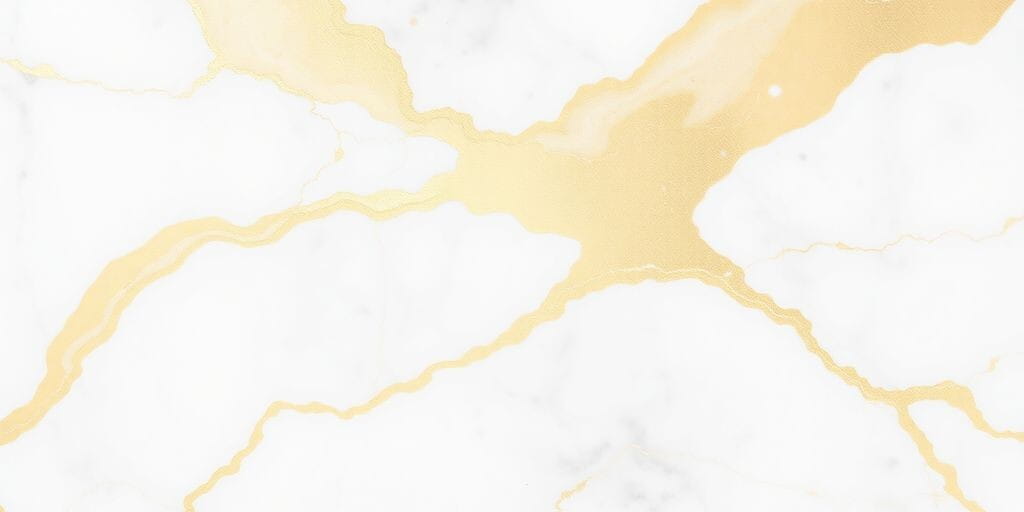
When you're selecting materials for your outdoor tile project, understanding mortar strength is key. This isn't just about picking the strongest option; it's about matching the mortar's capabilities to the specific demands of your project. The compressive strength of mortar, often measured in pounds per square inch (psi), tells you how much pressure it can withstand before breaking. This metric is vital for ensuring your tiles stay put, no matter what the elements or daily life throw at them.
Decoding Compressive Strength in Mortar
Compressive strength, or psi, is the measure of a mortar's ability to resist crushing forces. Think of it as the mortar's backbone. Higher psi means it can handle more weight and pressure. For outdoor applications, this translates to resistance against foot traffic, furniture, and even the freeze-thaw cycles common in many climates. Choosing the right psi is about balancing strength with other important properties like flexibility and adhesion.
When Lower PSI Mortars Excel
It might seem counterintuitive, but lower psi mortars aren't necessarily inferior. In fact, mortars with a lower compressive strength often boast superior adhesive and sealing powers. This makes them excellent choices for applications where flexibility and a strong bond to the substrate are more critical than sheer load-bearing capacity. For instance, certain types of natural stone, like limestone, benefit from the gentler, more forgiving nature of lower-strength mortars. These can help prevent the stone from cracking under stress.
The Importance of Matching PSI to Project Needs
Selecting the correct psi is not a one-size-fits-all decision. A mortar that's too strong for a delicate application could cause the tile or stone to crack. Conversely, a mortar that's too weak might not hold up under heavy use or harsh weather. For example, a patio that sees a lot of foot traffic and furniture will need a different psi rating than a decorative garden wall. Always consider the intended use, the type of tile or stone, and the environmental conditions.
High PSI Mortars for Demanding Applications
For projects that require maximum durability and load-bearing capability, high psi mortars are the go-to. These are the workhorses designed for situations where significant pressure is expected. Think about driveways, foundations, or retaining walls that need to withstand substantial weight and lateral forces. Type M mortar, for instance, offers exceptional strength, often reaching 2,500 psi, making it suitable for the most demanding outdoor structures. When you need a bond that won't quit, high psi is the answer.
Low PSI Mortars for Superior Adhesion
On the flip side, low psi mortars are prized for their excellent adhesion and flexibility. While they might not be the first choice for a driveway, they are perfect for applications where the material being bonded is more delicate or where movement due to temperature changes is a concern. These mortars create a strong, yet slightly yielding, bond that can absorb minor shifts without compromising the installation. This makes them ideal for certain natural stones and decorative masonry work.
How PSI Affects Mortar Performance Outdoors
Outdoor environments present unique challenges. Freeze-thaw cycles, moisture, and temperature fluctuations can all impact mortar performance. Mortars with a higher air content, often found in lower psi mixes, can accommodate the expansion of water as it freezes, preventing cracking. The psi rating also influences how well the mortar resists water penetration and chemical attack. Understanding how psi relates to these environmental factors is crucial for long-term durability.
Selecting the Right Strength for Your Patio
Your patio is a prime example of an outdoor application where mortar strength matters. It needs to withstand foot traffic, furniture, and potentially the weight of planters or grills. For a standard patio, a medium-strength mortar like Type N or Type S is often recommended. These offer a good balance of strength, flexibility, and adhesion to handle the typical stresses of a patio environment. If you're laying heavy stone pavers, you might lean towards a stronger option.
The Nuances of Mortar Strength Ratings
It's important to remember that psi is just one aspect of mortar performance. Other factors, such as flexibility, water retention, and resistance to chemicals, also play significant roles. Mortar types are classified (like Type N, S, and M) based on a combination of these properties, not just psi alone. Always consult the manufacturer's specifications and consider the overall performance characteristics when making your selection. For example, if you're working with materials like Atlantic Gray Marble 6X6 Polished or Honed Tile, understanding the specific needs of the stone is paramount.
Key Characteristics of Common Mortar Mixes
Understanding the typical psi ranges for common mortar types can guide your selection:
- Type N: Medium strength, around 750 psi. A versatile, general-purpose mortar suitable for many exterior applications, including walls and patios. It offers a good balance of strength and flexibility.
- Type S: Medium-high strength, typically 1,800 psi. Stronger than Type N, it's ideal for below-grade applications, retaining walls, and patios where higher lateral strength is needed.
- Type M: High strength, often 2,500 psi or more. This is the strongest option, reserved for heavy-duty applications like foundations, driveways, and structures facing extreme pressure.
- Type O: Low strength, around 350 psi. Primarily for interior, non-load-bearing projects and historic restoration where a gentle bond is required.
The Spectrum of Mortar Strengths Explained
Mortar strengths vary widely, from the gentle 350 psi of Type O to the robust 2,500+ psi of Type M. This spectrum allows for precise matching to project requirements. A lower psi mortar might be perfect for delicate historic brickwork, providing adhesion without damaging the old material. In contrast, a high psi mortar is necessary for structural elements that bear significant loads. The key is to avoid over-specifying or under-specifying the strength, ensuring optimal performance and longevity for your outdoor tile installation.
Identifying the Ideal Mortar for Your Application
To pinpoint the ideal mortar, ask yourself these questions: What kind of tile or stone am I using? What will the surface be subjected to (foot traffic, weather, weight)? Is it above or below grade? Answering these will point you toward the right mortar type and its corresponding psi. For instance, if you're installing travertine pavers in California, you'll need a mortar that can handle the local climate and expected wear.
How PSI Affects Mortar Performance Outdoors
Outdoor environments present unique challenges. Freeze-thaw cycles, moisture, and temperature fluctuations can all impact mortar performance. Mortars with a higher air content, often found in lower psi mixes, can accommodate the expansion of water as it freezes, preventing cracking. The psi rating also influences how well the mortar resists water penetration and chemical attack. Understanding how psi relates to these environmental factors is crucial for long-term durability.
Selecting the Right Strength for Your Patio
Your patio is a prime example of an outdoor application where mortar strength matters. It needs to withstand foot traffic, furniture, and potentially the weight of planters or grills. For a standard patio, a medium-strength mortar like Type N or Type S is often recommended. These offer a good balance of strength, flexibility, and adhesion to handle the typical stresses of a patio environment. If you're laying heavy stone pavers, you might lean towards a stronger option.
The Nuances of Mortar Strength Ratings
It's important to remember that psi is just one aspect of mortar performance. Other factors, such as flexibility, water retention, and resistance to chemicals, also play significant roles. Mortar types are classified (like Type N, S, and M) based on a combination of these properties, not just psi alone. Always consult the manufacturer's specifications and consider the overall performance characteristics when making your selection. For example, if you're working with materials like travertine pavers in California, understanding the specific needs of the stone is paramount.
The Vital Component for Bonding Masonry
Mortar is the critical element that holds your masonry together, providing the structural integrity that allows your outdoor tile project to stand the test of time. The strength of this bond, directly influenced by the mortar's psi and formulation, dictates the overall longevity and resilience of your installation. Choosing the correct mortar strength is not just about preventing immediate failure; it's about building for the future, ensuring your beautiful tiles remain securely in place for years to come.
Type N Mortar: A Versatile General-Purpose Choice
When tackling many outdoor tiling projects, Type N mortar often emerges as the go-to choice. It’s a real workhorse, favored by homeowners for its adaptability and reliable performance. If you're looking for a mortar that can handle a variety of conditions, especially for exterior walls, Type N is definitely worth considering. It’s a solid performer that balances strength with a bit of flexibility, making it suitable for many common applications. You can find quality Type N mortar mixes at most home improvement stores, like Quikrete 60 lb. Type N Mortar Mix, which is a pre-blended option ready for use.
The All-Around Performer for Most Projects
Type N mortar is celebrated for its versatility. It’s a general-purpose mix that works well in a wide array of situations, from exterior walls to interior load-bearing applications. Its balanced properties make it a safe bet for many DIYers and professionals alike.
Ideal for Exterior Walls Facing Harsh Weather
This mortar type is particularly well-suited for exterior walls. It’s designed to withstand the challenges of changing weather, including high heat and low temperatures. This resilience means your tiled surfaces are more likely to last, even when exposed to the elements.
Understanding the Composition of Type N Mortar
The typical mix for Type N mortar involves one part Portland cement, one part lime, and six parts sand. This ratio gives it a medium strength, generally around 750 psi. This composition provides a good balance, offering enough strength for many applications without being overly rigid.
Its Medium Strength and Application Suitability
With a compressive strength of about 750 psi, Type N mortar offers a medium level of durability. This makes it suitable for a broad range of projects, including laying brick, block, or stone for exterior walls and patios. It’s strong enough to hold materials securely but flexible enough to accommodate minor shifts.
Why Homeowners Favor Type N Mortar
Homeowners often choose Type N mortar because it’s user-friendly and widely available. Its predictable performance and ease of use make it a popular choice for general home improvement projects. It’s a reliable option that doesn’t require highly specialized knowledge to apply correctly.
Performance in High Heat and Severe Conditions
Type N mortar is engineered to perform well even in demanding environmental conditions. Its ability to handle high heat and severe weather means it’s a dependable choice for outdoor projects in various climates. This durability is key to the longevity of your tiled surfaces.
The Balance of Strength and Flexibility
One of the key advantages of Type N mortar is its blend of strength and flexibility. Unlike higher-strength mortars, Type N has a bit more give, which can help prevent cracking, especially when used with softer stones like limestone. This characteristic is vital for maintaining the integrity of your installation over time.
When Type N is the Preferred Mortar
Type N mortar is the preferred choice for most above-grade exterior applications, including walls and decorative elements. It’s also a good option for interior load-bearing walls. If your project involves standard brick or stone work exposed to the weather, Type N is likely your best bet. For those considering materials like travertine pavers California, Type N can be a suitable option.
Type S Mortar: Strength for Below-Grade Applications
When your outdoor tiling project involves elements that meet the ground, like patios or retaining walls, Type S mortar is the professional's choice. It offers a significant step up in strength from Type N, making it ideal for situations where your tiles need to withstand more than just the elements. Think of it as the workhorse for projects that bear weight or face lateral pressure.
When to Choose Type S Mortar
Type S mortar is your go-to for any application where the masonry will be in contact with the soil or subject to significant ground-level forces. This includes:
- Retaining walls
- Patios and walkways
- Foundations
- Pool decks
- Any structure that's partially or fully below grade
Its Superior Strength for Ground-Level Projects
With a compressive strength typically around 1,800 psi, Type S mortar provides a robust bond that can handle the pressures associated with ground contact. This strength is crucial for preventing movement, cracking, or failure in outdoor installations that experience foot traffic, soil pressure, or freeze-thaw cycles. It’s a reliable choice for ensuring the longevity of your tiled surfaces.
Ideal for Retaining Walls and Patios
For retaining walls, the lateral strength of Type S mortar is a major advantage. It helps the wall resist the outward pressure of the soil it holds back. Similarly, for patios and walkways, its durability means it can handle the constant wear and tear of daily use, resisting cracking and shifting even under heavy loads. If you're looking for travertine pavers California that will last, Type S is the mortar to consider.
Understanding the Composition of Type S Mortar
Type S mortar is generally composed of Portland cement, hydrated lime, and sand in specific ratios, often around two parts Portland cement, one part hydrated lime, and nine parts sand. The higher proportion of Portland cement compared to Type N contributes to its increased strength and durability. The lime content also provides a degree of flexibility, which is beneficial in outdoor applications.
High Lateral Strength for Seismic Areas
In regions prone to seismic activity, the high lateral strength of Type S mortar is particularly important. It provides better resistance to the forces generated during an earthquake, helping to maintain the structural integrity of the tiled structure. This makes it a safer and more reliable option for these areas.
The Role of Lime Concentration in Type S
The lime in Type S mortar plays a key role in its performance. While it contributes to strength, it also provides a degree of plasticity and workability. This balance means the mortar is strong enough for demanding applications but still offers enough flexibility to accommodate minor movements without cracking, a common issue in outdoor settings.
Applications Where Type S Excels
Type S mortar truly shines in applications that demand more than just aesthetic appeal. Its strength and resilience make it perfect for:
- Outdoor kitchens and entertainment areas
- Steps and landings
- Water features and pool surrounds
- Any project where durability against the elements and ground pressure is a priority
Meeting the Demands of Outdoor Structures
When you choose Type S mortar, you're investing in a product that's built to last. It provides the necessary support and adhesion for tiles and masonry in challenging outdoor environments. For projects that require a strong, reliable bond that can withstand the rigors of nature and use, Type S mortar is the clear winner.
Type M Mortar: Unmatched Strength for Heavy-Duty Needs
When your outdoor project demands the absolute highest level of strength and durability, Type M mortar stands ready. This isn't your everyday mortar; it's engineered for the most rigorous applications where structural integrity is non-negotiable. Think driveways that need to withstand constant vehicle traffic, foundations that bear immense weight, or retaining walls that face significant soil pressure. Type M mortar is the powerhouse of the mortar world, built to last.
The Pinnacle of Mortar Compressive Strength
Type M mortar boasts the highest compressive strength, often reaching an impressive 2,500 psi. This makes it the top choice for projects that require maximum load-bearing capacity. It's formulated with a higher proportion of Portland cement compared to other types, giving it that superior toughness. This mortar is designed to perform where others simply won't.
When Unmatched Strength is Paramount
For applications like heavy-duty foundations, load-bearing walls, and driveways, Type M is the go-to. Its robust nature ensures it can handle extreme pressures, including lateral loads and seismic activity, providing a stable and enduring base for your construction. If your project involves significant weight or stress, Type M is the only sensible option.
Composition and Characteristics of Type M
Typically, Type M mortar is a mix of three parts Portland cement, one part hydrated lime, and 12 parts sand. This specific ratio contributes to its exceptional strength. However, this high cement content can make it less flexible and potentially lead to poorer adhesion compared to softer mortars. Its low lime concentration is a key factor in its rigidity.
Best Suited for Foundations and Driveways
When you're laying down travertine pavers California for a driveway or constructing a solid foundation, Type M mortar provides the necessary support. It's also the preferred choice for retaining walls and any structure that will be subjected to substantial ground pressure or heavy traffic. Its strength prevents cracking and failure under stress.
Considerations for Low Lime Concentration
The lower lime content in Type M mortar, while contributing to its strength, means it's less forgiving. It can be more prone to cracking if not applied correctly or if the substrate experiences significant movement. This is why it's often recommended for below-ground applications where it's more protected and supported.
The Trade-offs of Extreme Strength
While Type M offers unparalleled strength, it's important to understand its limitations. Its reduced flexibility means it's not ideal for applications where movement is expected, such as on flexible substrates or in areas prone to significant temperature fluctuations. For such cases, a more flexible mortar might be a better fit.
Applications Requiring Maximum Load Bearing
Any project where the mortar will bear significant weight or resist substantial forces benefits from Type M. This includes structural elements, heavy paving, and foundations. It's the workhorse for projects that demand the utmost in stability and resilience.
Why Type M is Reserved for Specific Projects
Due to its extreme strength and lower flexibility, Type M mortar isn't a universal solution. It's reserved for those heavy-duty, load-bearing applications where its properties are truly needed. For lighter tasks or decorative work, other mortar types, like Type N or S, might be more appropriate and easier to work with.
Exploring Other Mortar Types: Niche Applications
Type O Mortar for Interior and Restoration
For interior projects, especially on non-load-bearing walls above ground, Type O mortar is a solid choice. It offers about 350 psi of compressive strength. While not as strong as other types, it's easy to work with and great for repairs. It’s a good option for sandstone and other materials that don’t need a super strong bond. However, its use outside is limited, particularly in windy areas.
The Role of Type K in Historic Masonry
When dealing with historic buildings, Type K mortar is the way to go. It’s made for restoration projects and won’t damage older masonry. With a low compressive strength of around 75 psi, it’s gentle on existing structures. It’s not typically used for new builds but is perfect for preserving the past.
When to Consider Less Common Mortar Types
Sometimes, standard options just won't cut it. Less common mortar types are designed for very specific jobs. Think about unique stone types or projects that have special requirements. Always check the compatibility of the mortar with your materials.
Understanding the Limitations of Each Type
Every mortar type has its strengths and weaknesses. Type M is super strong but can be brittle. Type N is versatile but might not be enough for heavy loads. Knowing these limits helps you pick the right one. For example, you wouldn't use Type O on an exterior patio.
Mortar for Specific Stone Types
Different stones need different mortars. Softer stones, like some limestones, pair well with Type N mortar because it’s a bit more flexible. Harder stones or those in high-stress areas might need a stronger mix. Getting this right prevents cracking and ensures a lasting installation. If you're looking to buy marble tiles online in the USA, make sure you match them with the appropriate mortar.
The Importance of Material Compatibility
It’s vital that your mortar works well with your tiles or stones. Using the wrong mortar can lead to failure, like cracking or debonding. Always check the manufacturer’s recommendations for both your tiles and your mortar. This is especially true when working with materials like travertine pavers in California.
Evaluating Mortar for Non-Load-Bearing Walls
For walls that don't carry much weight, like interior decorative walls, a lower-strength mortar like Type O is often sufficient. It’s easier to apply and more forgiving. This makes it a good choice for DIYers working on interior projects.
Specialized Mortars for Unique Projects
Beyond the standard types, there are specialized mortars for unique situations. These might include mortars with specific additives for extreme temperatures or unique bonding agents. If your project is unusual, it’s worth researching these specialized options or consulting with a professional.
Beyond Cementitious: Epoxy Mortar Considerations
When your outdoor tile project demands the absolute best in durability and resilience, epoxy mortar steps into the spotlight. Unlike traditional cement-based options, epoxy mortar offers a unique set of properties that make it a champion for challenging applications. It’s a high-performance adhesive that can truly transform the longevity and integrity of your tiled surfaces.
The Unique Properties of Epoxy Mortar
Epoxy mortar is a three-part system, typically consisting of a resin, a hardener, and a powder. This composition creates an incredibly strong, waterproof, and chemically resistant bond. This makes it an excellent choice for areas exposed to harsh chemicals or significant moisture.
When Epoxy Mortar is the Right Choice
Consider epoxy mortar for areas that face heavy traffic, chemical spills, or extreme temperature fluctuations. It’s ideal for commercial kitchens, industrial settings, or even high-end residential patios where superior performance is non-negotiable. If you're installing tiles in areas prone to staining or requiring frequent, robust cleaning, epoxy is your go-to.
Its Strength and Chemical Resistance
Epoxy mortar boasts exceptional mechanical strength, far surpassing many cementitious options. Its resistance to a wide range of chemicals means it won't break down when exposed to common household cleaners, oils, or other substances. This resilience is key for maintaining the integrity of your outdoor tiling over time.
Working with Epoxy: Mixing and Curing
Working with epoxy requires precision. The three components must be mixed in exact ratios according to the manufacturer's instructions. The curing process is also temperature-dependent; warmer conditions speed it up, while cooler temperatures slow it down. This means careful planning of your installation schedule is necessary.
The Advantages of Fast Setting Times
One of the significant benefits of epoxy mortar is its rapid setting time. This allows for grouting to occur much sooner than with traditional thin-set, potentially speeding up your project timeline. You can often grout tiles within hours of installation.
Potential Drawbacks of Epoxy Mortar
While powerful, epoxy mortar isn't without its challenges. It generally comes with a higher price tag than cement-based mortars. Additionally, the mixing process can be more complex, and the material has a noticeable odor during curing. The fast set time, while an advantage, also means a shorter working window for adjustments.
Cost and Application Complexity
The increased cost reflects the advanced performance epoxy mortar provides. Its application complexity also means it's often best handled by experienced professionals. If you're looking for a straightforward DIY solution, other mortars might be more suitable. However, for critical applications, the investment is often well worth it.
Ideal Scenarios for Epoxy Mortar Use
Think of epoxy mortar for areas like pool decks, spa surrounds, or any outdoor space where water resistance and extreme durability are paramount. It's also a solid choice for installing specialty tiles, such as glass or metal mosaics, that might require a more specialized adhesive. For those seeking the ultimate in performance, especially when dealing with demanding environments, epoxy adhesives are a top consideration.
Large Format Tiles and Their Specific Mortar Needs
When you’re working with large format tiles, the game changes. These aren't your standard 12x12 squares; we're talking about tiles with sides exceeding 15 inches. These larger, heavier pieces demand a specialized mortar to ensure a successful and lasting installation. Standard mortars just don't have the right stuff to handle the weight and potential for unevenness that comes with big tiles.
Defining Large Format Tiles
Simply put, large format tiles are those where at least one dimension measures over 15 inches. Think of those impressive porcelain slabs or grand stone pieces that make a real statement.
Why Standard Mortar May Not Suffice
Regular mortars can struggle to provide adequate support for the increased weight of large format tiles. This can lead to issues like cracking or shifting over time. Plus, any slight imperfections in the substrate can become magnified with larger tiles, creating an uneven surface if the mortar isn't up to the task.
The Formulation of Large Format Mortar
Mortars designed for large format tiles are specifically engineered. They often contain polymers and additives that improve their bonding strength, flexibility, and ability to accommodate the larger surface area. This specialized mix helps to prevent sagging and ensures a more uniform bond.
Supporting Increased Weight and Reducing Unevenness
This specialized mortar provides a robust foundation, distributing the weight of the large tiles more evenly. It also has a better capacity to fill voids and level minor substrate irregularities, which is key for a smooth finish.
Ensuring Proper Coverage for Large Tiles
Achieving full coverage is critical with large format tiles. The right mortar, combined with proper trowel technique, ensures that the entire back of the tile is in contact with the adhesive. This is vital for preventing hollow spots and ensuring maximum bond strength. For projects involving materials like Antico Onyx Travertine Versailles Pavers, proper coverage is non-negotiable.
Installation Techniques for Large Format Tiles
Using the correct trowel size is paramount. A larger trowel with deeper notches is typically recommended to apply a thicker, more consistent bed of mortar. The 'back-buttering' technique, applying a layer of mortar to the back of the tile itself, is also highly advised to guarantee complete coverage.
Matching Mortar to Tile Size and Weight
Always check the tile manufacturer's recommendations. They will often specify the type of mortar best suited for their large format products, considering the tile's material, thickness, and weight.
Achieving a Flawless Finish with Large Tiles
When you get the mortar right, the result is a stunning, seamless surface. The correct mortar supports the visual impact of large format tiles, ensuring they lie flat, are securely bonded, and contribute to a sophisticated aesthetic for your outdoor space.
The Art and Science of Mixing Mortar Correctly
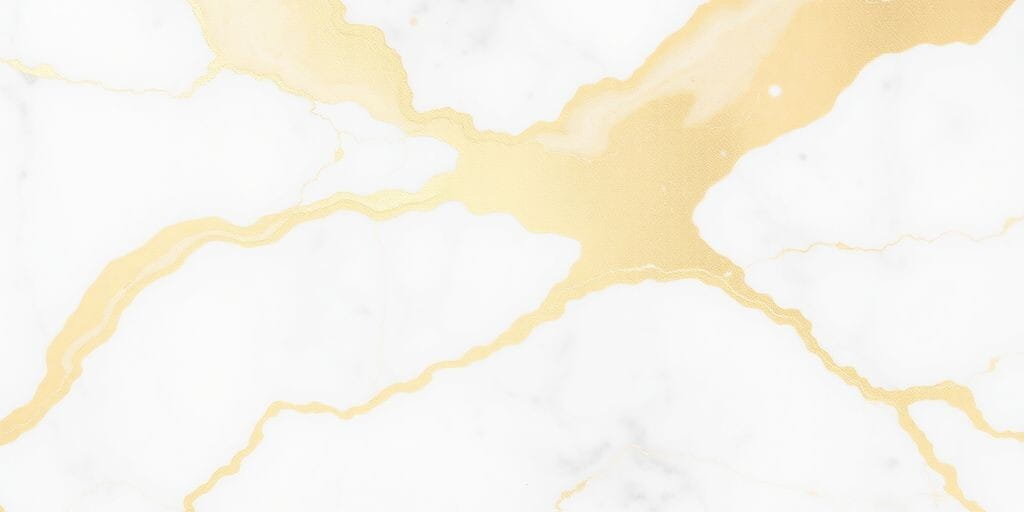
Getting the mortar mix just right is more than just a suggestion; it's a critical step for a durable outdoor tile installation. Think of it as the secret sauce that holds everything together, resisting weather and wear. When you mix your mortar, you're not just combining ingredients; you're creating the very foundation for your beautiful new patio or walkway. A properly mixed mortar ensures a strong bond, preventing tiles from shifting or cracking down the line. It’s about building it right the first time, so you can enjoy your outdoor space for years to come.
Essential Tools for Mortar Mixing
Before you start, gather your supplies. You'll need a clean mixing bucket, a sturdy mixing paddle (preferably one that attaches to a drill for larger batches), measuring tools, and of course, your chosen mortar mix. Having the right tools makes the process smoother and helps achieve that perfect consistency.
Achieving the Perfect Consistency
Consistency is key. You're aiming for a mix that's smooth, like peanut butter, and holds its shape without being too stiff or too runny. It should spread easily with your trowel but not sag or slump. Too much water weakens the mortar, while too little makes it hard to work with and can lead to poor coverage. The ideal consistency ensures maximum adhesion and a professional finish.
Step-by-Step Mixing Guide for Thin-Set
- Measure: Start by adding the correct amount of clean water to your mixing bucket. Always refer to the manufacturer's instructions for the precise water-to-powder ratio.
- Add Powder: Gradually add the thin-set mortar powder to the water while mixing. This prevents clumping and ensures even hydration.
- Mix: Use your mixing paddle to combine the ingredients thoroughly. Scrape the sides and bottom of the bucket to incorporate all the dry powder.
- Rest (Optional but Recommended): Some thin-set mortars benefit from a brief resting period (called slaking) after initial mixing. Check the product details.
- Re-mix: Give the mortar a final mix to achieve a smooth, lump-free consistency.
The Importance of Following Manufacturer Instructions
Every mortar product is a little different. The bag or box contains vital information about water ratios, mixing times, and working times. Ignoring these instructions is a common mistake that can lead to premature setting, weak bonds, or difficulty in application. Always read and follow the specific guidelines for the mortar you've purchased. This is especially true when working with specialized products, like those needed for Absolute Black Granite Mosaic Pencil Liner.
Understanding Mixing Ratios for Different Mortars
Mortar types vary, and so do their mixing requirements. Whether you're using a standard thin-set, a modified thin-set with latex additives, or a specific type like N, S, or M, the ratios of water, powder, and any additives will differ. Always consult the product packaging for the correct proportions. Getting these ratios wrong can significantly impact the mortar's performance and the longevity of your tile installation.
The Role of Water and Additives
Water is the activator for cementitious mortars. Too much water dilutes the cement, reducing strength and increasing shrinkage. Additives, like latex polymers in modified thin-sets, are often pre-measured in the powder or added separately to boost flexibility, adhesion, and water resistance. These are particularly important for outdoor applications where temperature fluctuations and moisture are common.
How Long is Mixed Mortar Usable?
Once mixed, mortar has a limited working time, typically around 90 minutes, though this can vary based on temperature and humidity. As it begins to set, it becomes less workable and its bonding capabilities diminish. Never add more water to mortar that has already started to set, as this compromises its integrity. It's best to mix only what you can use within the recommended timeframe to avoid waste and ensure optimal performance.
Safety Precautions During Mixing
Working with mortar involves cement, which can be caustic. Always wear safety glasses to protect your eyes from dust and splashes. Gloves are also recommended to prevent skin irritation. Ensure good ventilation, especially when working indoors or with products that have a strong odor. Proper safety gear is a small price to pay for a safe and successful project.
Calculating the Right Amount of Mortar for Your Project
Getting the mortar quantity right is key to a successful outdoor tile project. Too little, and you'll face frustrating delays and extra trips to the store. Too much, and you're wasting money and materials. Let's break down how to estimate your needs accurately.
Estimating Mortar Needs Accurately
Accurate estimation prevents project headaches. It means having enough material on hand without overspending. Think of it as a crucial step before you even start laying tiles.
Understanding Coverage Charts on Mortar Bags
Mortar bags are your best friend here. They usually have a coverage chart printed right on them. This chart tells you how many square feet a bag will cover, typically based on tile size and trowel notch size. Always check this information before you buy.
Factors Affecting Mortar Coverage
Several things influence how much mortar you'll use. The size of your tiles is a big one. Larger tiles generally need more mortar per square foot than smaller ones. The type of trowel you use also matters; a larger notch trowel will spread more mortar than a smaller one. The condition of your substrate – whether it's perfectly flat or a bit uneven – will also play a role.
How Tile Size Impacts Mortar Quantity
Larger format tiles, like those measuring over 15 inches on any side, require special consideration. They need a mortar formulated for their weight and size to prevent issues down the line. This specialized mortar might have slightly different coverage rates, so always consult the product's specific instructions.
The Difference in Coverage for Various Applications
Are you tiling a patio, a walkway, or a vertical wall? Each application can affect mortar coverage. For instance, tiling a floor might require a slightly thicker application than a wall. Always consider the specific demands of your outdoor space.
Purchasing Mortar in Appropriate Quantities
Once you have your estimate, it's time to buy. It's often wise to buy a little extra, maybe 10% more than your calculation. This accounts for any spills, mistakes, or unexpected needs. You can often buy mortar in 50-pound bags, but smaller sizes are available too. If you're looking for specific types, like for your travertine pavers California project, check with your supplier.
Avoiding Under or Over-Purchasing
Nobody wants to run out of mortar mid-project. That's why careful calculation is important. Conversely, buying far too much means wasted money and storage space. Aim for that sweet spot of just enough, with a small buffer.
Tips for Efficient Mortar Usage
To use your mortar efficiently, ensure your substrate is clean and properly prepared. Use the correct trowel size for your tiles. Mix the mortar to the right consistency – not too wet, not too dry. Proper mixing is as important as having the right amount. If you're working with large format tiles, consider using a high-quality adhesive designed for them, which you can often find at specialty tile shops.
Navigating the Purchase of Outdoor Tile Adhesive
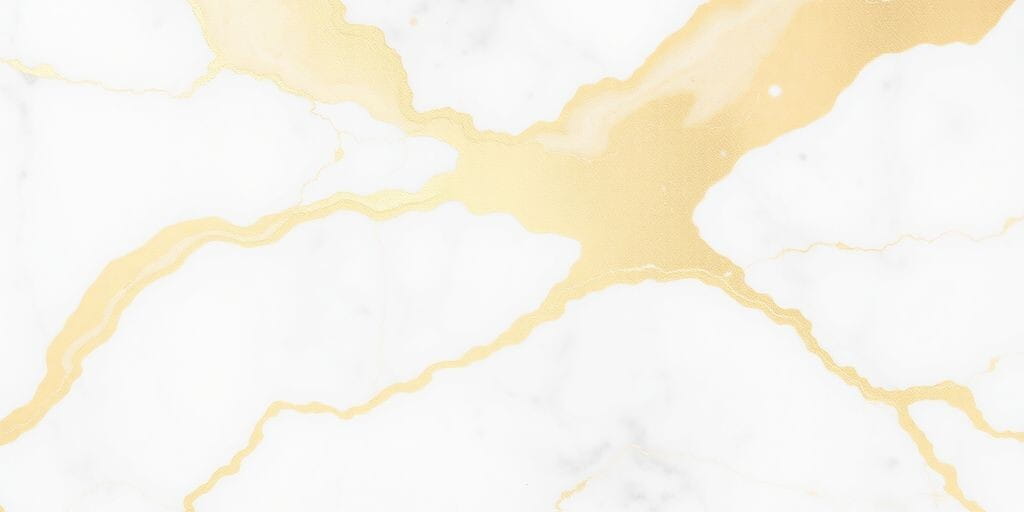
Selecting the correct adhesive is a key step for any outdoor tile project. It’s not just about sticking tiles down; it’s about creating a bond that lasts, resisting weather, and keeping your surfaces looking great for years. Many homeowners feel a bit overwhelmed when it comes to buying the right products, but with a little guidance, you can confidently pick the best adhesive for your needs. Choosing the right tile adhesive is crucial for a successful installation.
Where to Find Quality Mortar Products
Your search for the right adhesive will likely lead you to two main types of retailers: general home improvement stores and specialized tile shops. Both have their advantages. Home improvement centers offer convenience and a wide range of general building supplies. Specialty tile shops, however, often provide a more curated selection and staff with deeper knowledge about specific tiling products. For outdoor projects, it’s always wise to seek out the most informed advice.
Home Improvement Stores vs. Specialty Tile Shops
At a big box store, you’ll find brands like Versabond and Loctite PL Premium, which are popular choices for outdoor applications. These stores are great for grabbing everything you need in one trip. Specialty tile shops might carry more niche brands or offer a wider variety of modified thin-set mortars, sometimes with specific formulations for different climates or tile types. Consider what level of support you need when making your choice.
Communicating Your Project Needs to Sales Staff
When you talk to a sales associate, be clear about your project. Mention that it’s an outdoor installation, the type of tiles you’re using (e.g., natural stone, porcelain), and the substrate (like concrete or a wooden deck). This information helps them guide you to the most suitable product. For instance, if you’re looking for something for your patio in California, you’ll want an adhesive that handles heat well.
Key Questions to Ask Before Buying
Don’t hesitate to ask questions. Here are a few good ones:
- Does this adhesive have polymer additives for outdoor use?
- What is the coverage rate for my specific tile size?
- Is this product suitable for freeze-thaw cycles in my region?
- Are there any specific surface preparation steps I need to follow?
Understanding Product Labels and Specifications
Product labels are packed with information. Look for terms like "polymer-modified," "exterior use," and "high bond strength." The bag will also list coverage estimates, which can vary based on the trowel size used and the tile’s back pattern. Always check the manufacturer’s recommendations for your specific tile type.
Comparing Prices and Value
Prices for modified thin-set mortar typically range from $10 to $25 for a 50-pound bag. While it might seem like a significant cost, remember that a little goes a long way, and the quality of the adhesive directly impacts the longevity of your tile installation. Cheaper alternatives, like mastics, are generally not recommended for outdoor use due to their poor resistance to moisture and temperature changes.
The Benefits of Buying from Trusted Suppliers
Purchasing from reputable suppliers, whether a large chain or a local tile store, means you’re more likely to get a quality product and reliable advice. They stand behind their products and can help if any issues arise. This is especially important when you’re trying to buy marble tiles online USA, ensuring you get the right adhesive to match.
Ensuring You Get the Right Product for Outdoors
Ultimately, the goal is to select an adhesive that will perform reliably in an outdoor environment. Modified thin-set mortar is the industry standard for most outdoor tiling projects because of its strength and flexibility. It’s designed to handle the stresses of weather, temperature shifts, and foot traffic, making it a sound investment for your patio or walkway.
Alternative Adhesives for Specific Outdoor Tile Scenarios
While modified thin-set mortar is the go-to for most outdoor tiling projects, there are other adhesive options that might suit specific situations. Understanding these alternatives can help you make the best choice for your patio, walkway, or pool deck.
Exploring Polyurethane-Based Adhesives
Polyurethane-based adhesives offer a strong, flexible bond that can be beneficial in outdoor applications. These adhesives are known for their excellent adhesion to a variety of substrates, including concrete and wood. They are also quite resistant to moisture and temperature fluctuations, making them a solid choice for exterior use. If you're looking for a robust bonding agent, consider exploring these options.
When PL Adhesive Might Be Suitable
PL adhesive, a type of polyurethane-based construction adhesive, is a noteworthy alternative. It's often packaged in a caulking tube, making it easy to apply. Its thick consistency is ideal for setting tiles, and it performs well in all outdoor conditions. For smaller projects or specific repairs, PL adhesive can be a practical choice.
The Strength and Cost of PL Adhesive
PL adhesive is recognized for its significant strength, often surpassing that of standard construction adhesives. While it can be more expensive than traditional thin-set mortar, its performance in demanding outdoor environments often justifies the cost. For projects where a superior bond is paramount, the investment in PL adhesive can pay off in the long run.
Using Adhesives for Tile Repairs
When a few tiles come loose on your outdoor patio or walkway, reaching for a specialized adhesive can be a quick and effective solution. Instead of redoing a large section, a strong, fast-setting adhesive can secure individual tiles, restoring the integrity of your surface. This is where products like PL adhesive shine, offering a targeted fix.
Considering Construction Adhesives for Small Projects
For very small outdoor tiling jobs, such as a small accent area or a few stepping stones, a high-quality construction adhesive might be considered. These adhesives are designed for general-purpose bonding and can offer a convenient solution when you don't need a large quantity of mortar. However, it's important to ensure the adhesive is rated for exterior use and can withstand the elements.
Understanding the Limitations of Alternatives
It's important to recognize that not all adhesives are created equal, especially when it comes to outdoor applications. Mastics and unmodified mortars, for instance, lack the necessary additives to resist moisture and temperature changes, which can lead to bond failure over time. Always verify that any alternative adhesive is specifically designed for exterior use and the type of tile you are installing.
When to Stick with Thin-Set Mortar
Despite the availability of alternatives, modified thin-set mortar remains the most reliable and widely recommended adhesive for the majority of outdoor tile projects. Its balanced properties, including excellent adhesion, flexibility, and resistance to weather, make it the industry standard for patios, walkways, and other exterior surfaces. For large-format tiles or areas with significant temperature swings, thin-set is often the safest bet.
Evaluating Non-Cementitious Bonding Agents
Non-cementitious bonding agents, such as epoxy mortars, offer unique advantages like rapid setting times and exceptional chemical resistance. While they can be suitable for certain specialized outdoor applications, they often come with a higher price tag and require more precise mixing and application techniques. For most standard outdoor tiling, the cost-effectiveness and ease of use of modified thin-set mortar make it the preferred choice. You can explore a diverse collection of tile adhesives, featuring both cementitious and epoxy-based formulations, at various retailers.
The Role of Grout in Your Outdoor Tile Installation
Grout: More Than Just Filling Gaps
Think of grout as the finishing touch that truly locks your outdoor tile project together. It’s not just about filling those small spaces between your beautiful travertine pavers California or intricate mosaics; it’s a vital component that contributes to the overall strength and longevity of your installation. Without the right grout, even the best mortar can falter under the stresses of outdoor living.
How Grout Reinforces Tile Bonds
Grout acts as a secondary adhesive, creating a solid, unified surface. It helps distribute weight and stress evenly across the tiles, preventing individual tiles from shifting or cracking under pressure. This is especially important for high-traffic areas like patios or walkways. A well-grouted surface means your tiles are less likely to loosen over time, maintaining that pristine look you worked so hard to achieve.
Preventing Chipping and Damage
Outdoor tiles face a lot more than just foot traffic. Freeze-thaw cycles, temperature swings, and even impacts from dropped items can put a strain on your installation. Grout fills the gaps, providing a protective buffer that absorbs some of this shock. This barrier helps prevent the edges of your tiles from chipping or breaking, keeping your surfaces looking sharp and new for longer. For those considering buy marble tiles online USA, proper grouting is key to preserving their natural beauty.
Understanding Grout Composition
Most grouts are cement-based, typically a mix of Portland cement, sand, and other additives. The type of sand used can vary, influencing the grout's strength and texture. For outdoor applications, it’s common to use sanded grout, which offers greater strength and durability compared to unsanded varieties. Some advanced formulations also include polymers for enhanced flexibility and water resistance.
Mixing Your Own Grout
While pre-mixed grouts are convenient, mixing your own can offer greater control over consistency and additives. A common ratio for DIY grout is one part Portland cement to two parts sand. If you're using a pre-mixed powder, a 1:1 ratio with water usually does the trick. Always follow the manufacturer's instructions precisely for the best results.
The Benefits of Adding Sealers to Grout
Sealers are a game-changer for outdoor grout. They penetrate the porous grout material, creating a barrier against moisture, stains, and dirt. This not only makes cleaning easier but also significantly improves the grout's resistance to weathering and freeze-thaw damage. Regular sealing is a simple yet effective way to protect your investment.
Choosing the Right Grout for Outdoor Use
For outdoor projects, especially those exposed to the elements, modified thin-set mortar is often the preferred choice for adhering tiles. However, the grout you select is equally important. Look for grouts specifically designed for exterior use, which often contain additives for improved flexibility and water resistance. Consider the color too; lighter grouts can show dirt more easily, while darker shades might fade over time. For a truly durable and beautiful finish, pairing the right grout with your chosen tiles, perhaps some elegant marb, is paramount.
Grout as a Complement to Mortar
While mortar provides the primary bond between the tile and the substrate, grout plays a crucial supporting role. It fills the voids, adds structural integrity, and protects the tile edges. Together, mortar and grout create a robust system that can withstand the demands of outdoor environments. Think of them as a team, each with a specific job to do to ensure your patio or walkway remains beautiful and functional for years to come.
Ensuring Longevity: Maintenance and Protection
Protecting Your Outdoor Tile Investment
Your beautiful outdoor tile project deserves to last. Proper care means your tiles and the mortar beneath them stay strong for years. Think of it as giving your investment a long, healthy life. Regular attention prevents small issues from becoming big problems. Consistent maintenance is key to preserving the beauty and integrity of your outdoor spaces.
The Importance of Grout Sealing
Grout lines are often the first place to show wear. They can absorb moisture and stains, leading to discoloration and potential damage to the underlying mortar. Sealing your grout creates a protective barrier. This barrier resists water penetration and makes cleaning much easier. It’s a simple step that makes a significant difference in the overall appearance and durability of your tiled surfaces. For the best results, consider sealing your grout annually.
How Sealers Enhance Durability
Sealers do more than just prevent stains. They penetrate the porous grout material, hardening it and making it more resistant to abrasion. This means less crumbling and cracking over time. For outdoor applications, especially in areas with freeze-thaw cycles, this protection is vital. It helps keep the grout strong and bonded to the tiles, preventing water from getting underneath and causing damage. Choosing the right sealer for your specific grout type is important.
Maintaining Mortar Integrity Over Time
While mortar is strong, it's not indestructible. Exposure to the elements, like harsh sun, rain, and temperature changes, can slowly degrade it. Look for signs of wear, such as crumbling edges or gaps between tiles. Addressing these issues promptly can save you from more extensive repairs later. If you notice loose tiles or cracked grout, it might be time for a mortar inspection.
Addressing Potential Issues Early
Don't wait until a small crack becomes a major problem. Regularly inspect your tiled areas. Check for loose tiles, cracked grout, or crumbling mortar. Early detection allows for simple repairs that can prevent widespread failure. For instance, repointing small areas of damaged mortar is far easier and cheaper than replacing an entire section of tiles. Keep an eye out for any changes after harsh weather.
Factors Affecting Mortar Degradation
Several factors can speed up mortar wear. These include constant exposure to moisture, especially in areas with poor drainage. Freeze-thaw cycles in colder climates can cause expansion and contraction, weakening the mortar. Heavy foot traffic or the weight of large planters can also put stress on the bond. Understanding these factors helps in taking preventative measures. For example, ensuring proper slope for drainage is critical for porcelain tiles used outdoors.
Tips for Long-Term Outdoor Tile Care
Here are some practical tips to keep your outdoor tiles looking great:
- Regular Cleaning: Sweep or wash your tiles regularly to remove dirt and debris that can abrade the surface.
- Weed Control: Prevent weeds from growing in the grout lines, as their roots can widen cracks.
- Seasonal Checks: Before winter and after, inspect for any damage that may have occurred.
- Prompt Repairs: Fix any loose tiles or damaged grout immediately.
- Consider a Top Coat: For extra protection, especially on patios, a clear, breathable sealer can add another layer of defense.
Preserving the Beauty of Your Tiled Surfaces
By following a consistent maintenance routine, you can ensure your outdoor tile project remains a beautiful and functional part of your home for many years. It’s about protecting your investment and enjoying the aesthetic appeal of your hard work without worry. Proper care transforms a good installation into a lasting masterpiece.
Troubleshooting Common Mortar Application Issues
Even the best laid plans can hit a snag, and when it comes to outdoor tiling, mortar application is a common place for things to go awry. But don't worry, most issues are fixable with the right approach. Understanding these common problems and their solutions can save you time, money, and a whole lot of frustration. Let's get your project back on track!
Dealing with Mortar That's Too Wet or Dry
Mortar consistency is key. If your mortar is too wet, it'll be soupy and won't hold its shape, leading to poor adhesion and potential tile slippage. Too dry, and it will crumble and be difficult to spread, also compromising the bond. The fix? For wet mortar, let it sit for a few minutes to allow some water to evaporate, or carefully add a small amount of dry mix. If it's too dry, gradually add a tiny bit of water while mixing until you reach the desired peanut butter-like consistency. Always mix in small batches to avoid this problem.
Addressing Uneven Mortar Application
An uneven mortar bed means your tiles won't sit flush, leading to an uneven surface and potential cracking down the line. This often happens when the trowel is held at inconsistent angles or when too much or too little mortar is applied. Use a notched trowel appropriate for your tile size and keep it at a consistent angle (usually 45 degrees) as you spread the mortar. For larger tiles, like those beautiful marble slabs you might buy online, a larger trowel with deeper notches might be necessary to ensure full coverage.
Preventing Cracking During Curing
Cracking can occur if the mortar dries too quickly, especially in hot or windy conditions. This rapid drying pulls moisture out of the mortar before it has a chance to fully cure and gain strength. To prevent this, mist the tiled surface lightly with water after application, especially on warm days. You can also cover the area with plastic sheeting to retain moisture. Proper surface preparation is also key for sealant adhesion and longevity on outdoor tiles and pavers. Applying sealant in unfavorable weather conditions should also be avoided.
What to Do About Loose Tiles
Loose tiles are a clear sign of poor adhesion, often caused by insufficient mortar, improper troweling, or applying tiles to a contaminated surface. If you catch it early, you might be able to carefully remove the tile, clean off the old mortar, and reapply fresh mortar. Ensure you're using the right type of mortar for your project; for instance, travertine pavers in California might need a specific mix. If many tiles are loose, it might indicate a larger issue with the substrate or the initial mortar application.
Identifying and Fixing Mortar Failures
Mortar failure can manifest as crumbling, cracking, or complete debonding. This is often due to using the wrong type of mortar for the application (like using an interior-only mortar outdoors), improper mixing, or inadequate curing. For example, Type N mortar is a versatile choice for many exterior walls, but for below-grade applications, Type S is superior. If you notice significant failure, it's best to remove the affected tiles and mortar, prepare the surface properly, and re-tile using the correct materials and techniques.
The Impact of Environmental Conditions on Application
Temperature, humidity, and wind all play a significant role. Applying mortar in freezing temperatures can prevent it from curing properly. Very high heat can cause it to dry too quickly, leading to cracking. High humidity can slow down the curing process. Always check the manufacturer's recommendations for ideal application temperatures and conditions. It's often best to work during cooler parts of the day or on overcast days.
Tips for a Smooth and Even Finish
Achieving a smooth finish is about technique. Use the correct trowel size and angle, spread the mortar evenly, and ensure consistent pressure when setting tiles. For larger tiles, back-buttering (applying a thin layer of mortar to the back of the tile) can help ensure full coverage and a strong bond. Don't be afraid to practice on a scrap piece first.
When to Call a Professional for Mortar Problems
If you're facing widespread mortar failure, extensive cracking, or if you're simply unsure about the best course of action, it's always wise to consult a professional tile installer. They have the experience and knowledge to diagnose the problem and implement the correct solution, ensuring the longevity and beauty of your outdoor tile project.
The Aesthetic Impact of Mortar Choice
How Mortar Color Can Influence Design
The color of your mortar is more than just a filler; it's a design element that can dramatically alter the final look of your tiled surface. Lighter mortars can make tiles appear brighter and more expansive, while darker shades can create a more grounded, sophisticated feel. Consider how a charcoal grout might make white marble tiles pop, or how a natural sand-colored mortar complements the earthy tones of travertine pavers California.
Matching Mortar to Tile and Surroundings
Selecting the right mortar color involves looking beyond the tiles themselves. Think about the overall aesthetic of your outdoor space. Does it lean towards modern minimalism, rustic charm, or classic elegance? The mortar should harmonize with the surrounding landscape, architecture, and even the color of adjacent materials. For instance, a cool-toned mortar might suit a contemporary patio, while a warmer hue could be perfect for a more traditional setting.
The Subtle Role of Mortar in Visual Appeal
Mortar plays a quiet but significant role in the visual narrative of your project. It defines the edges of each tile, creating a visual rhythm. The right mortar can unify a mosaic of different tile colors or textures, or it can subtly contrast to highlight individual pieces. This subtle interplay is key to achieving a polished and intentional design.
Considering Grout Color for a Cohesive Look
While this article focuses on mortar, it's worth noting that grout color is equally important, especially in outdoor tiling where grout lines are often more visible. The grout color works in tandem with the mortar to create the final appearance. Often, the same product serves as both mortar and grout, or they are chosen to complement each other. A well-chosen grout color can tie the entire installation together, creating a seamless and attractive finish.
Enhancing the Natural Beauty of Stone Tiles
For natural stone tiles, like granite or slate, the mortar choice can either enhance or detract from their inherent beauty. A mortar that is too stark or a color that clashes can fight with the stone's natural variations. Opting for a mortar that complements the stone's undertones, perhaps a soft grey for slate or a creamy beige for limestone, allows the stone's unique character to shine through. This is especially important when you buy marble tiles online USA and want to showcase their luxurious veining.
Mortar as a Design Element
Think of mortar not just as a functional adhesive but as a deliberate design choice. Its color, texture, and even the width of the grout lines (which are influenced by the mortar application) contribute to the overall aesthetic. This perspective shift allows for more creative possibilities in your outdoor tiling projects.
Achieving Specific Design Styles with Mortar
Different design styles call for different mortar approaches. A sleek, modern look might benefit from a fine-grained, dark-colored mortar with minimal, consistent grout lines. A more rustic or traditional style could be enhanced by a slightly coarser mortar in a natural tone, perhaps with slightly wider, more visible grout lines. The mortar becomes an integral part of achieving the desired visual effect.
The Interplay Between Tile and Mortar
Ultimately, the success of your outdoor tile project hinges on the harmonious interplay between the tiles and the mortar. It’s a partnership where each component supports the other. When chosen thoughtfully, the mortar doesn't just hold the tiles in place; it completes the design, adding depth, character, and longevity to your beautiful outdoor spaces. For durable and attractive outdoor flooring, consider non-slip tiles that offer both safety and style non-slip tiles.
Partnering with Experts for Your Outdoor Tile Project
When DIY Becomes Too Complex
Sometimes, even the most straightforward outdoor tile project can present unexpected challenges. When you find yourself wrestling with complex patterns, intricate cuts, or simply a scale that feels overwhelming, it's wise to consider professional help. Trying to force a project beyond your current skill set can lead to costly mistakes and a less-than-ideal final look. Recognizing when to step back and call in the pros is a sign of smart project management.
The Value of Professional Installation
Professional tile installers bring a wealth of knowledge and practical experience to your outdoor space. They understand the nuances of different mortar types, the importance of proper substrate preparation, and the techniques needed to ensure a durable, long-lasting finish. Their skill means your tiles will be set correctly, level, and securely, resisting the elements and daily wear. For those looking to buy marble tiles online in the USA or source travertine pavers in California, a professional can guide you to the best materials and ensure their proper installation.
Finding Qualified Tile Installers
Locating a skilled tile installer is key. Look for professionals with specific experience in outdoor installations, as these projects have unique requirements compared to indoor work. Check for certifications, ask for references, and review their past projects. A good installer will be transparent about their process and materials, perhaps even recommending specific products like a high-quality modified thin-set mortar for your patio.
Consulting Experts for Mortar Selection
Choosing the right mortar is critical for outdoor success. Factors like climate, the type of tile, and the substrate all play a role. An experienced professional can help you select the ideal mortar, whether it's a robust modified thin-set for a high-traffic patio or a specialized adhesive for a unique stone application. They can explain why certain mortars perform better in extreme temperatures or high-moisture environments, ensuring your investment is protected.
Leveraging Supplier Knowledge
Don't underestimate the knowledge held by your tile and material suppliers. Reputable tile shops and home improvement centers, like Home Depot, often have staff who can offer advice on product selection. They can guide you through the different types of mortars, adhesives, and grouts, helping you match the right product to your specific outdoor tile project. Asking the right questions at the point of purchase can save you a lot of trouble down the line.
Ensuring Your Project Meets Standards
Professionals are familiar with industry standards and best practices for outdoor tiling. This includes proper substrate preparation, correct mortar application, and appropriate curing times. Adhering to these standards is vital for preventing issues like cracking, efflorescence, or tile detachment due to freeze-thaw cycles or moisture. Their work helps guarantee that your tiled surfaces will not only look great but also perform reliably for years to come.
The Benefits of Expert Guidance
Expert guidance can prevent costly mistakes and ensure a superior outcome. From selecting the perfect tiles to the final grout sealing, professionals offer insights that can transform your project. They can advise on everything from the best way to lay large format tiles to the most effective methods for protecting your grout against stains and weather. This attention to detail makes a significant difference in the longevity and appearance of your outdoor tile installation.
Achieving Professional Results with Confidence
Partnering with experts allows you to achieve professional results with confidence. You gain peace of mind knowing that your outdoor tile project is being handled by skilled individuals who understand the materials and techniques required for success. This approach ensures your patio, walkway, or outdoor living area is not only beautiful but also built to last, providing enjoyment for years to come.
Finishing Your Outdoor Tile Project Strong
So, picking the right mortar might seem like a small detail, but it really makes a big difference for your outdoor tile project. It's the stuff that holds everything together, especially when the weather gets rough or people are walking all over it. We've looked at different types, like thin-set, which is usually a good bet for outside because it handles moisture and temperature changes well. Just remember to check what the tile maker suggests, as that's always a good starting point. Getting the mortar right means your beautiful new patio or walkway will last for years to come. If you're ever unsure, don't hesitate to reach out to the pros at Surfaces Galore; they can help you find exactly what you need to make your project a success.
Frequently Asked Questions
What type of mortar should be used for outdoor tile projects?
For outdoor tile projects, modified thin-set mortar is usually the best choice. This is because it has special ingredients, like latex, that help it stick really well and last a long time, even when the weather changes a lot. It can handle heat, cold, and moisture better than other types of mortar.
Why is choosing the right mortar so important for outdoor tiles?
Mortar is like the glue that holds your tiles in place. It's super important because it gives the tiles a strong base to sit on, making sure they don't move or come loose. Without the right mortar, your beautiful outdoor tiles might crack or fall apart over time, especially with all the weather they have to deal with.
What makes thin-set mortar a good option for outdoor tiling?
Thin-set mortar is great for outside because it creates a very strong connection between the tile and the surface it's attached to. It’s also good at resisting water and heat, which are common issues for outdoor areas. Plus, it can help make slightly uneven surfaces flat, giving you a smoother finish.
What does it mean for thin-set mortar to be 'modified'?
Modified thin-set mortar has added ingredients, usually latex, that make it stronger and more flexible. These additions help it stick better to the tiles and the surface, and they also help it handle changes in temperature without cracking or breaking. Think of it as an upgraded version of regular thin-set.
What is PSI, and why does mortar strength matter?
PSI stands for pounds per square inch, and it tells you how strong the mortar is. Different projects need different strengths. For example, a strong patio might need a higher PSI mortar to handle people walking on it, while a decorative wall might be fine with a lower PSI mortar that sticks really well.
When is Type N mortar a suitable choice for outdoor projects?
Type N mortar is a good all-around choice for many outdoor projects. It's strong enough to handle different weather conditions and is often used for exterior walls. It's a popular choice for homeowners because it's reliable for general use.
Why would someone choose Type S mortar for outdoor installations?
Type S mortar is stronger than Type N and is a good choice for projects that are on or below the ground, like patios or garden walls. It's built to handle more pressure, like from the soil pushing against a wall, and is good for areas that might have strong winds or even earthquakes.
What kind of outdoor projects require the strength of Type M mortar?
Type M mortar is the strongest type available. It's used for really heavy-duty jobs where the structure needs to hold a lot of weight, like foundations or driveways. Because it's so strong, it's usually reserved for specific situations where that extreme strength is absolutely necessary.
Do large format tiles need a different type of mortar?
When laying large tiles, which are bigger than 15 inches on any side, you need a special kind of mortar. This mortar is made to support the extra weight of these big tiles and help make sure the surface stays flat and even. Using the right mortar prevents the tiles from cracking or becoming uneven.
How important is it to mix mortar exactly as the instructions say?
Mixing mortar correctly is key to making sure it works properly. You need to follow the instructions on the bag carefully, adding the right amount of water to get a smooth, creamy texture, like thick frosting. Using too much or too little water can weaken the mortar.
Where can one purchase suitable mortar for outdoor tile projects?
You can buy mortar at home improvement stores or specialty tile shops. When you go, make sure to tell the person helping you that the tiles are for outside. They can then recommend the best type of mortar, like modified thin-set, that will hold up well against the weather and daily use.
Does grout have any importance in outdoor tile installations?
Yes, grout plays a role too! After the tiles are set with mortar, grout fills the small spaces between them. It helps to keep the tiles from moving, protects the edges from chipping, and adds to the overall look. Sealing the grout can also help protect it from stains and moisture.

 Best Selling Marble Collections
Best Selling Marble Collections
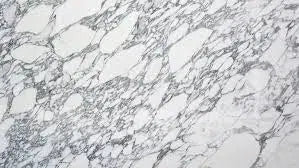 Arabescato Corchia
Arabescato Corchia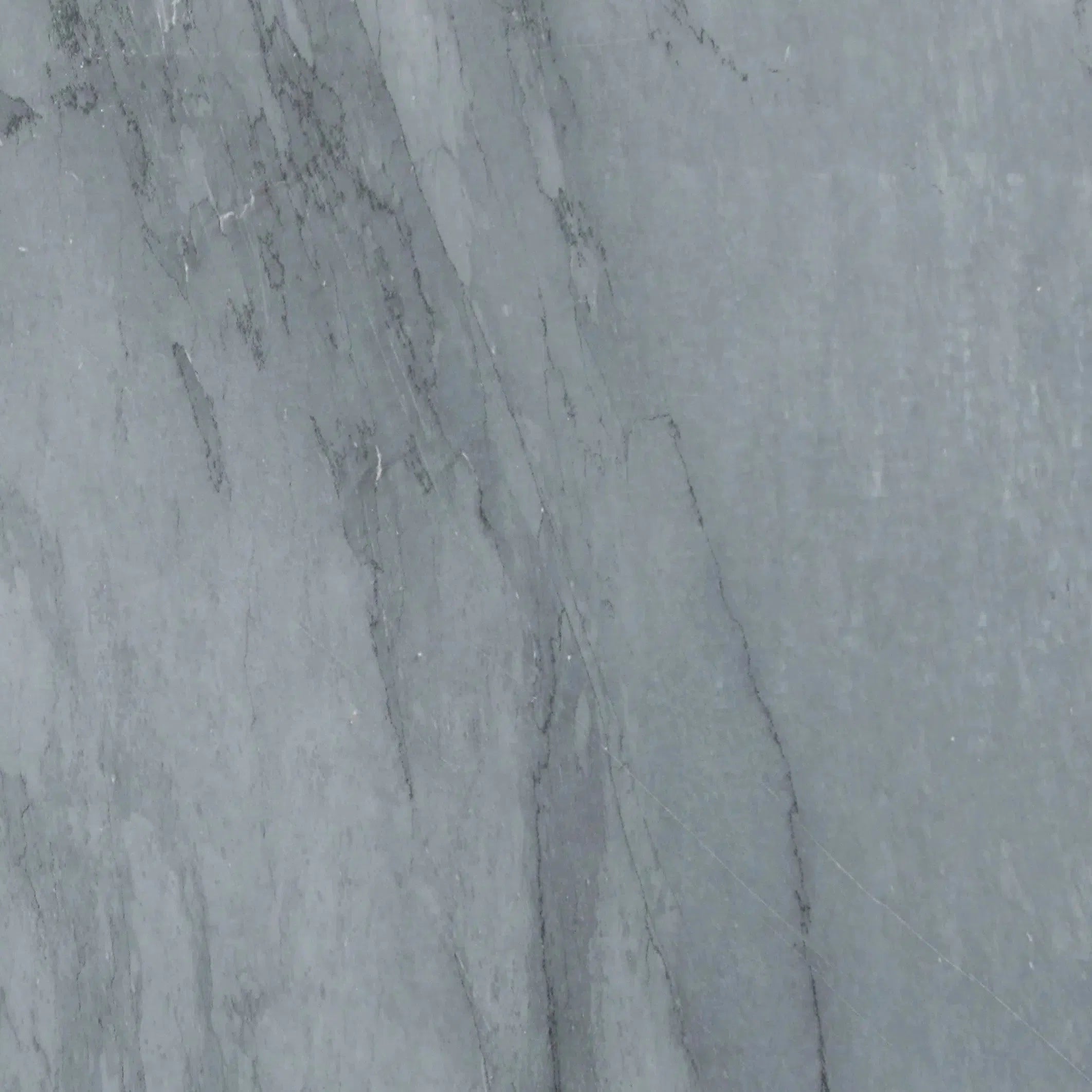 Bardiglio
Bardiglio Bianco Dolomite
Bianco Dolomite 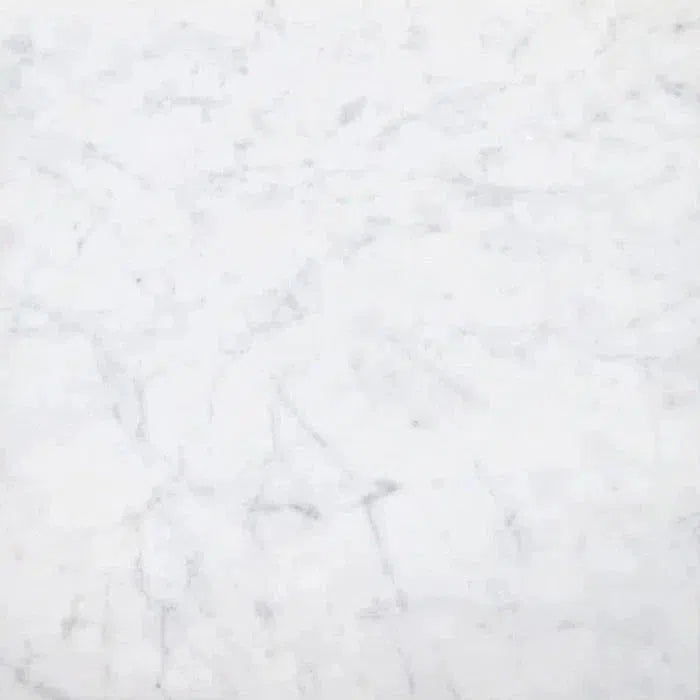 Carrara White
Carrara White 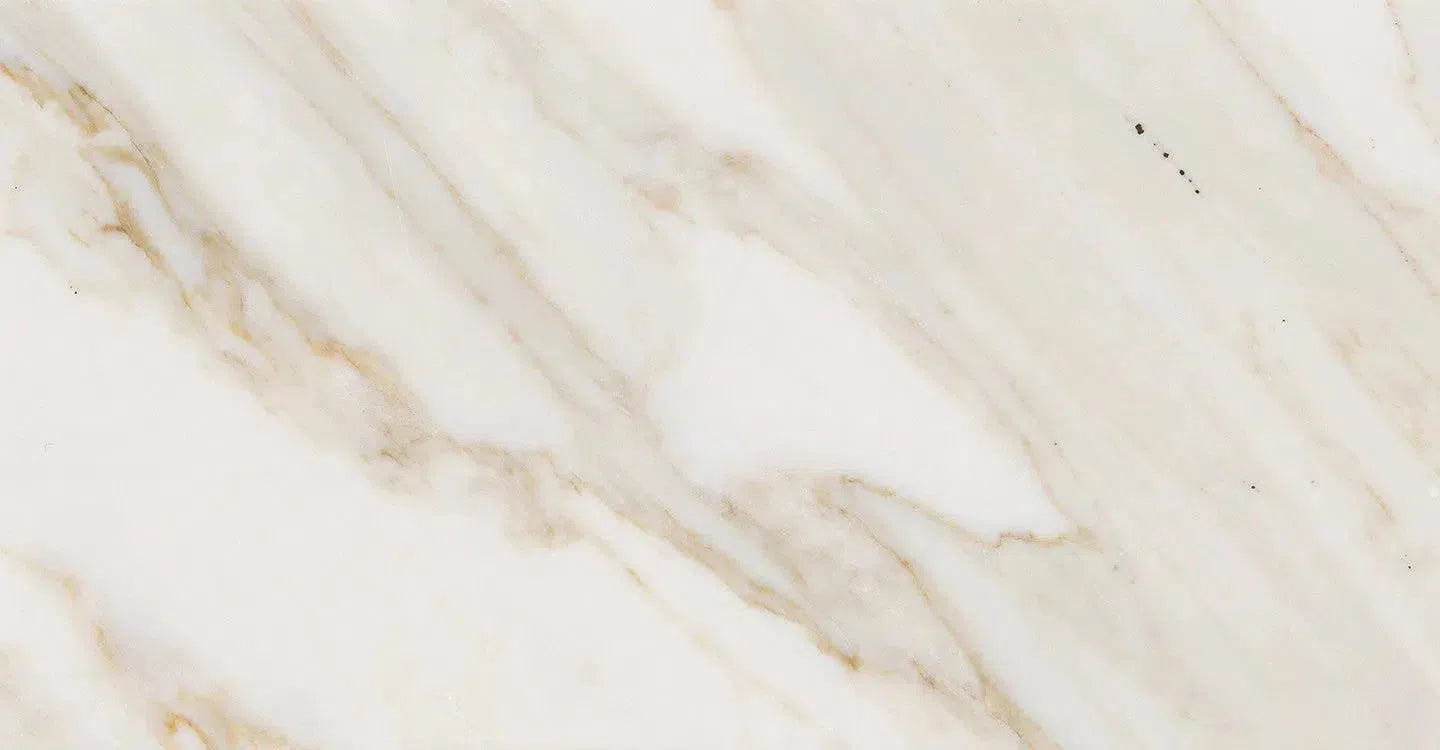 Calacatta Gold
Calacatta Gold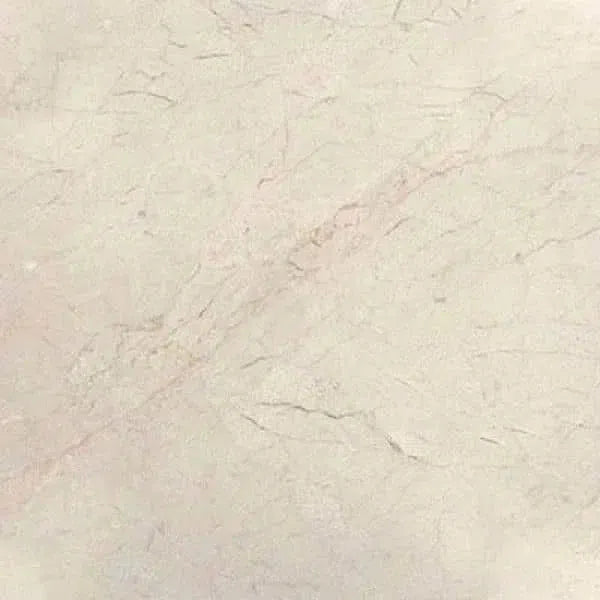 Crema Marfil
Crema Marfil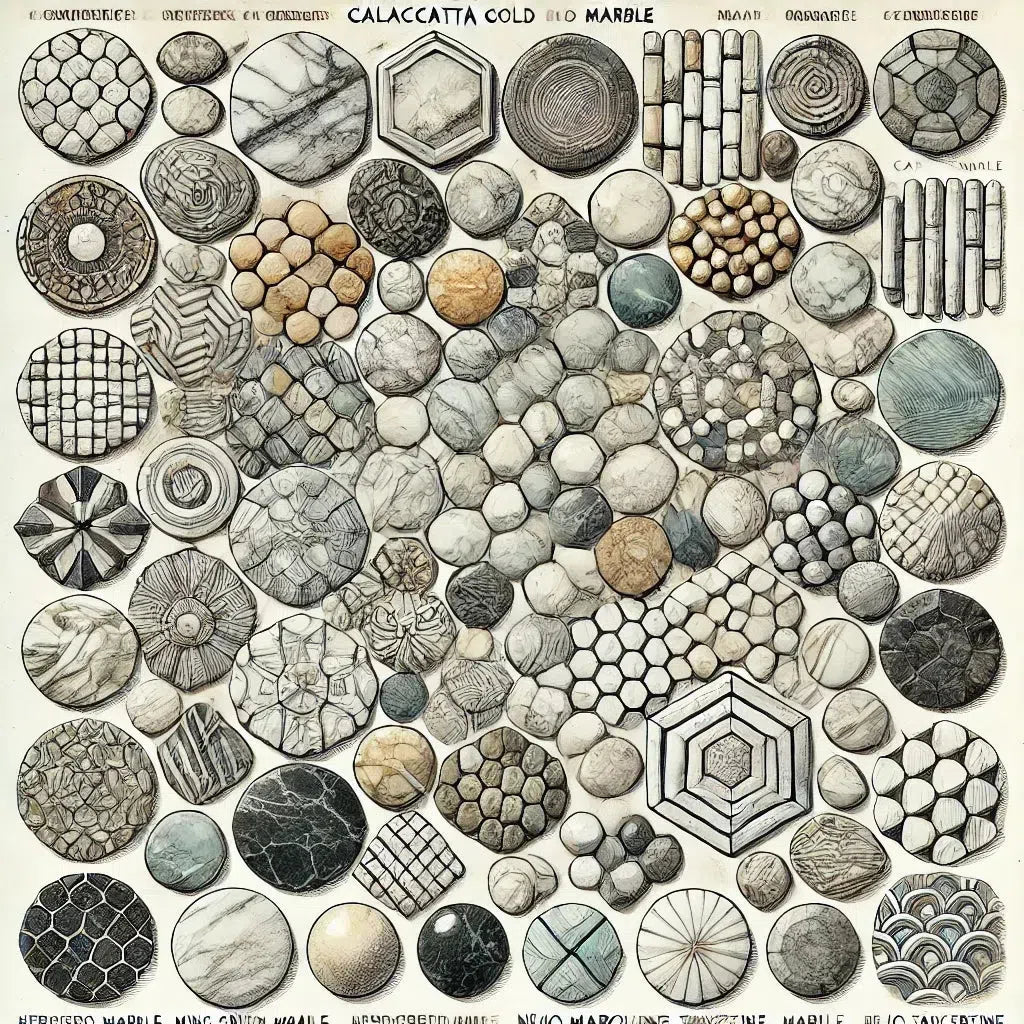 Custom Made Mosaic
Custom Made Mosaic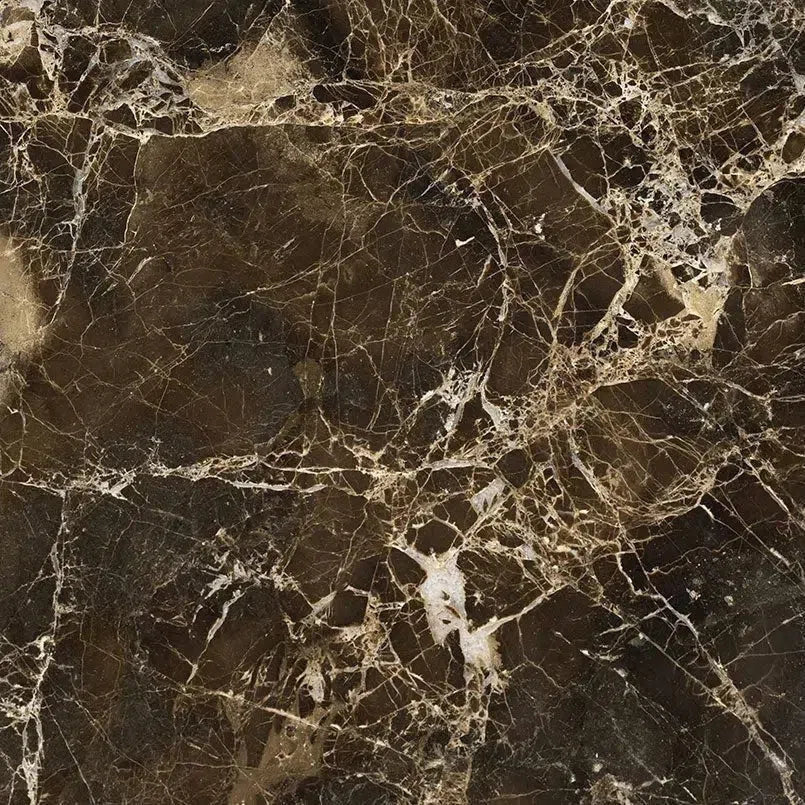 Emperador Dark
Emperador Dark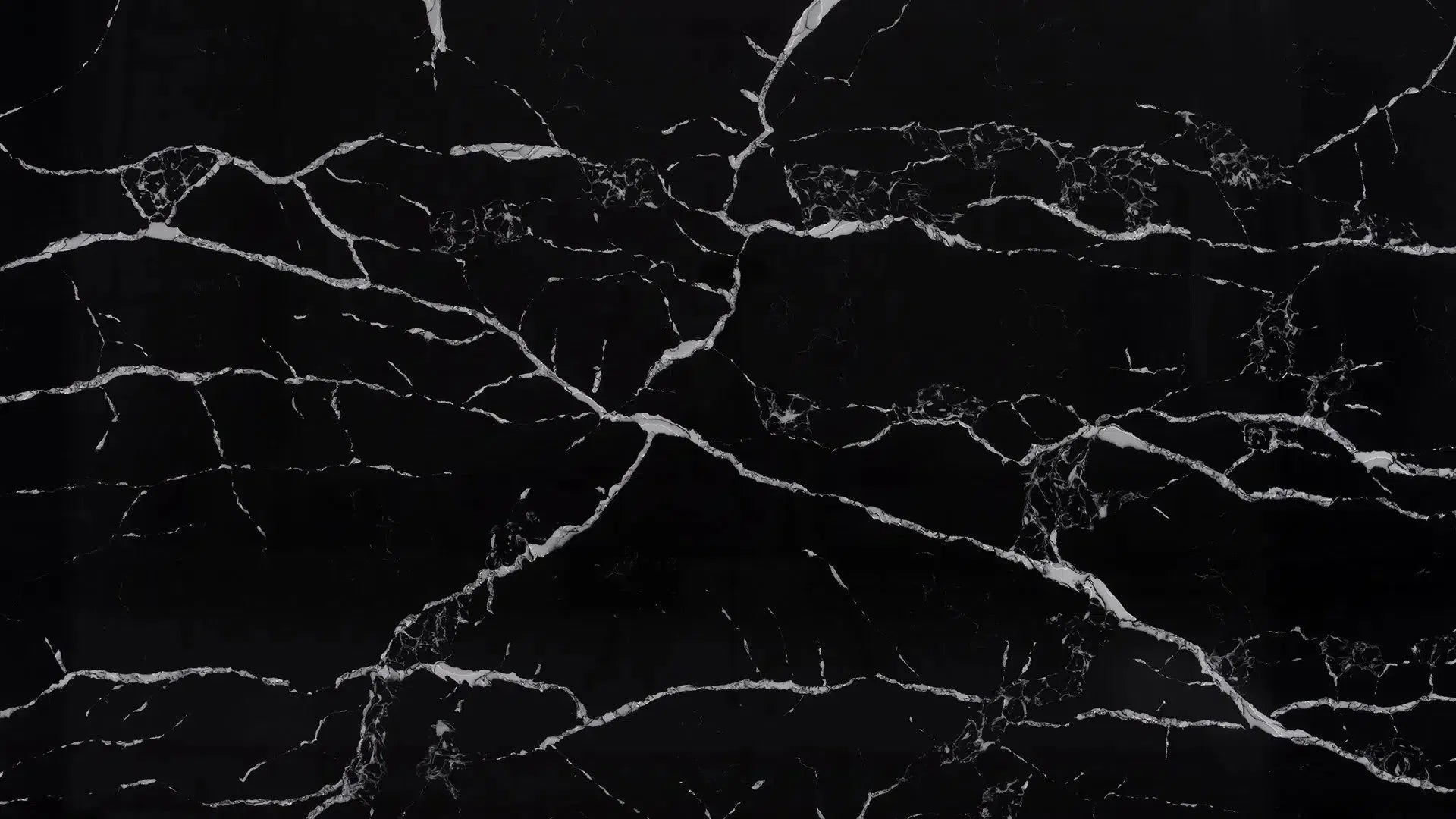 Nero Marquina
Nero Marquina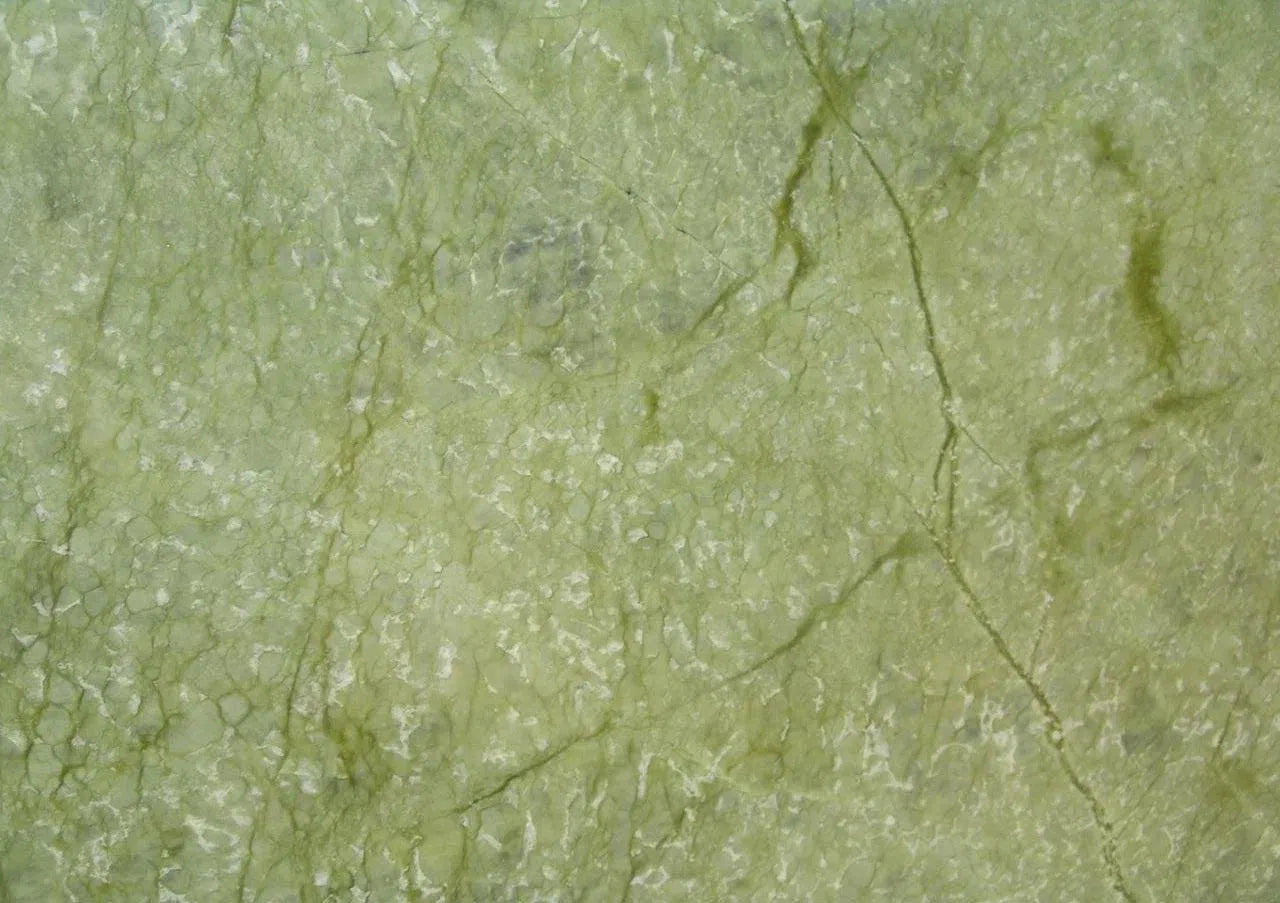 Ming Green Marble
Ming Green Marble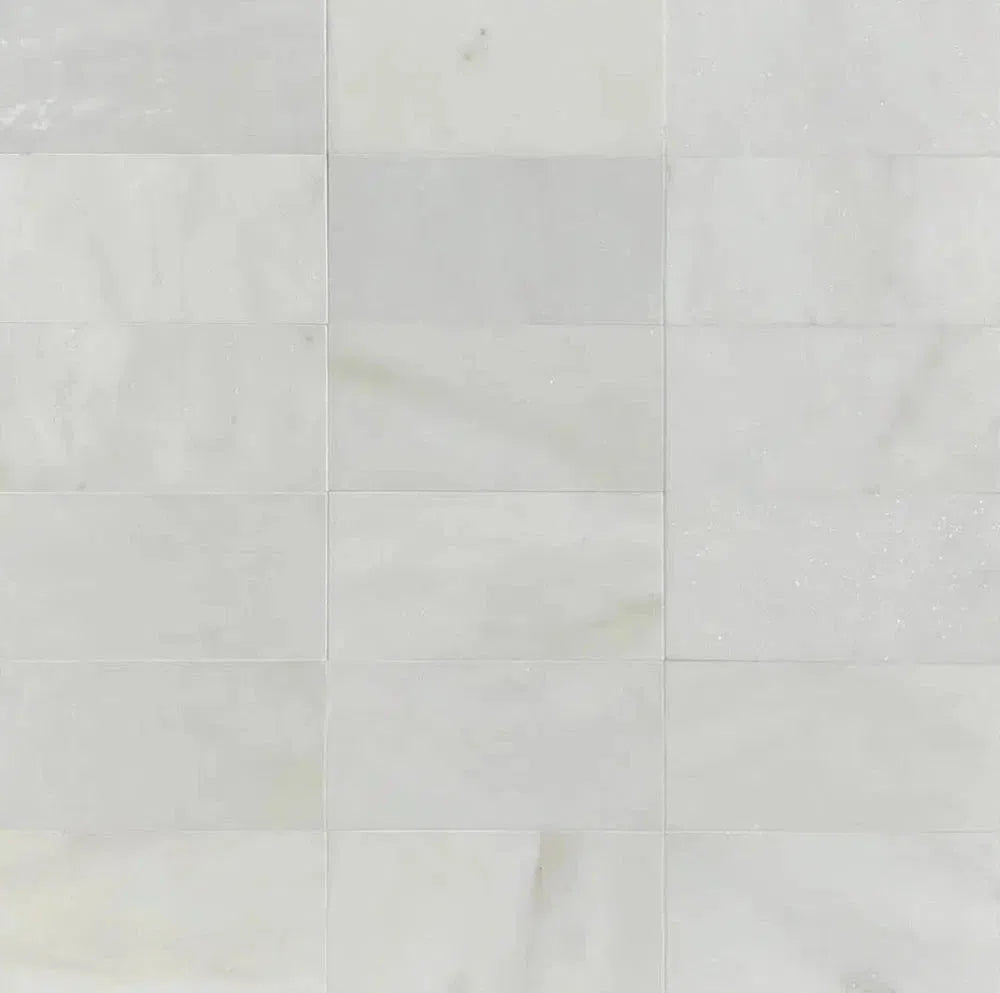 Oriental White Marble (Asian Statuary Marble)
Oriental White Marble (Asian Statuary Marble)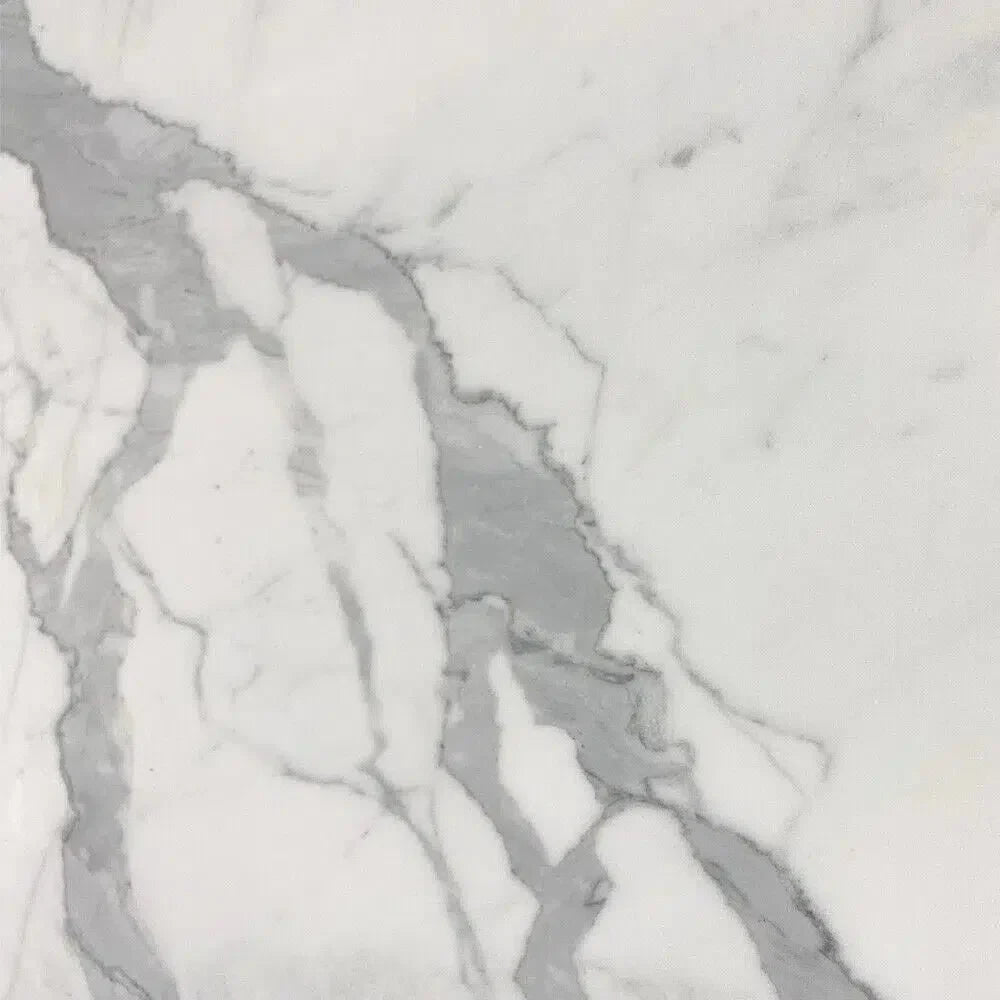 Statuary - Statuario White (Italian) Marble
Statuary - Statuario White (Italian) Marble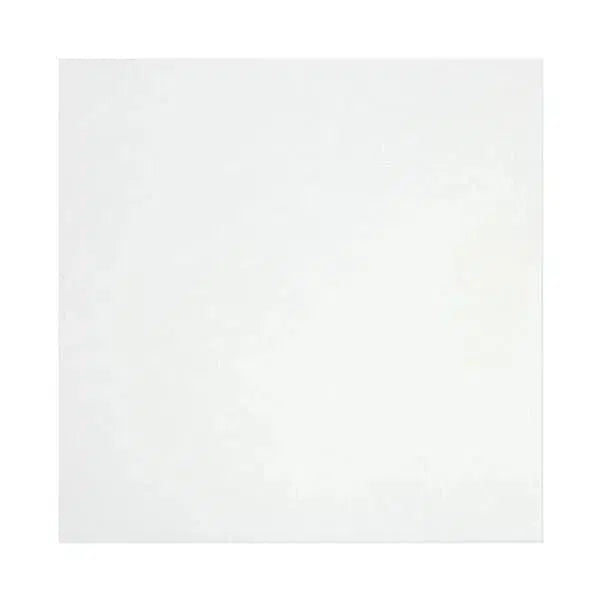 Thassos White
Thassos White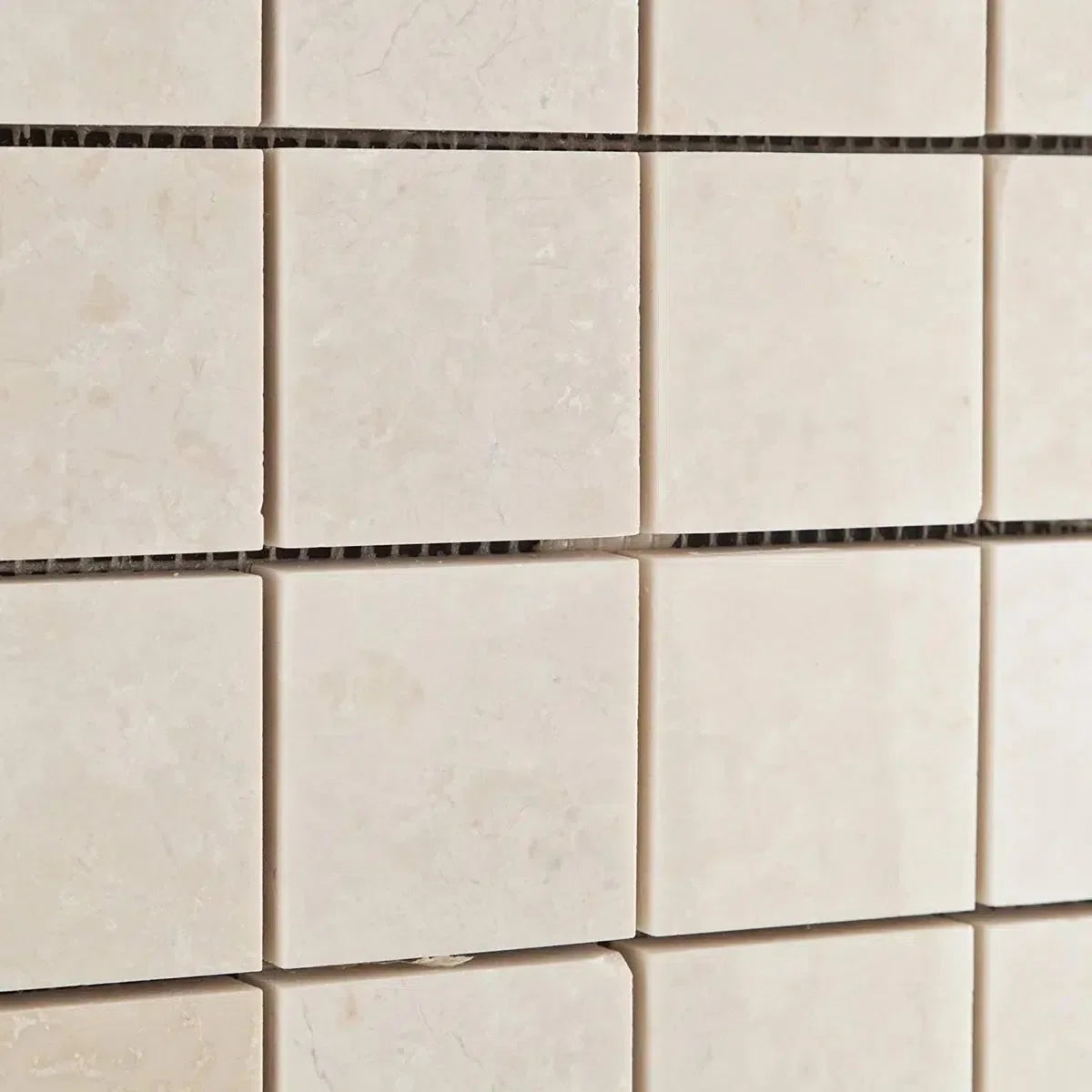 White Pearl/Botticino Beige Marble
White Pearl/Botticino Beige Marble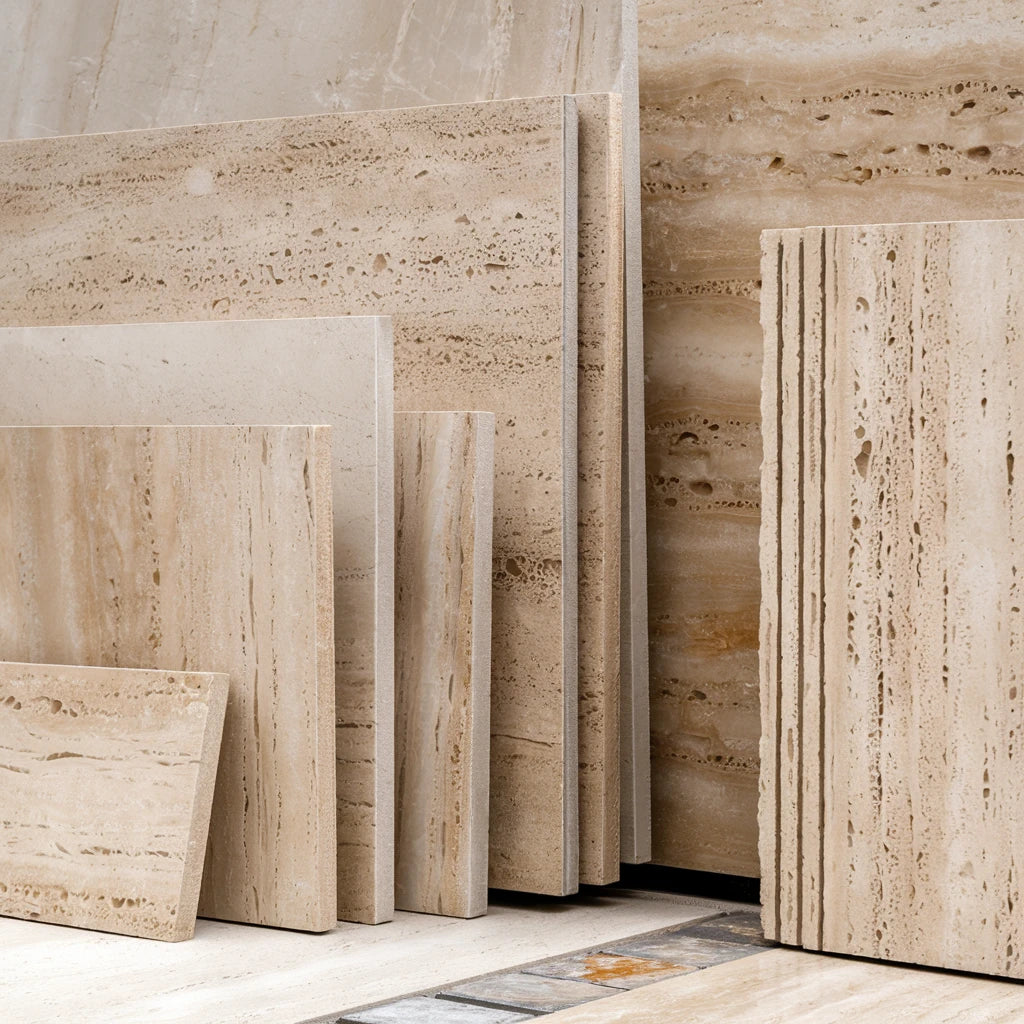 Best Selling Travertine Collections
Best Selling Travertine Collections
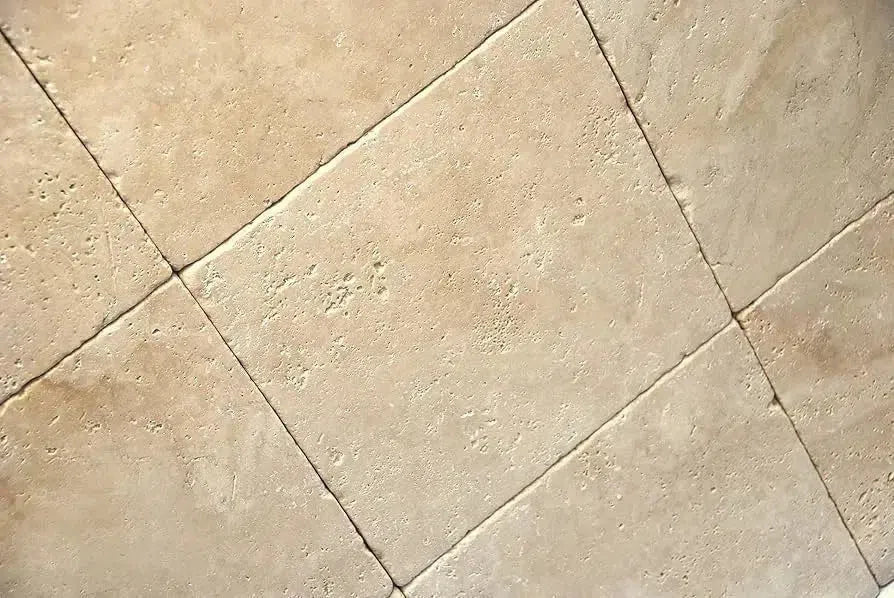 Ivory Travertine
Ivory Travertine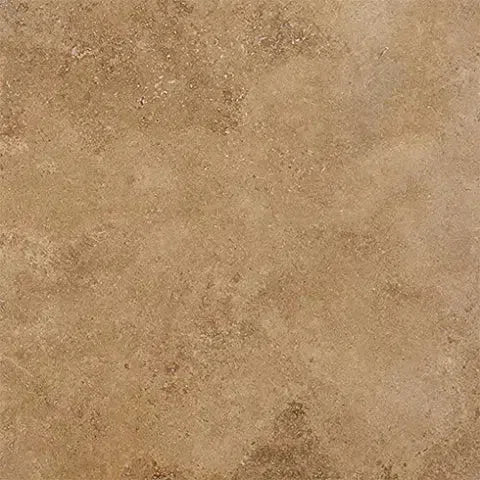 Noce Travertine
Noce Travertine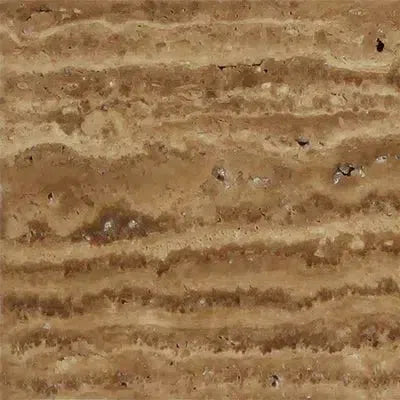 Exotic Noce Travertine
Exotic Noce Travertine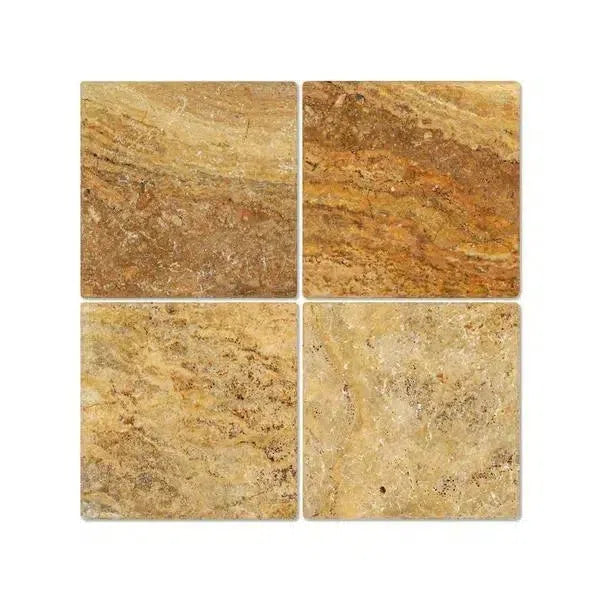 Scabos | Autumn Leaves Travertine
Scabos | Autumn Leaves Travertine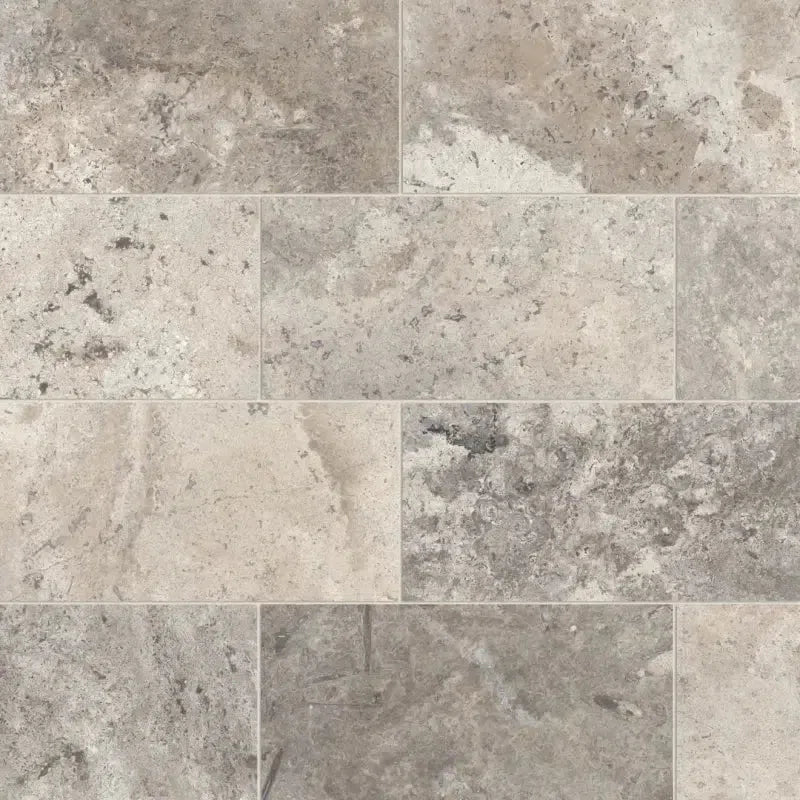 Silver Travertine
Silver Travertine Exotic Travertine
Exotic Travertine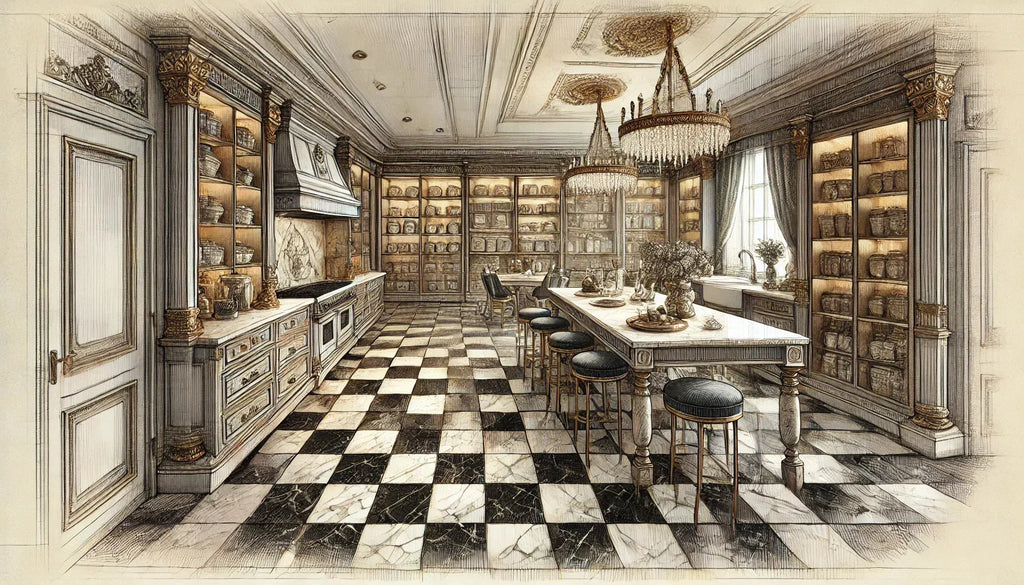 Checkerboard
Checkerboard
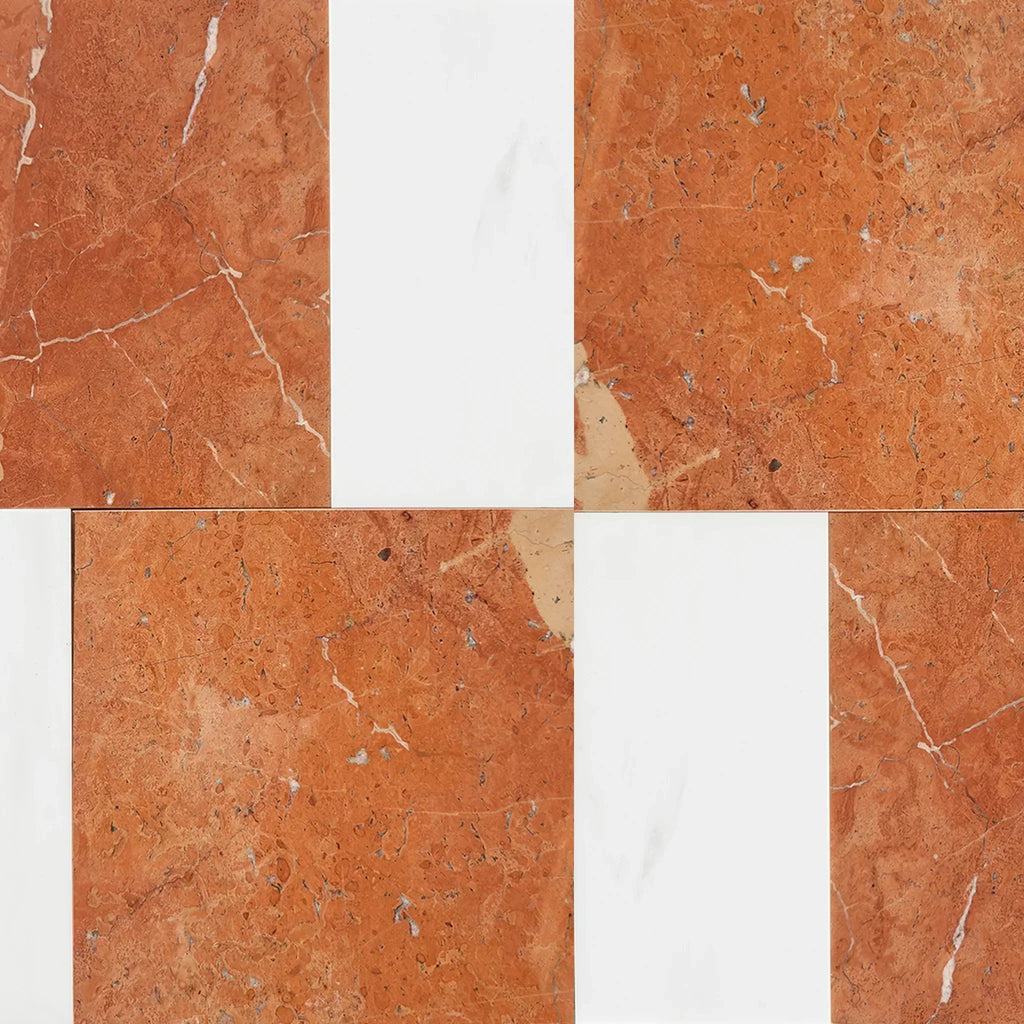 Patterned Tile
Patterned Tile
 Shop By Material
Shop By Material
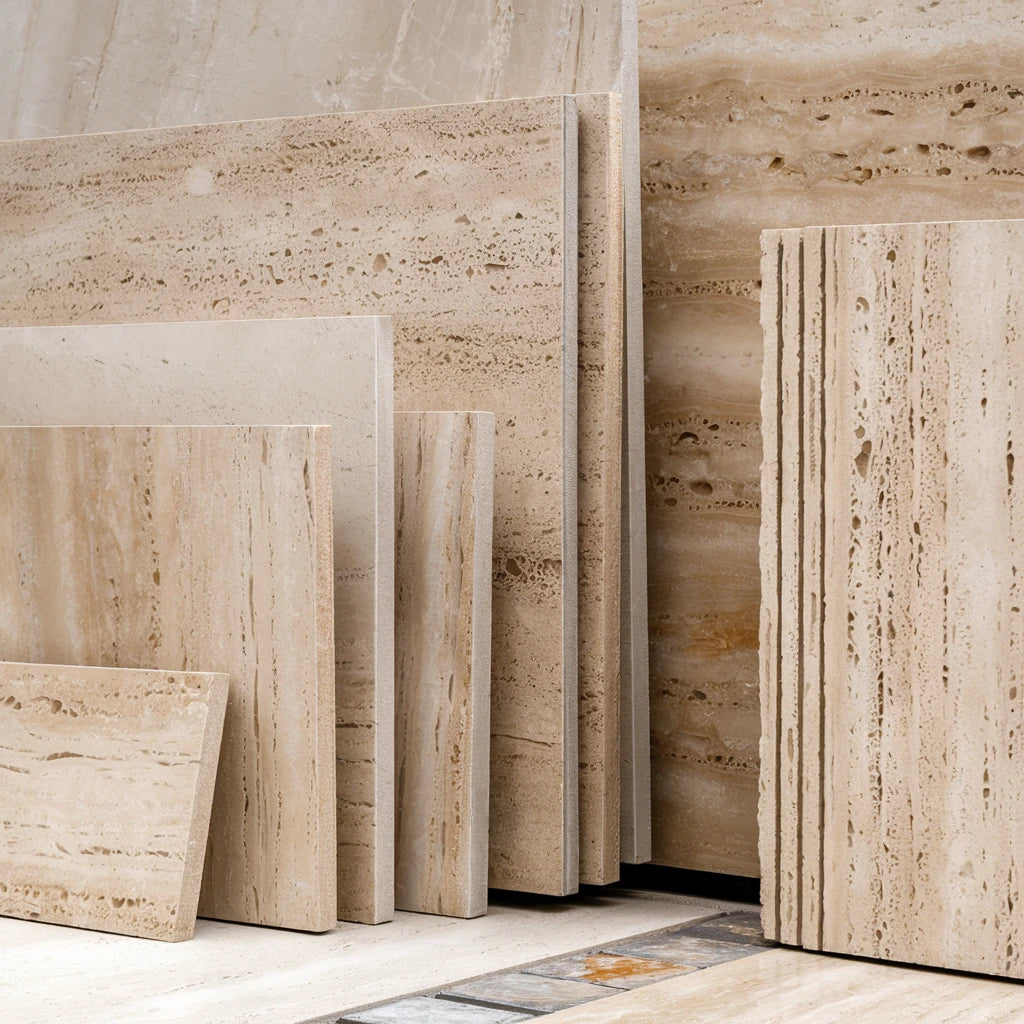 Travertine
Travertine Marble
Marble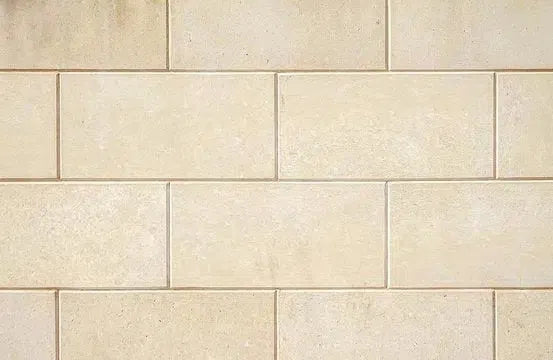 Limestone
Limestone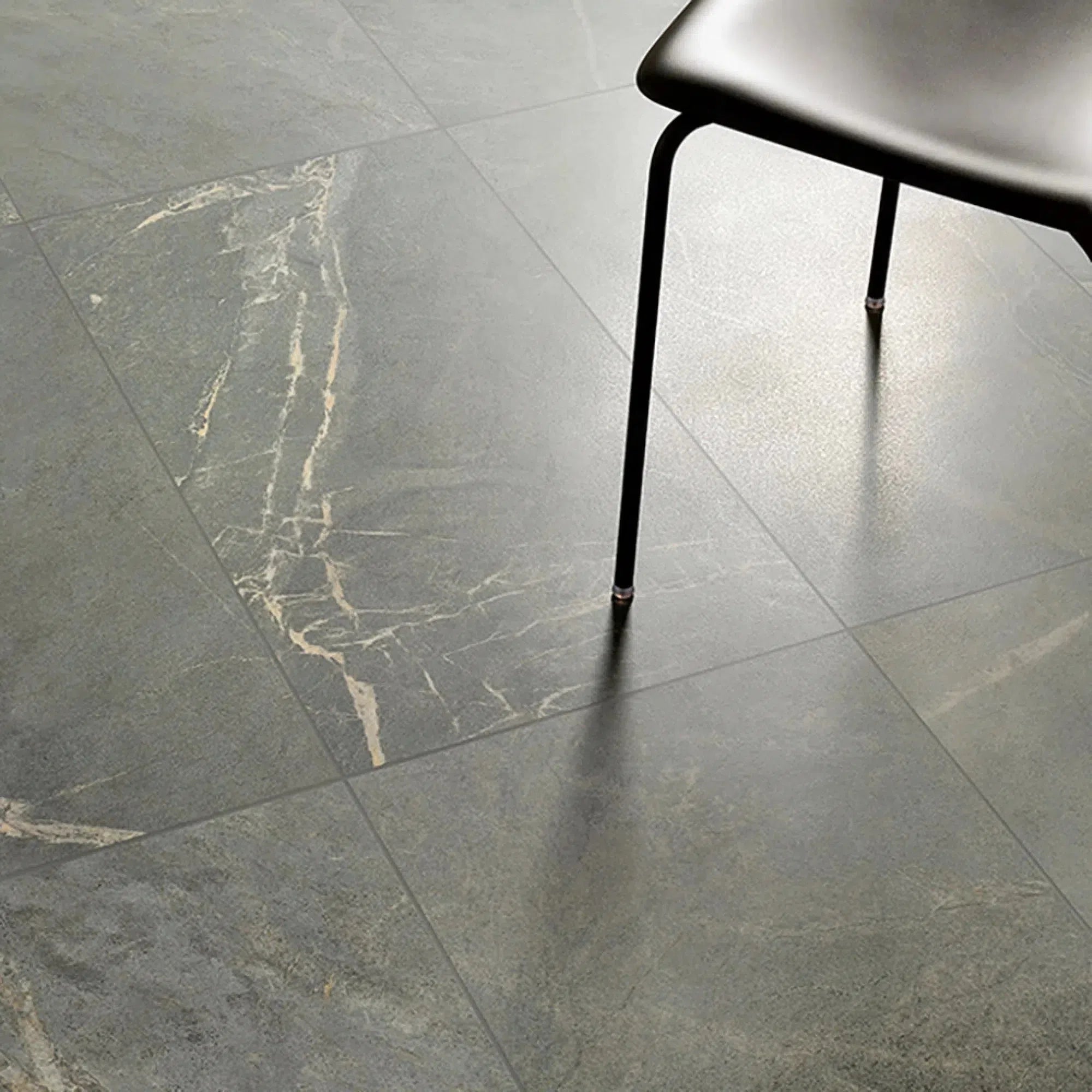 Soap Stone
Soap Stone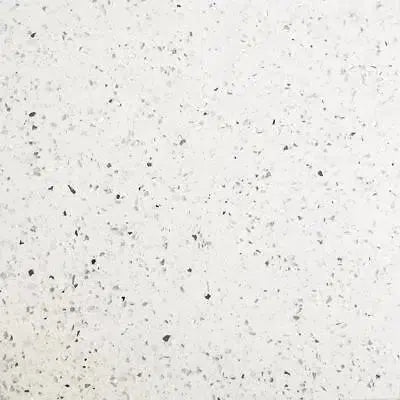 Quartz
Quartz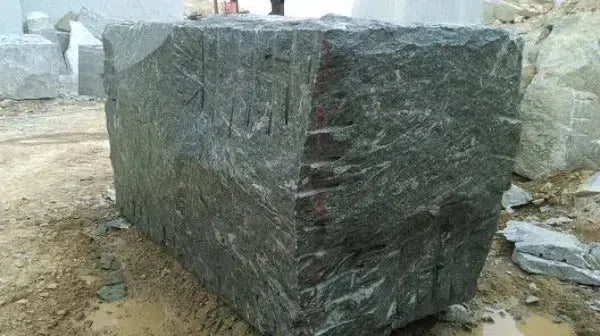 Granite
Granite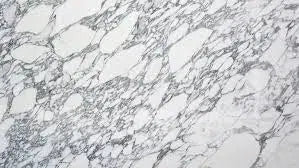 Shop By Name
Shop By Name
 Absolute Black Granite
Absolute Black Granite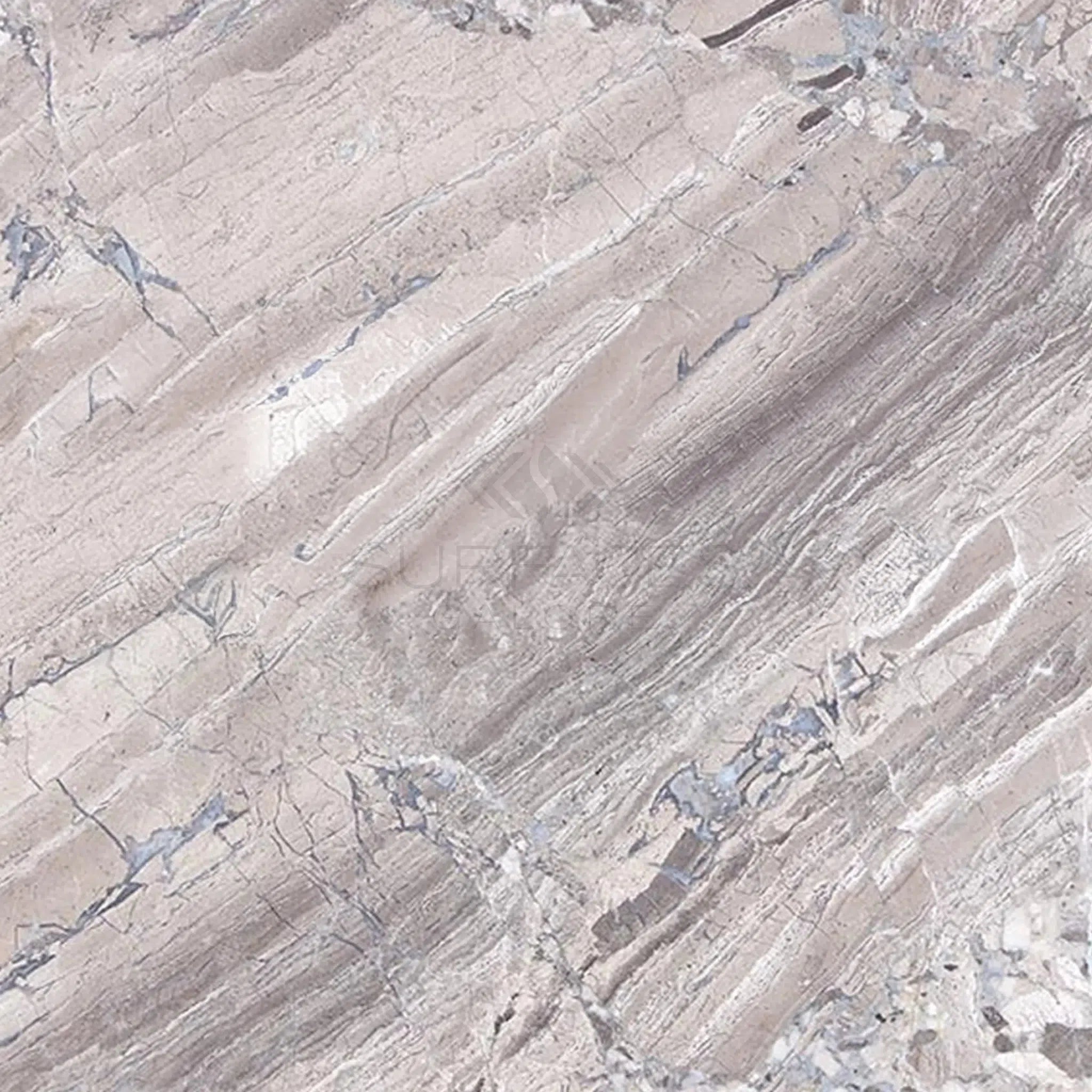 Atlantic Gray Marble
Atlantic Gray Marble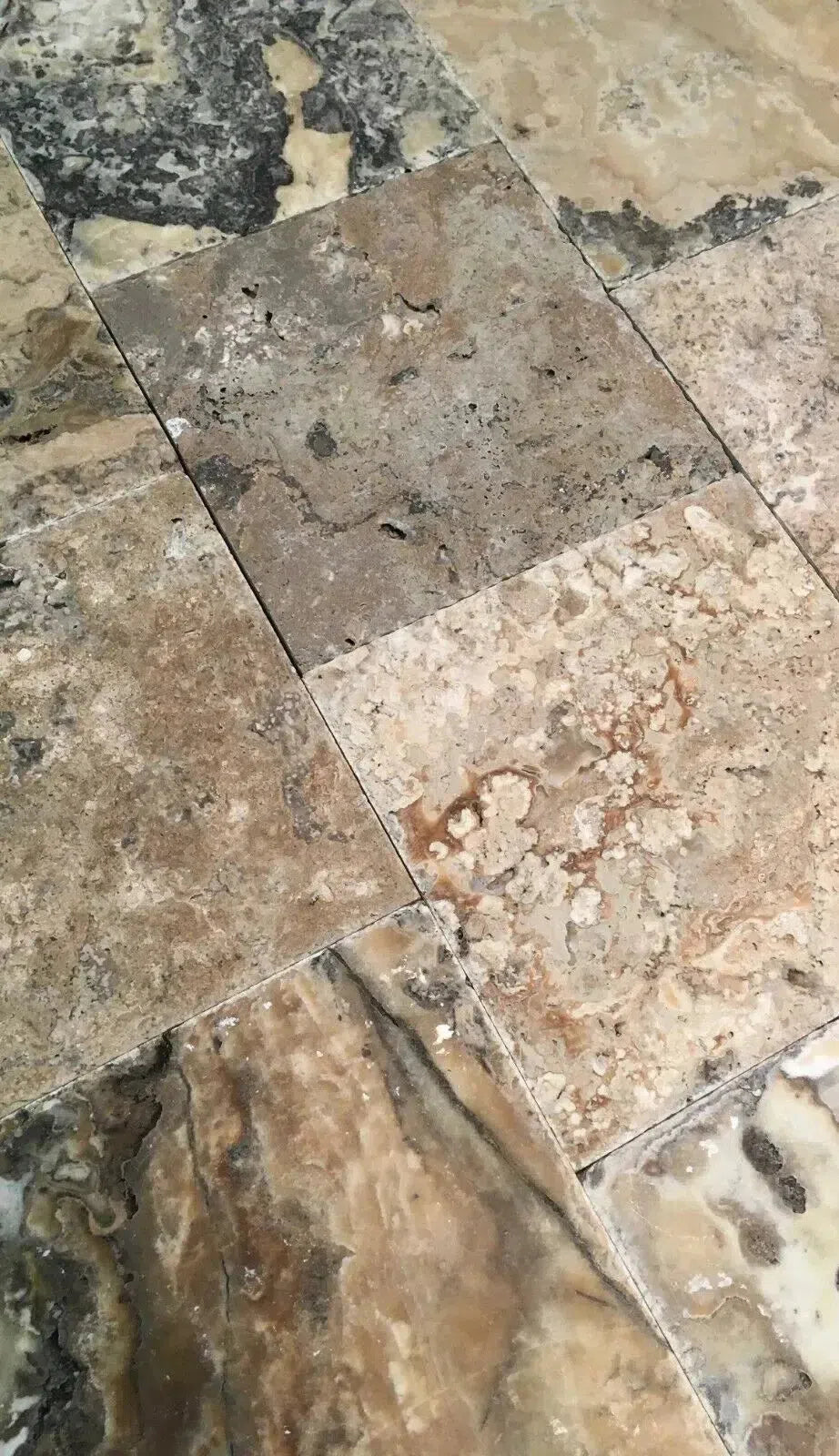 Antico Onyx Travertine
Antico Onyx Travertine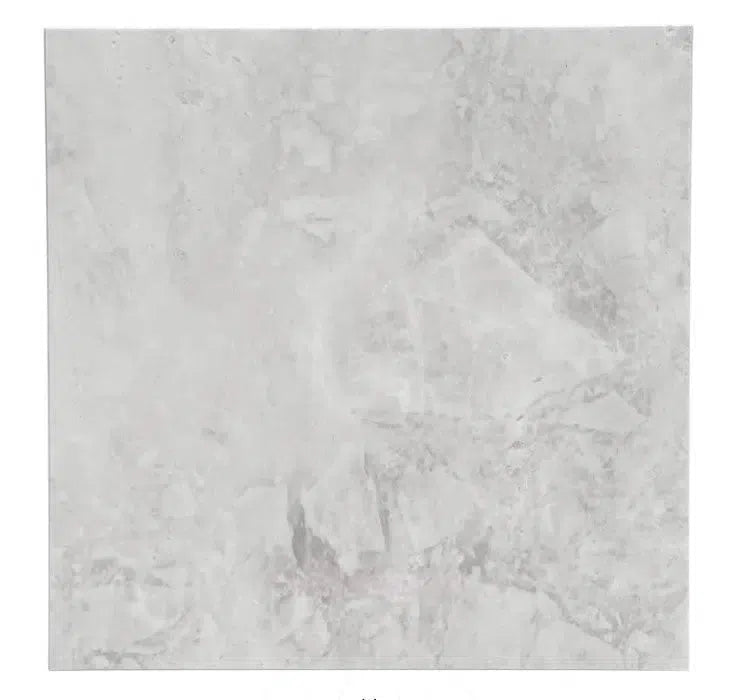 Bianco Congelato Dolomite
Bianco Congelato Dolomite Bianco Venatino (Bianco Mare) Marble
Bianco Venatino (Bianco Mare) Marble Calacatta Verde Royale Marble
Calacatta Verde Royale Marble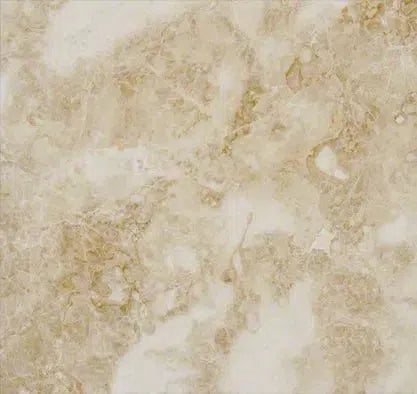 Cappuccino Marble
Cappuccino Marble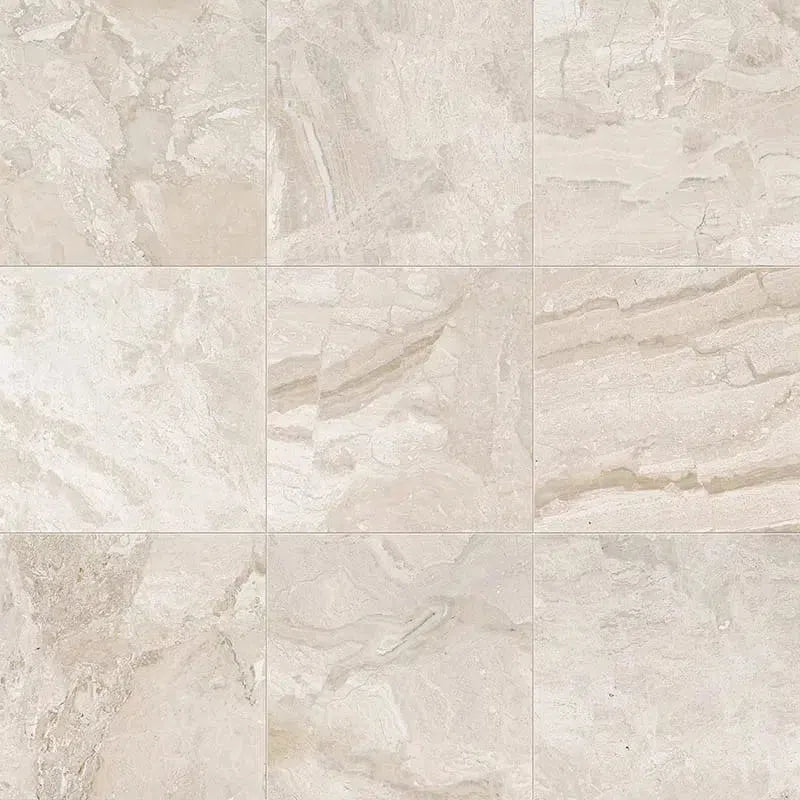 Diano Royal (Queen Beige) Marble
Diano Royal (Queen Beige) Marble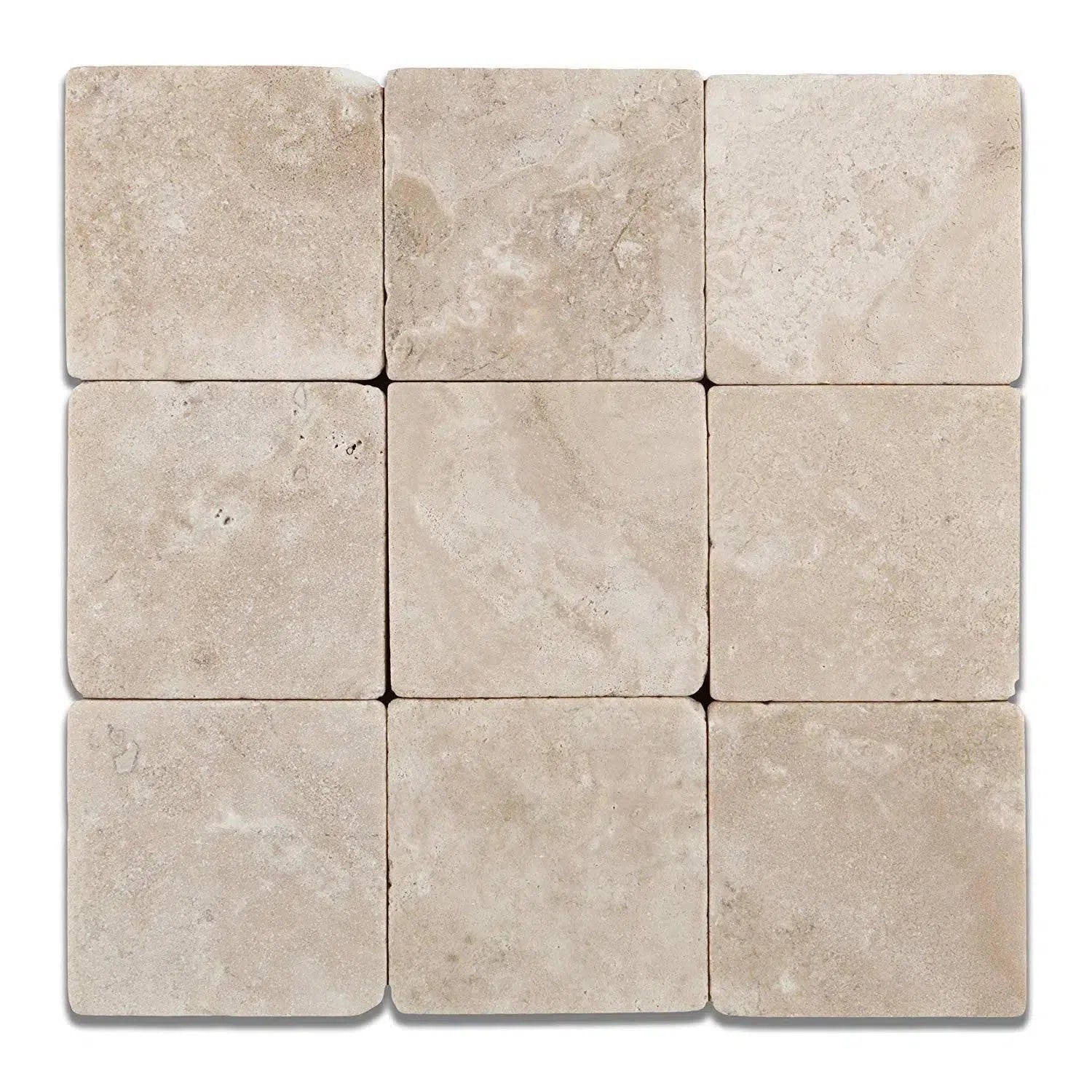 Durango Cream Traverine
Durango Cream Traverine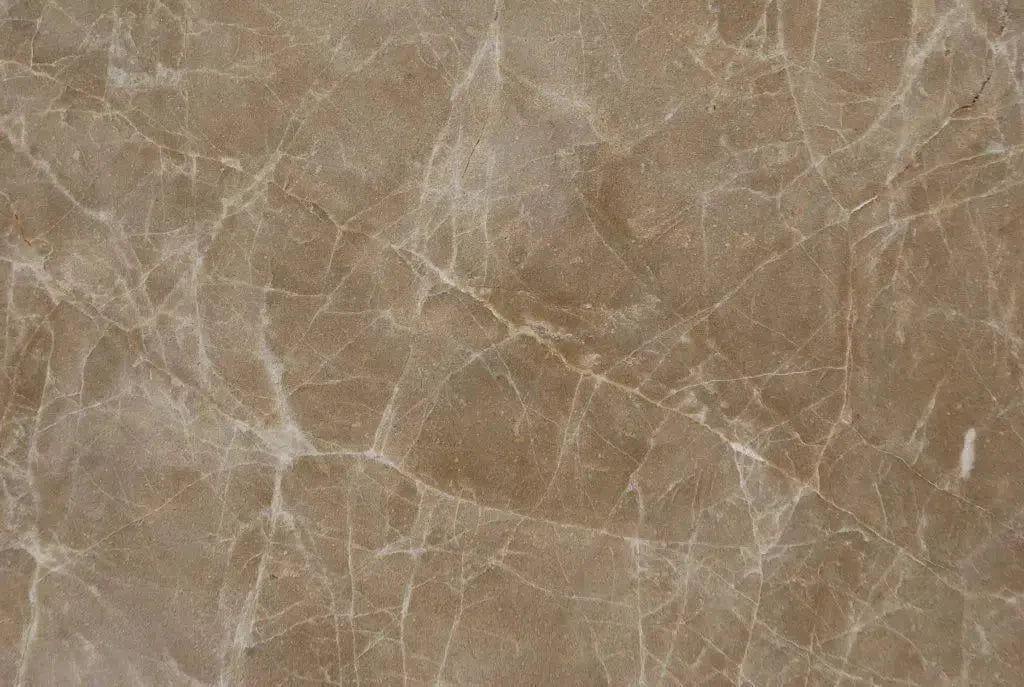 Emperador Light Marble
Emperador Light Marble Empress Green Marble
Empress Green Marble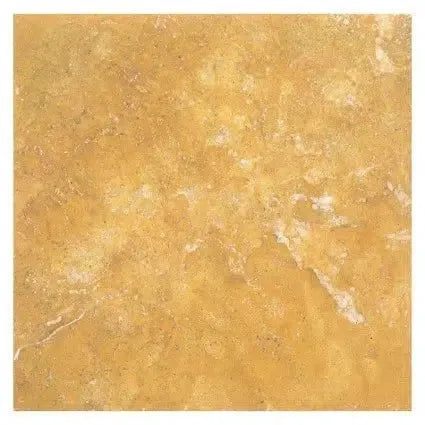 Gold/Yellow Travertine
Gold/Yellow Travertine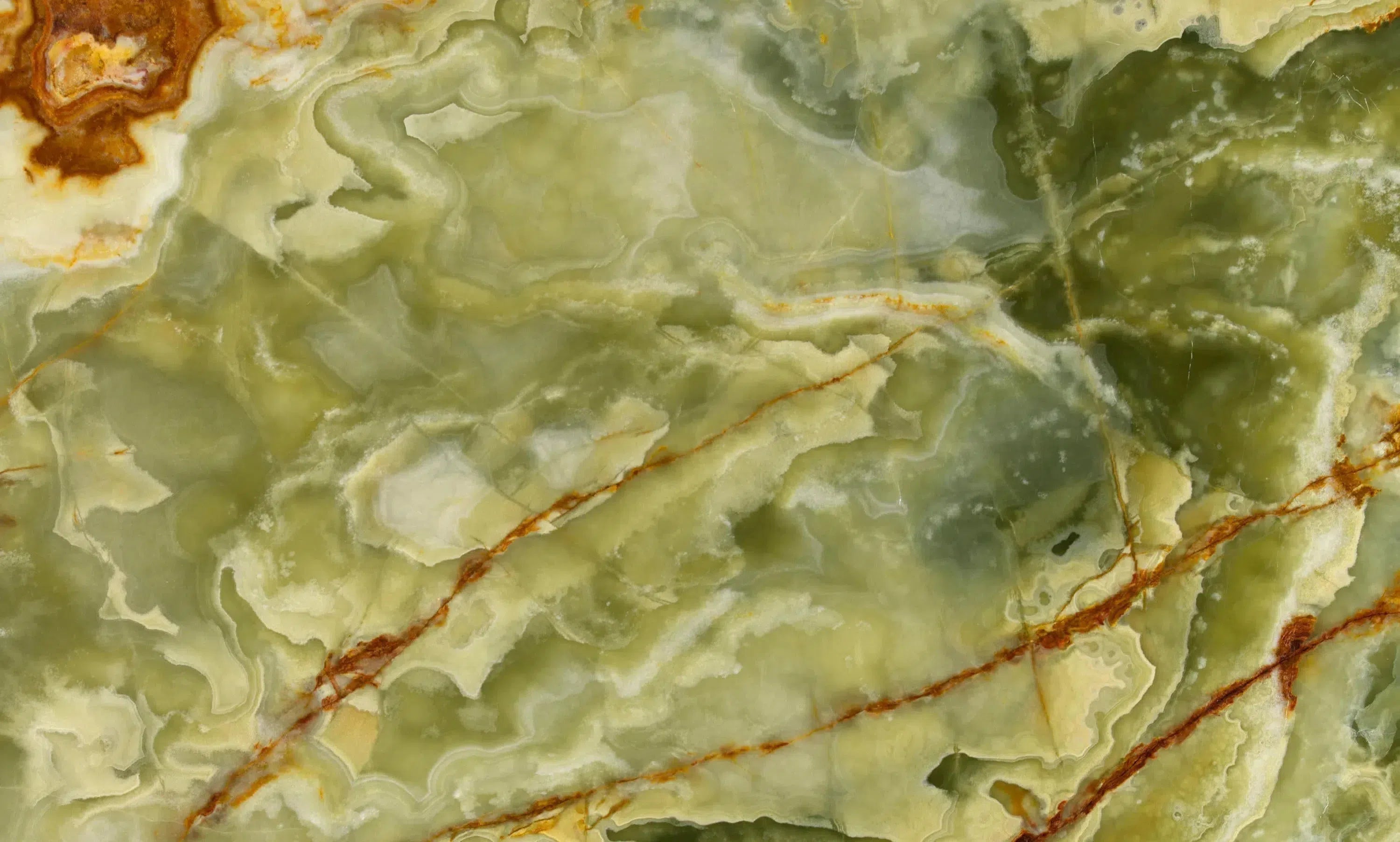 Green Onyx Marble
Green Onyx Marble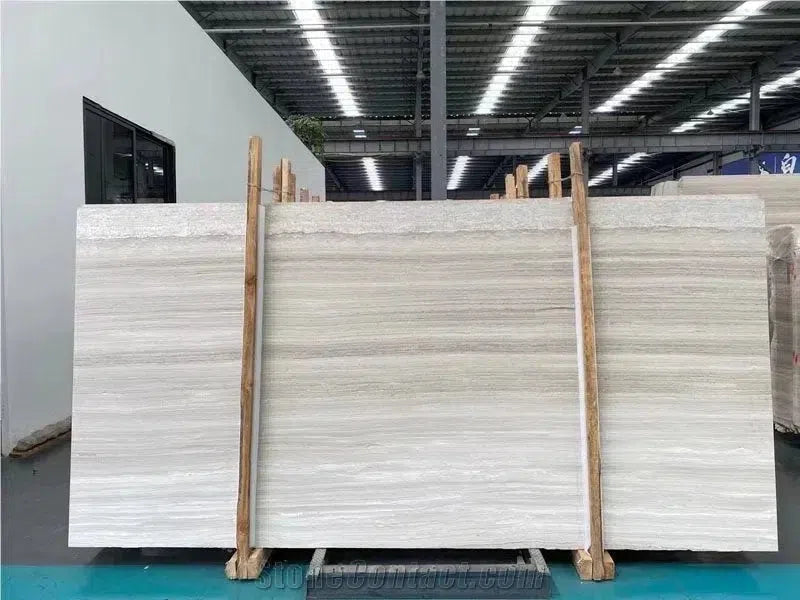 Haisa Light (White Wood) Limestone
Haisa Light (White Wood) Limestone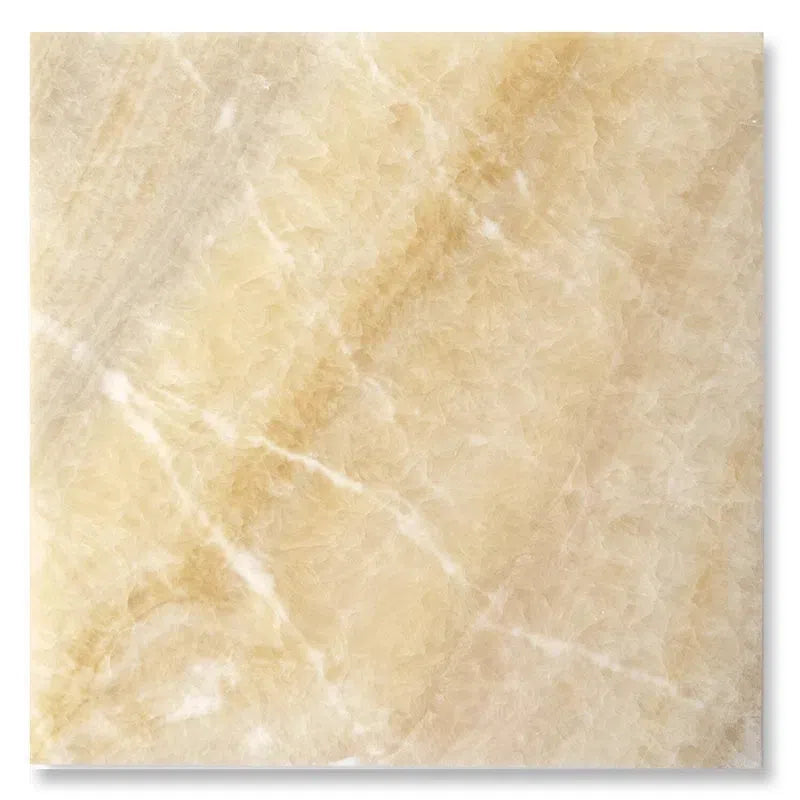 Honey Onyx Marble
Honey Onyx Marble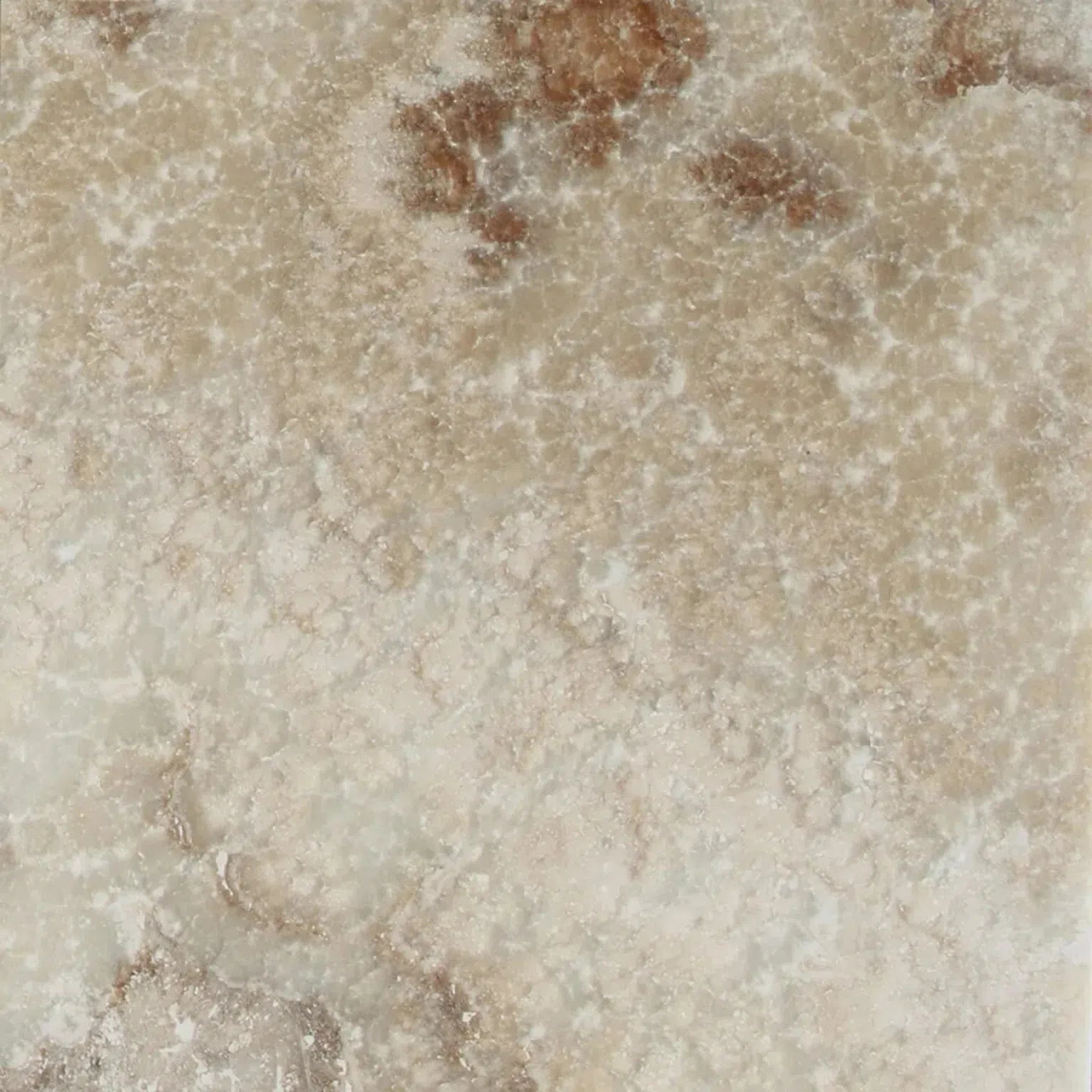 La Travonya Travertine
La Travonya Travertine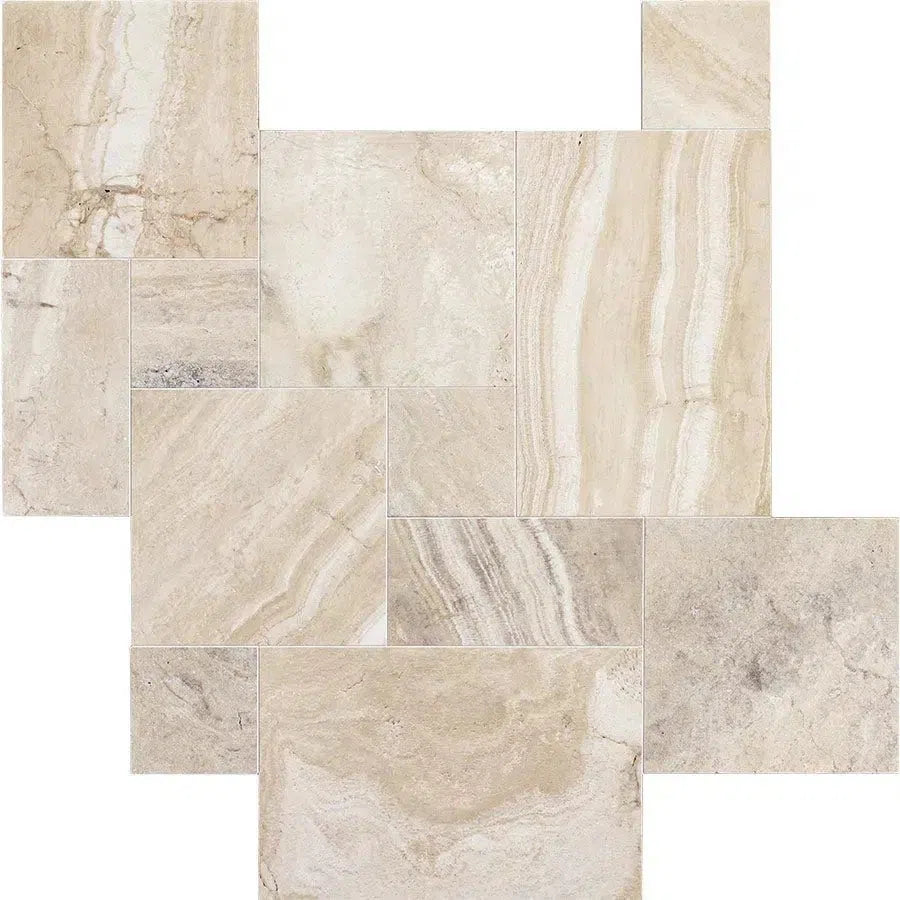 Malibu Travertine
Malibu Travertine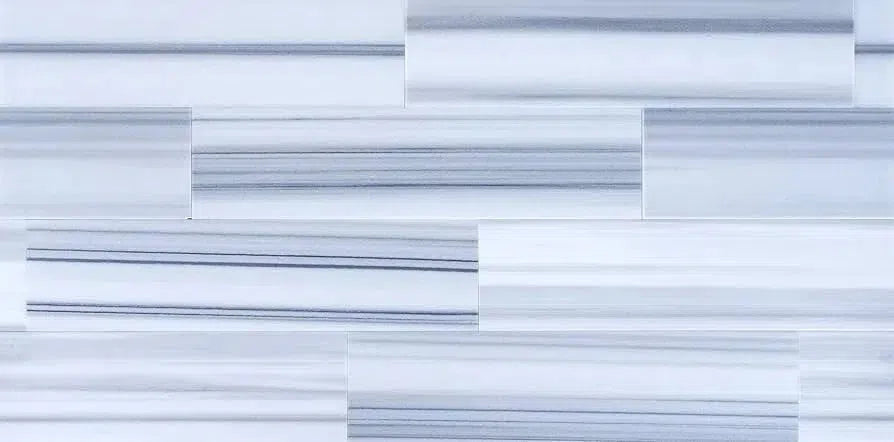 Mink (Equator) Marble
Mink (Equator) Marble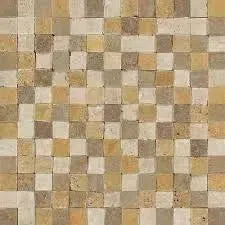 Mixed (Ivory-Noce-Gold) Travertine
Mixed (Ivory-Noce-Gold) Travertine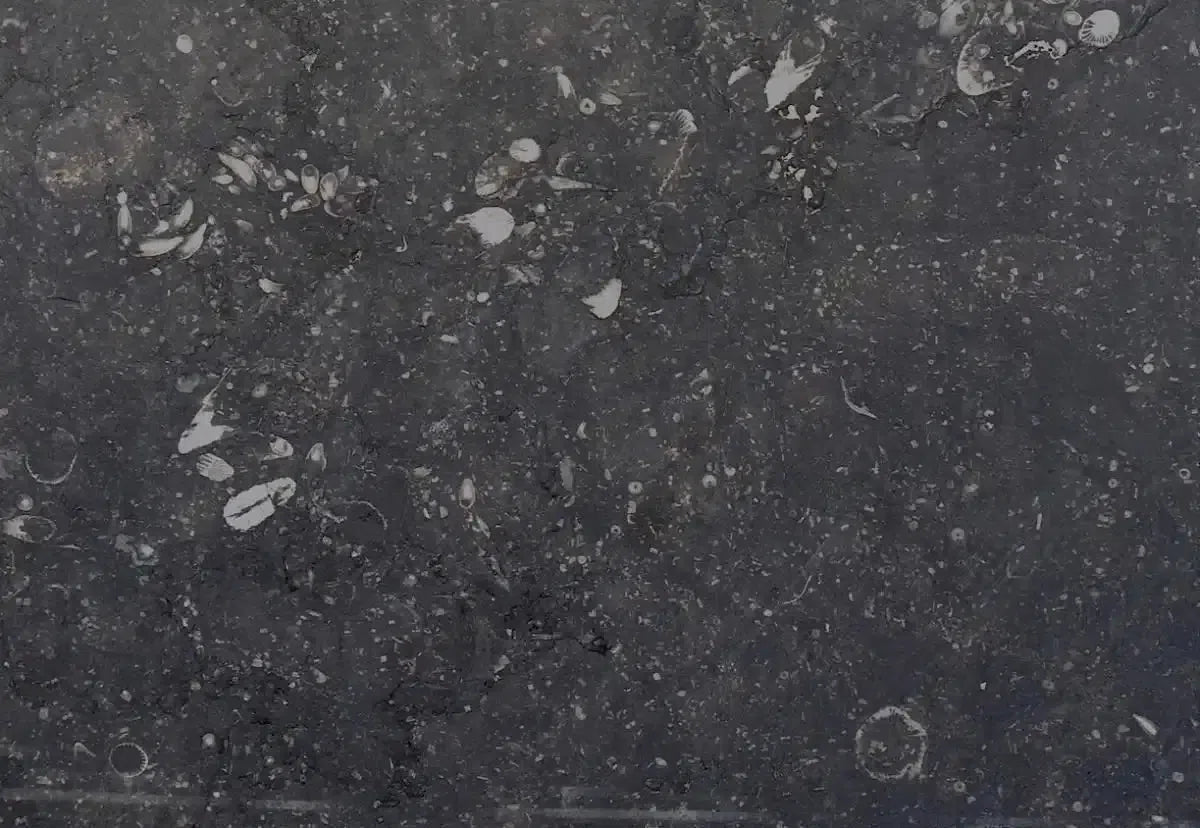 Pierre Bleue (Pierre Blue) Marble
Pierre Bleue (Pierre Blue) Marble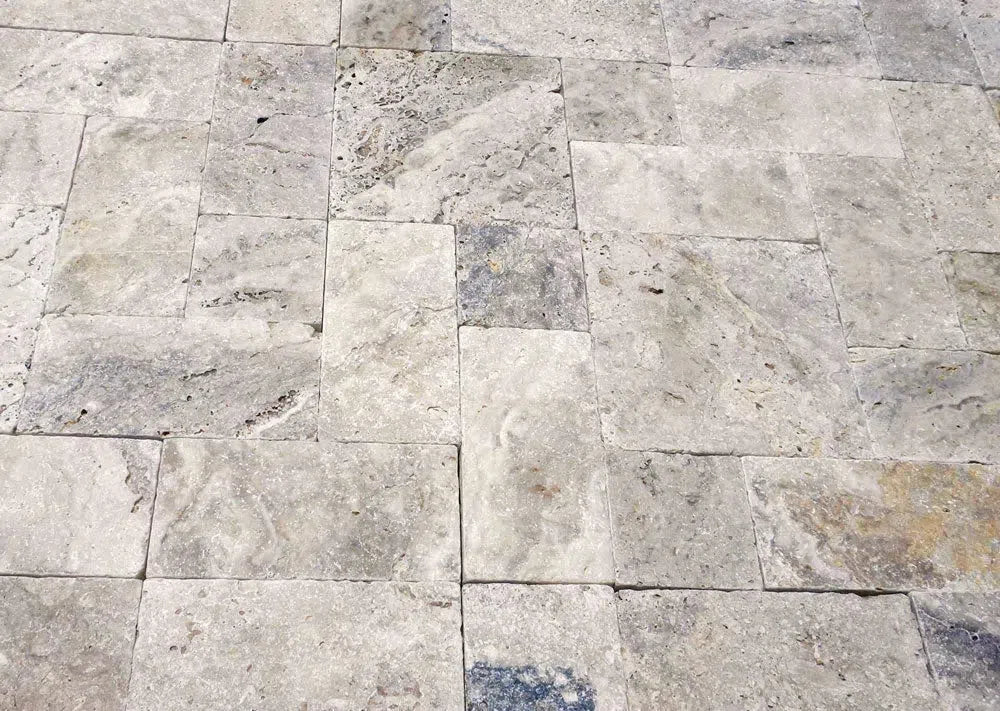 Philadelphia Travertine
Philadelphia Travertine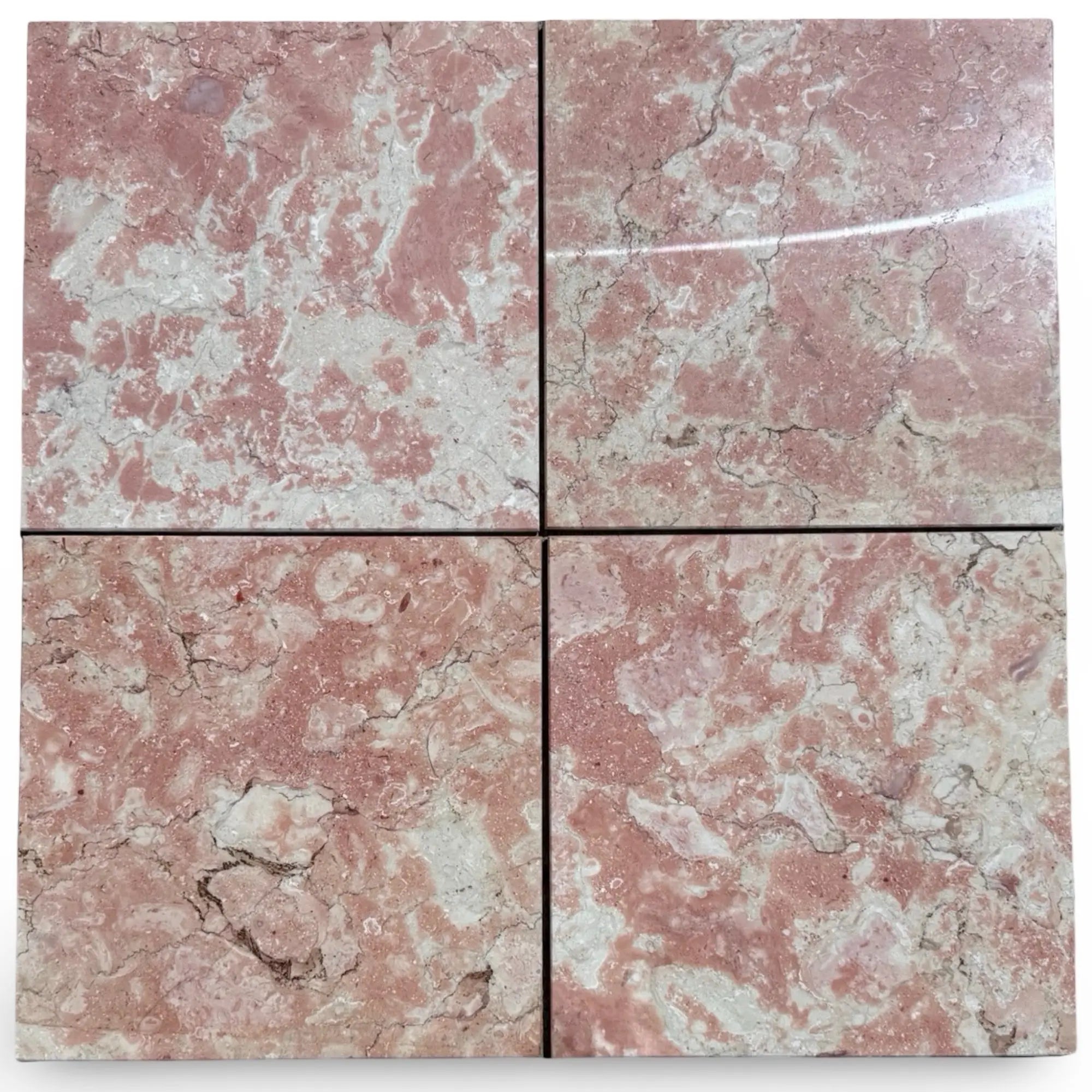 Rosé Aurora Marble
Rosé Aurora Marble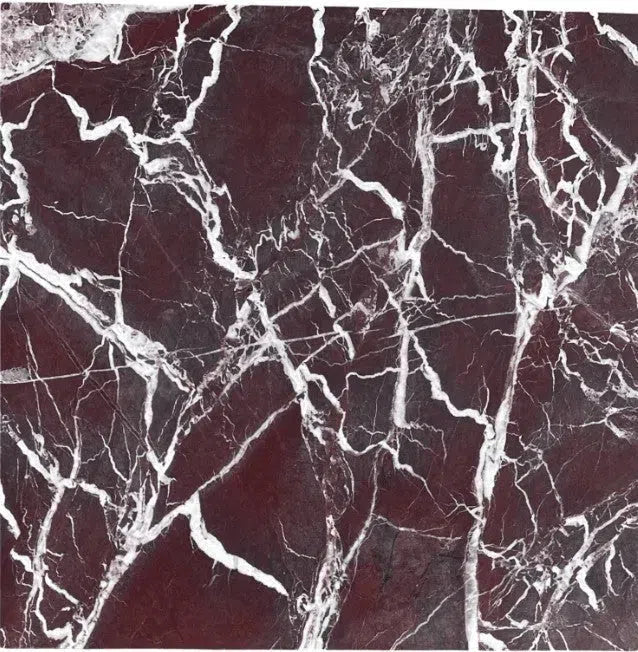 Rosso Levanto Marble
Rosso Levanto Marble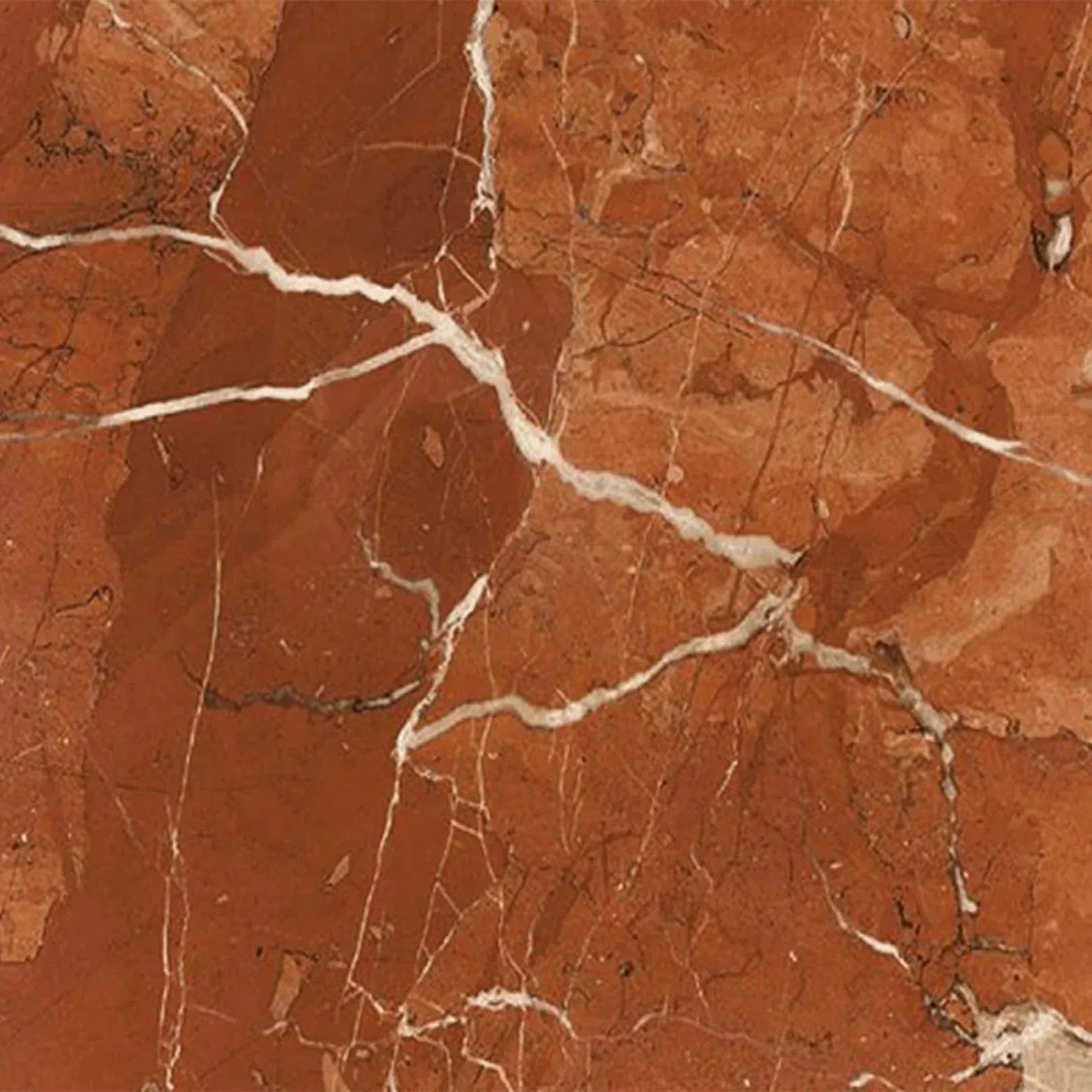 Rojo Alicante Marble
Rojo Alicante Marble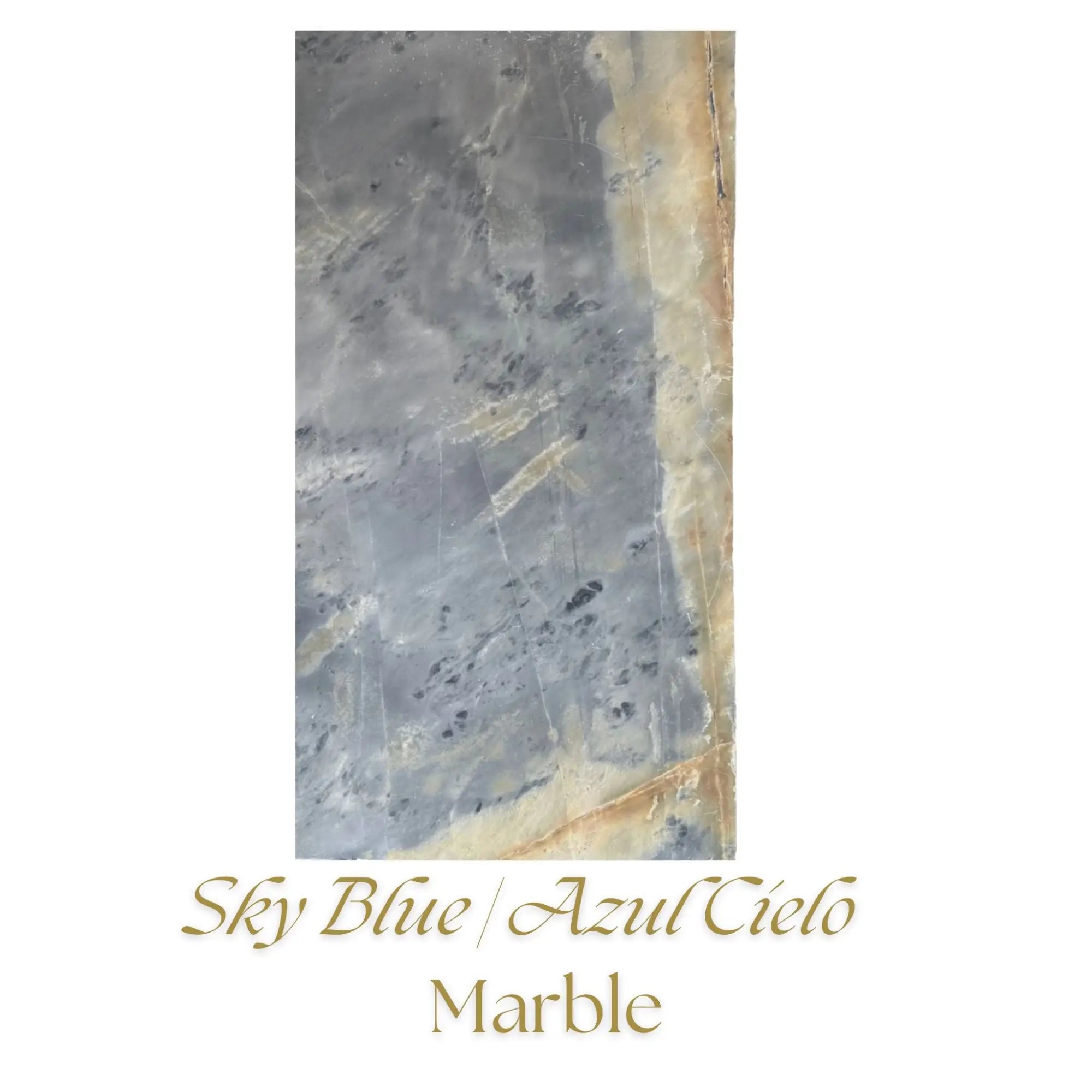 Sky Blue | Azul Cielo Marble
Sky Blue | Azul Cielo Marble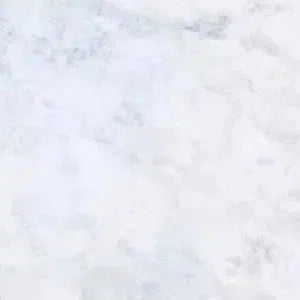 Snow White (Afyon White) Marble
Snow White (Afyon White) Marble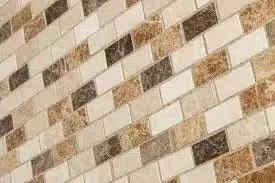 Spanish Mix Marble
Spanish Mix Marble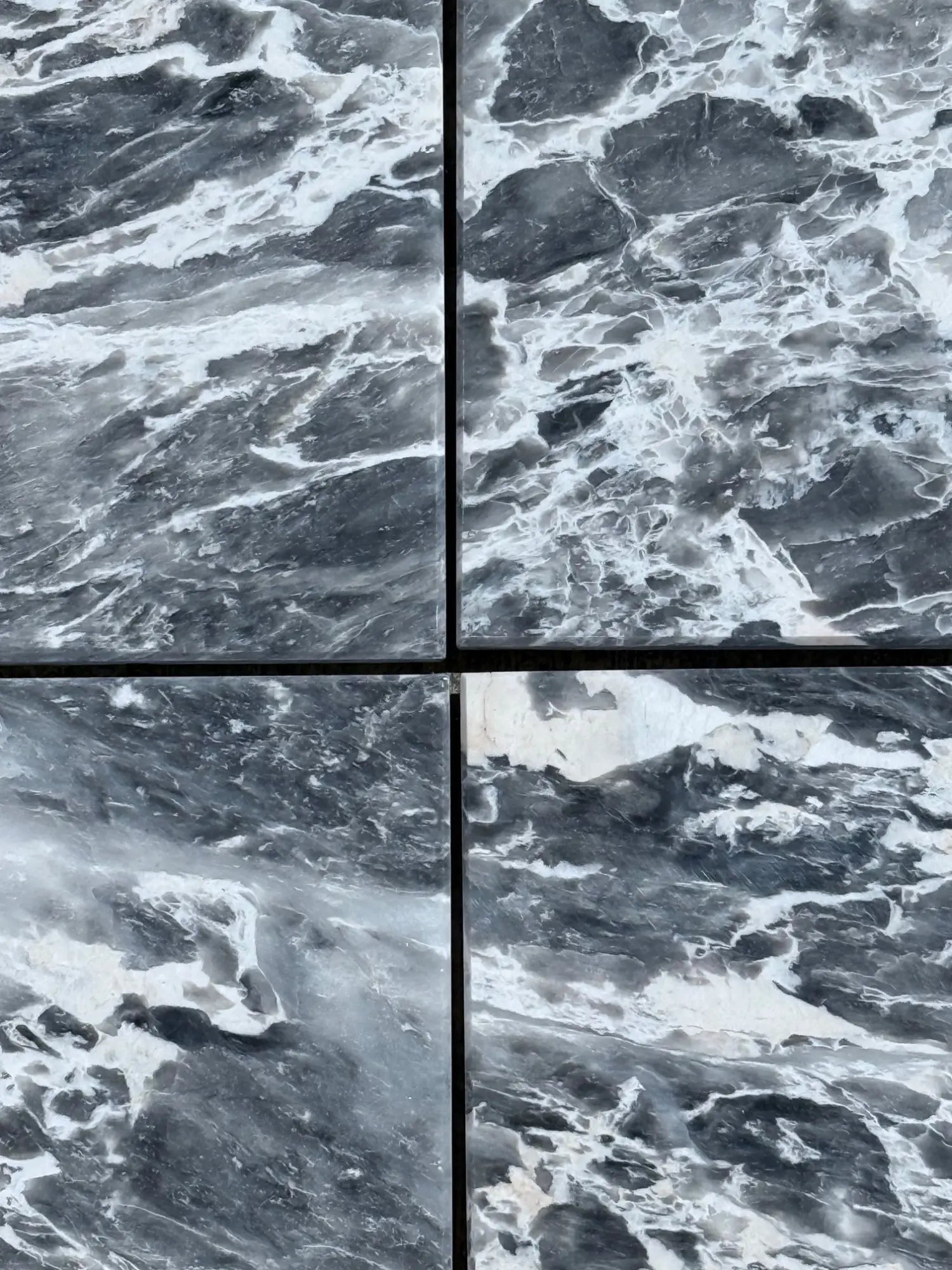 Storm Gray Marble
Storm Gray Marble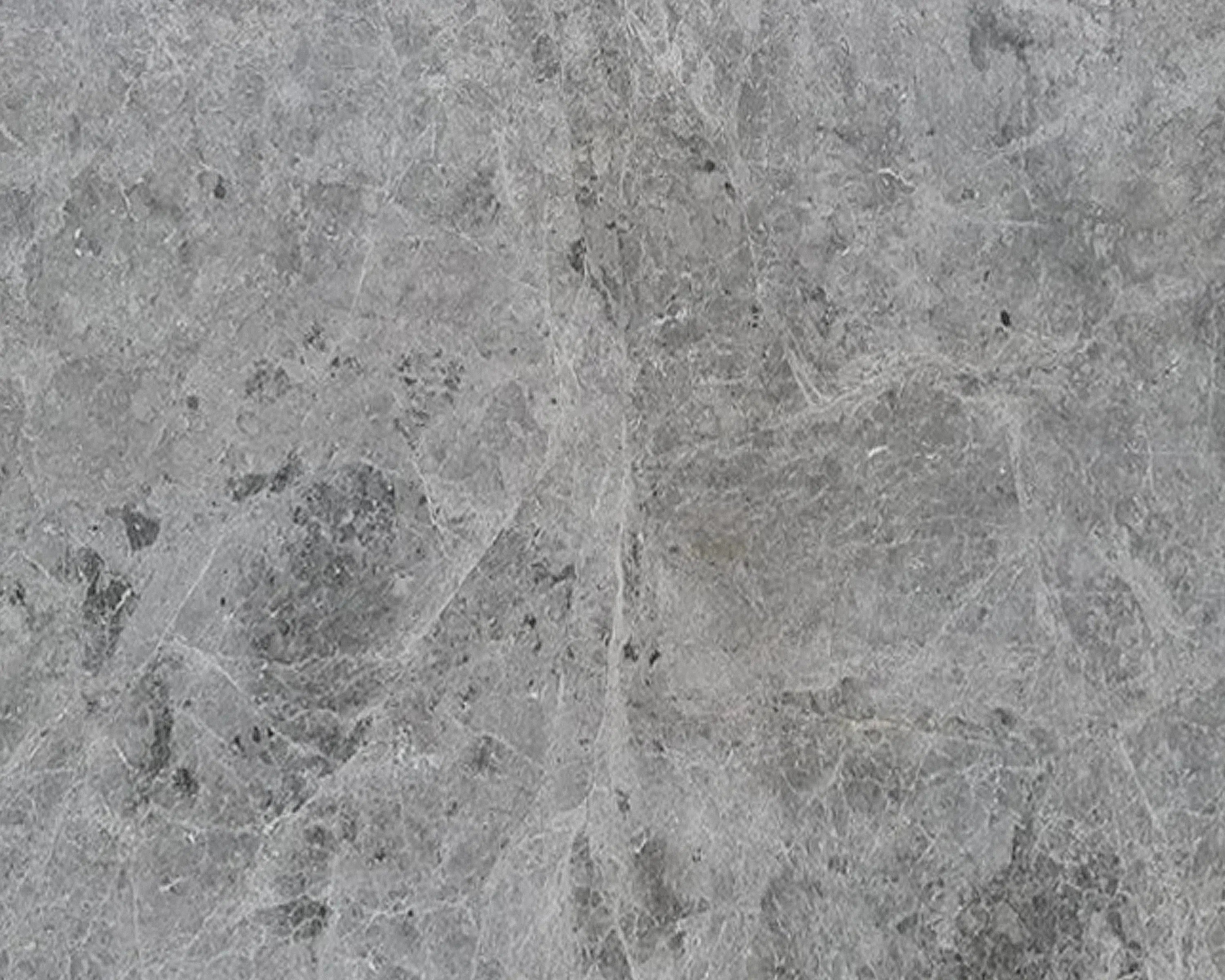 Tundra Gray (Atlantic Gray) Marble
Tundra Gray (Atlantic Gray) Marble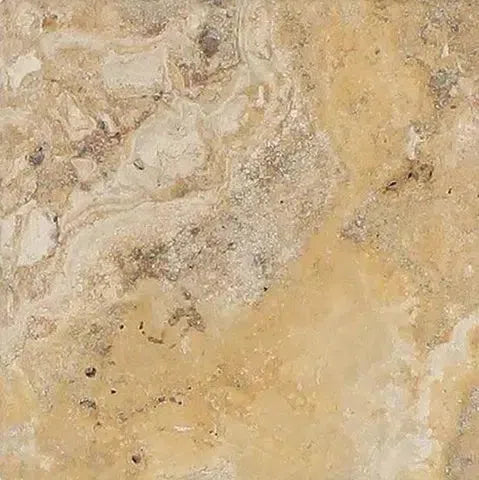 Valencia Travertine
Valencia Travertine Valerenga Travertine
Valerenga Travertine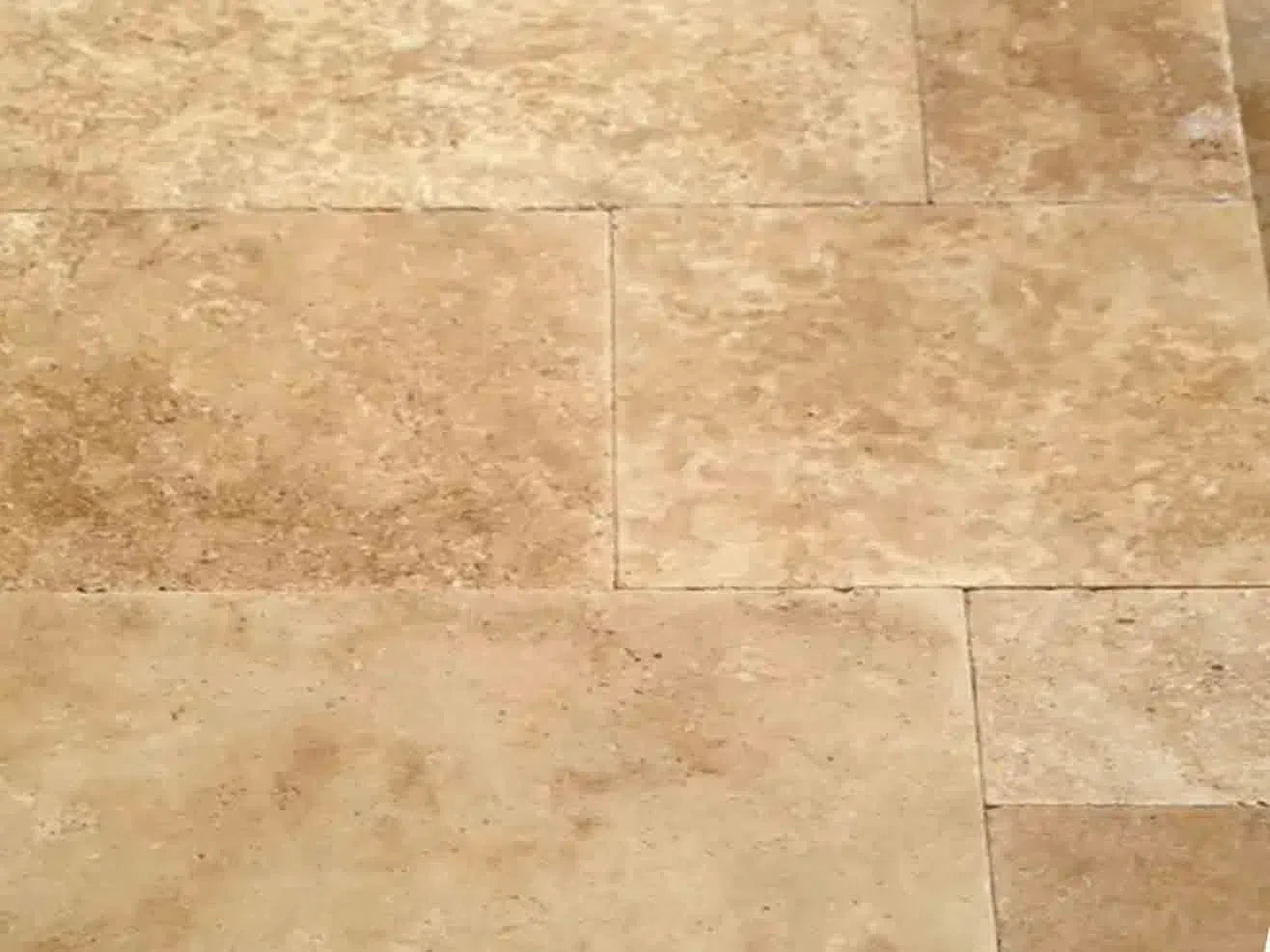 Walnut Travertine
Walnut Travertine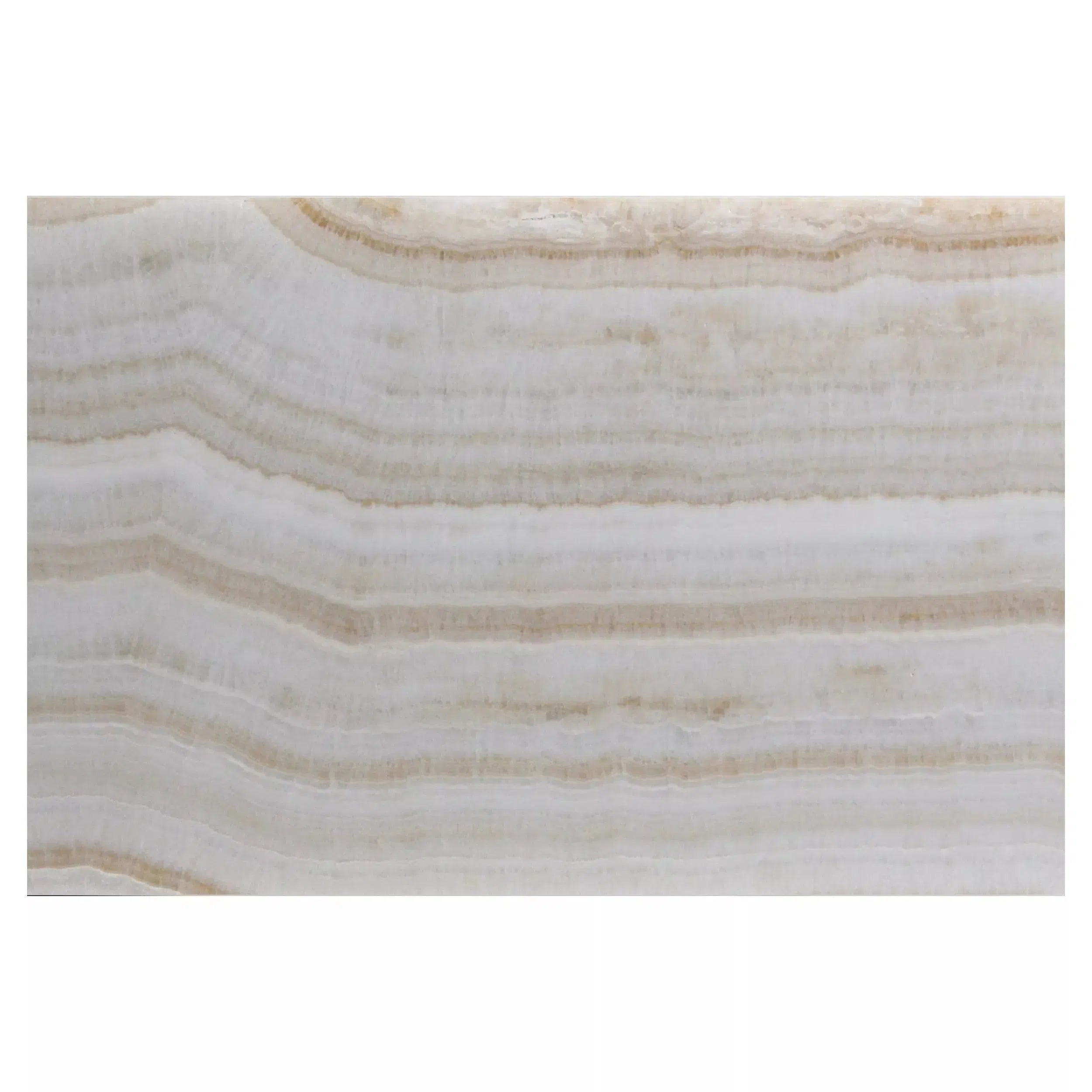 White Onyx Marble
White Onyx Marble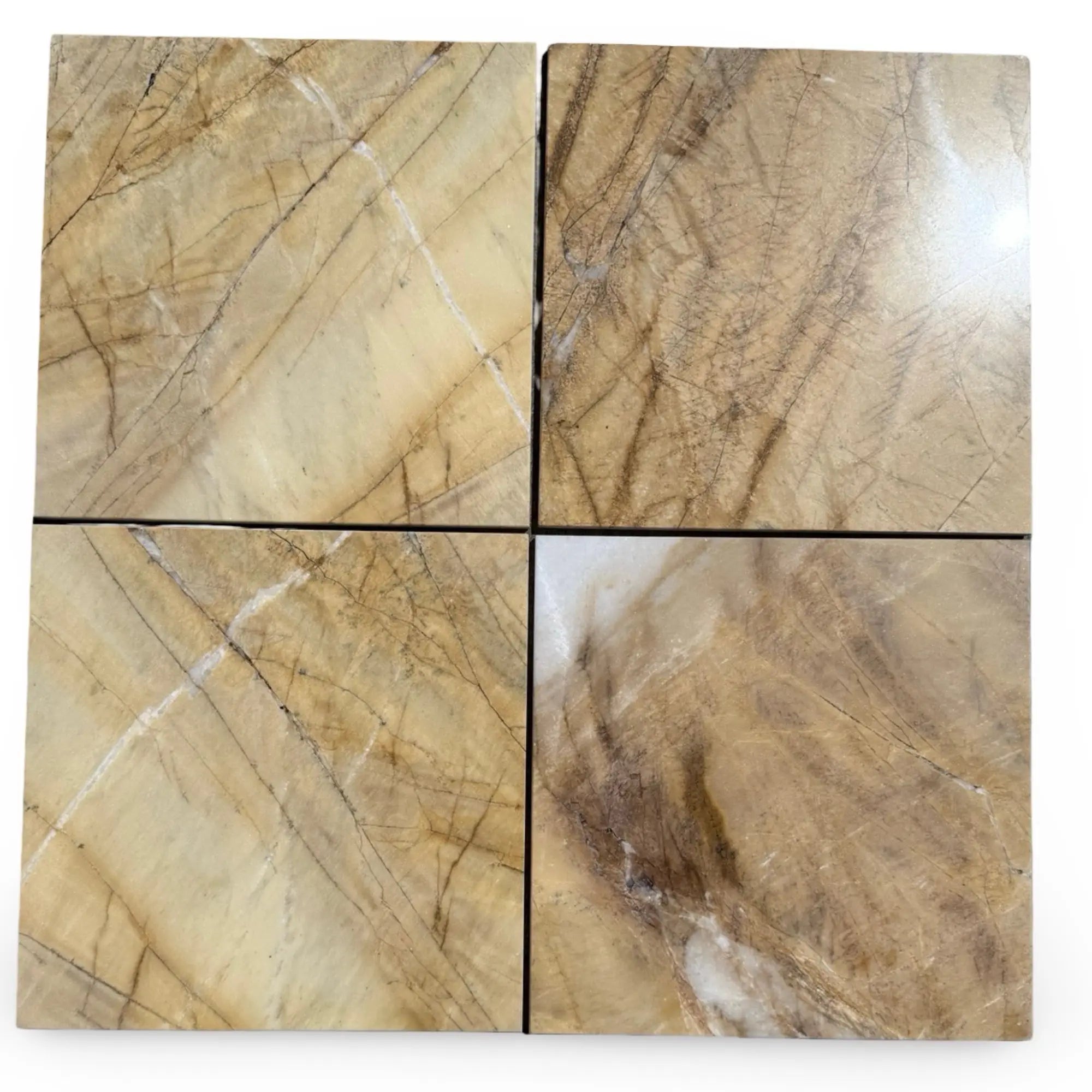 Golden Horizon Marble
Golden Horizon Marble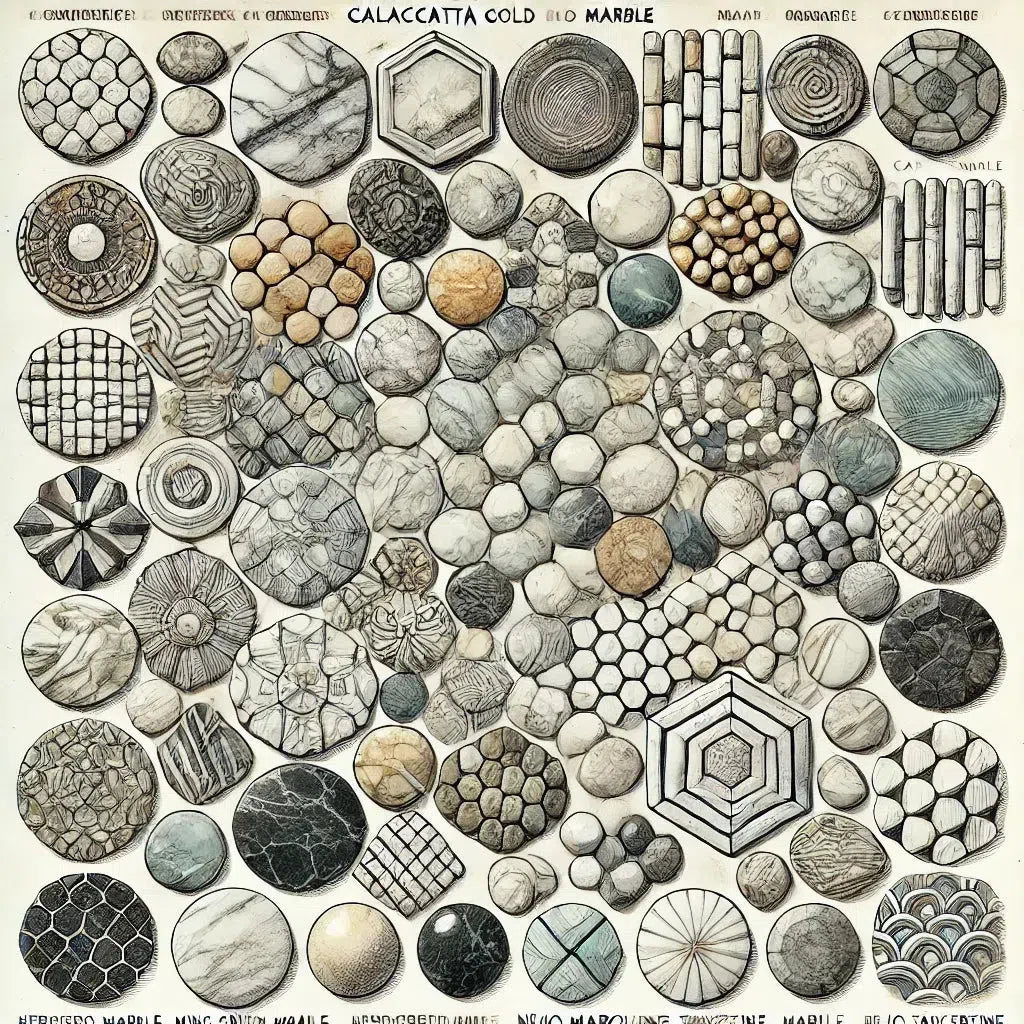 Shop By Type
Shop By Type
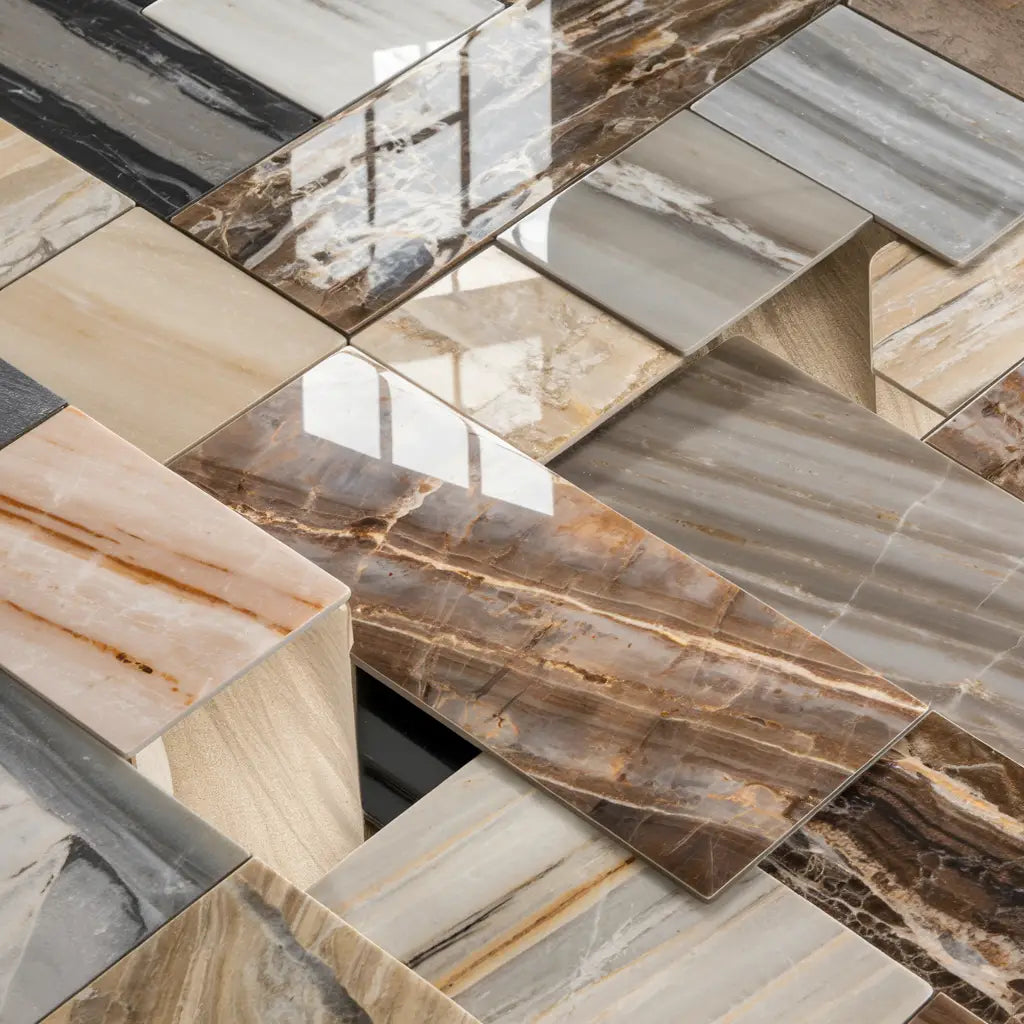 Marble Tiles
Marble Tiles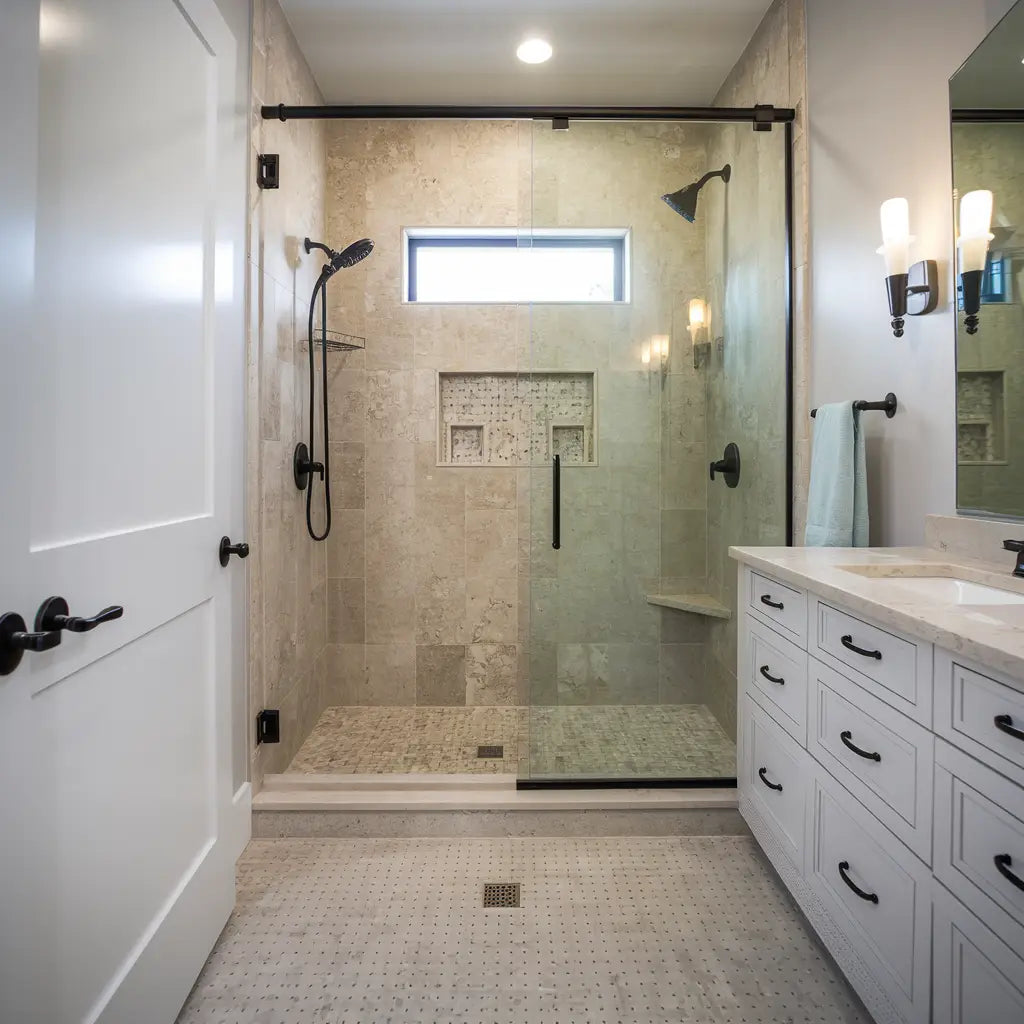 Marble Mosaic
Marble Mosaic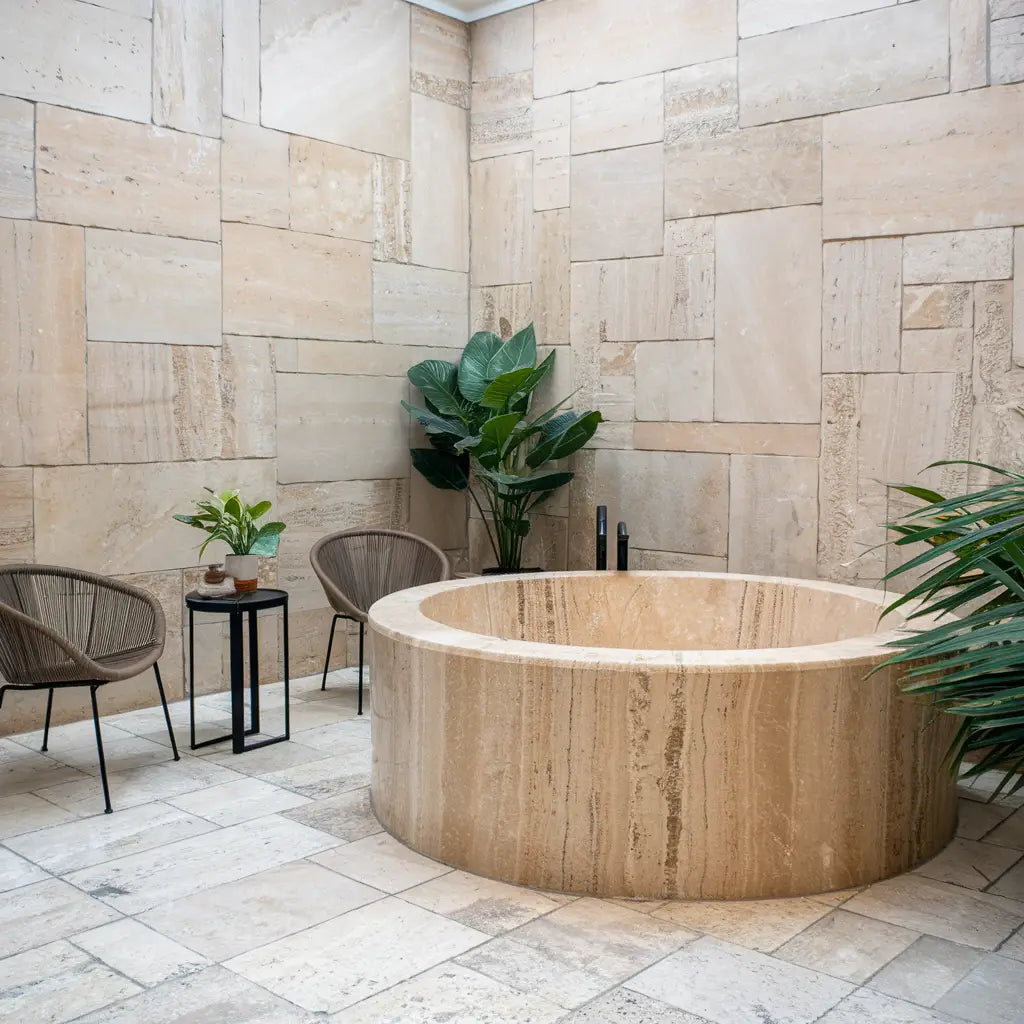 Travertine Tiles
Travertine Tiles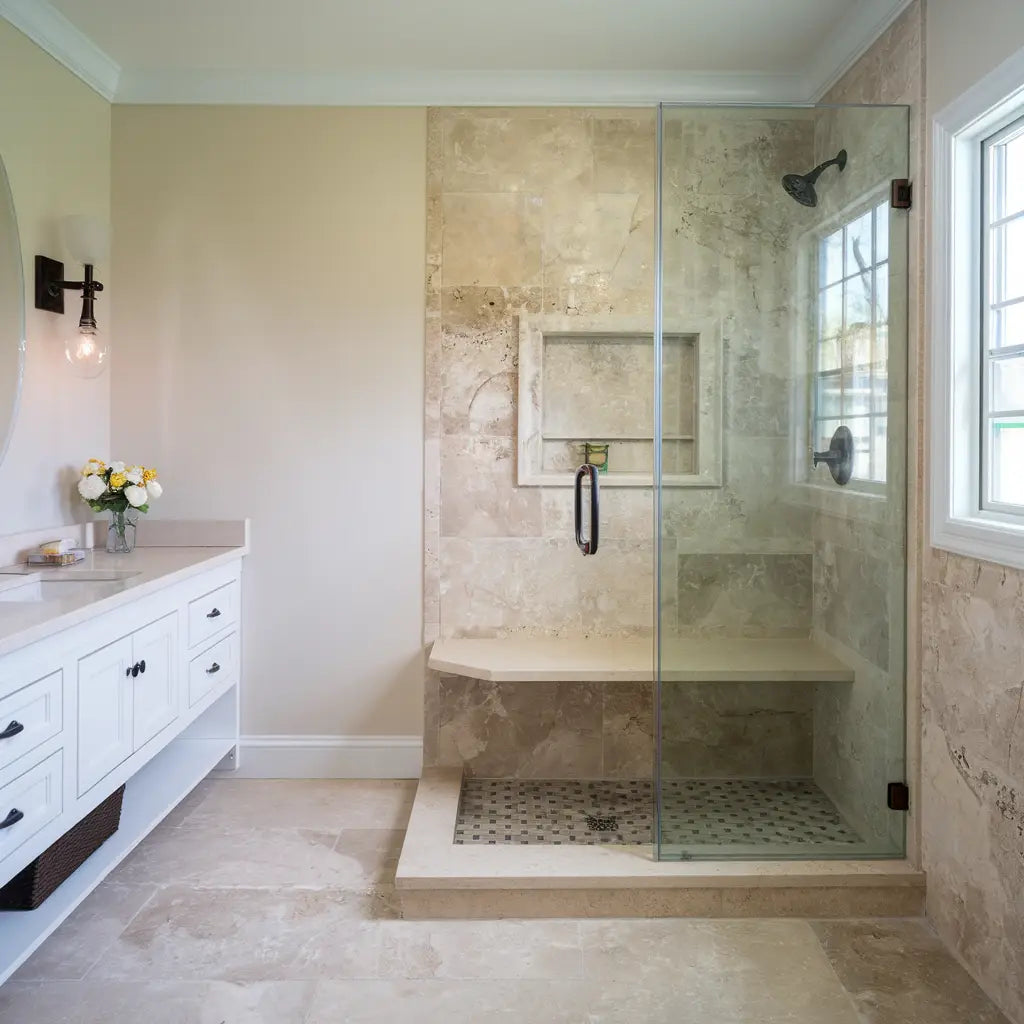 Travertine Mosaic
Travertine Mosaic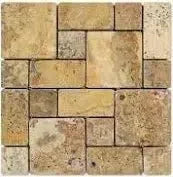 4 pcs Versailles Pattern / French Pattern Set
4 pcs Versailles Pattern / French Pattern Set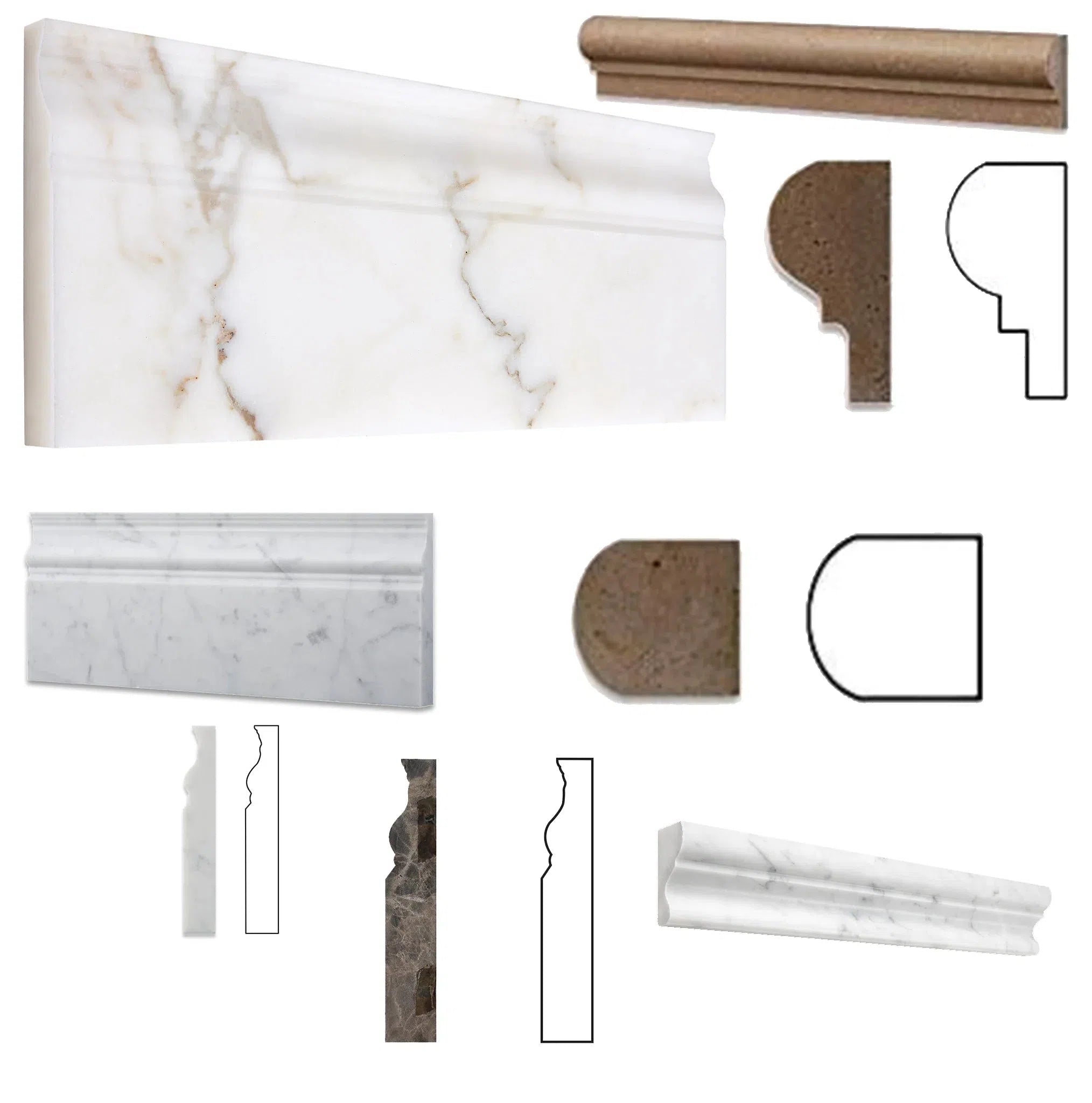 Molding/Trim
Molding/Trim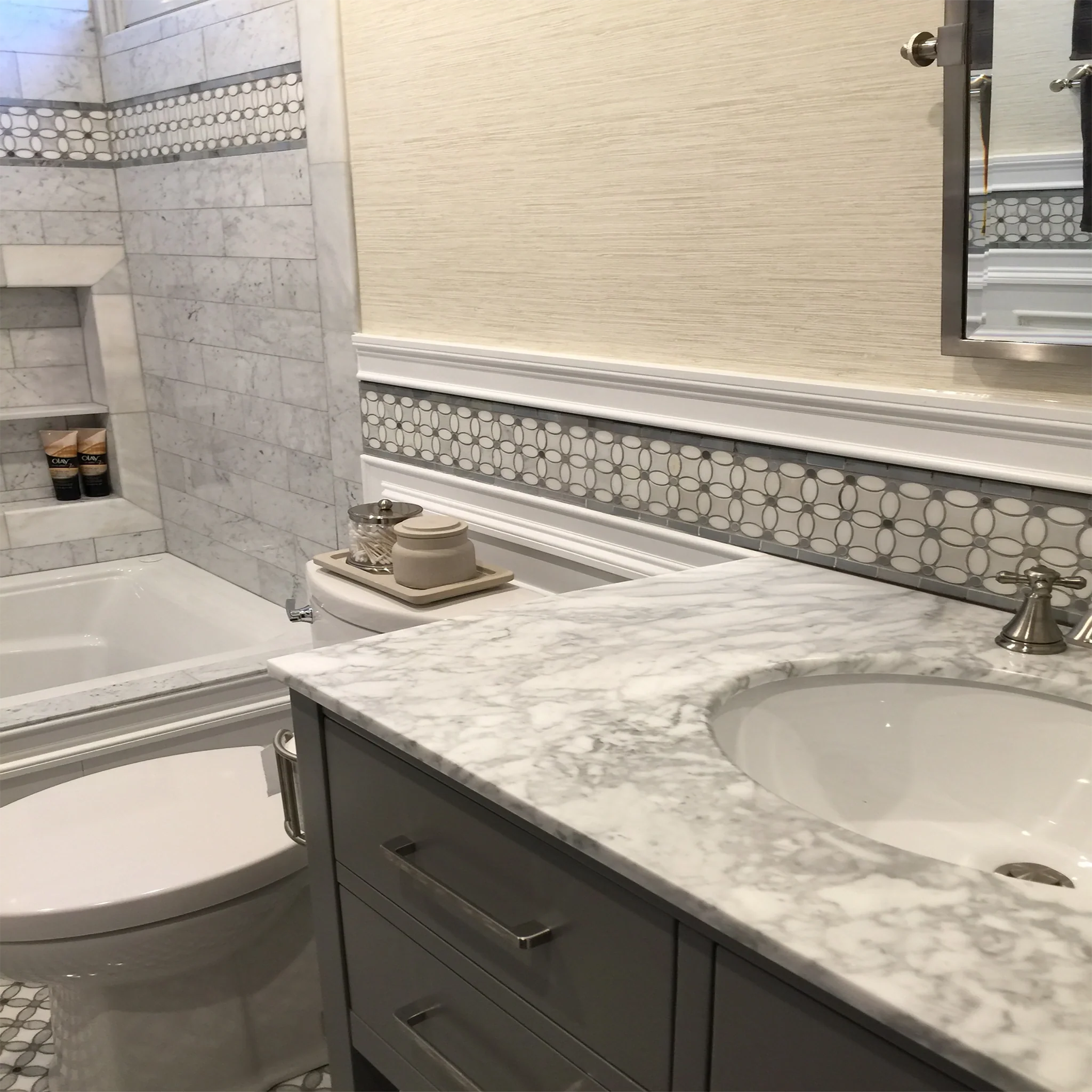 Border/Listello
Border/Listello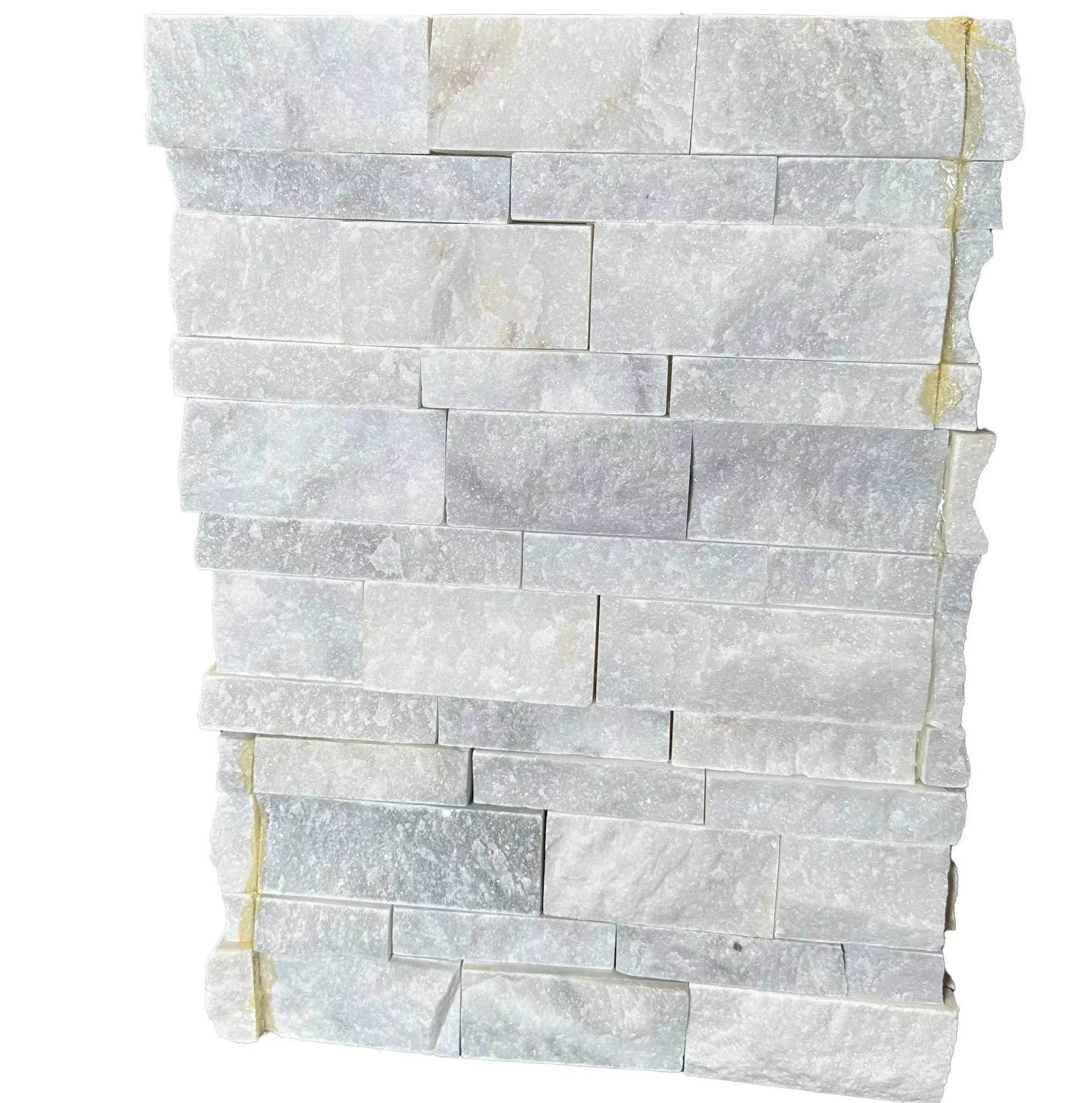 Ledger-Panel
Ledger-Panel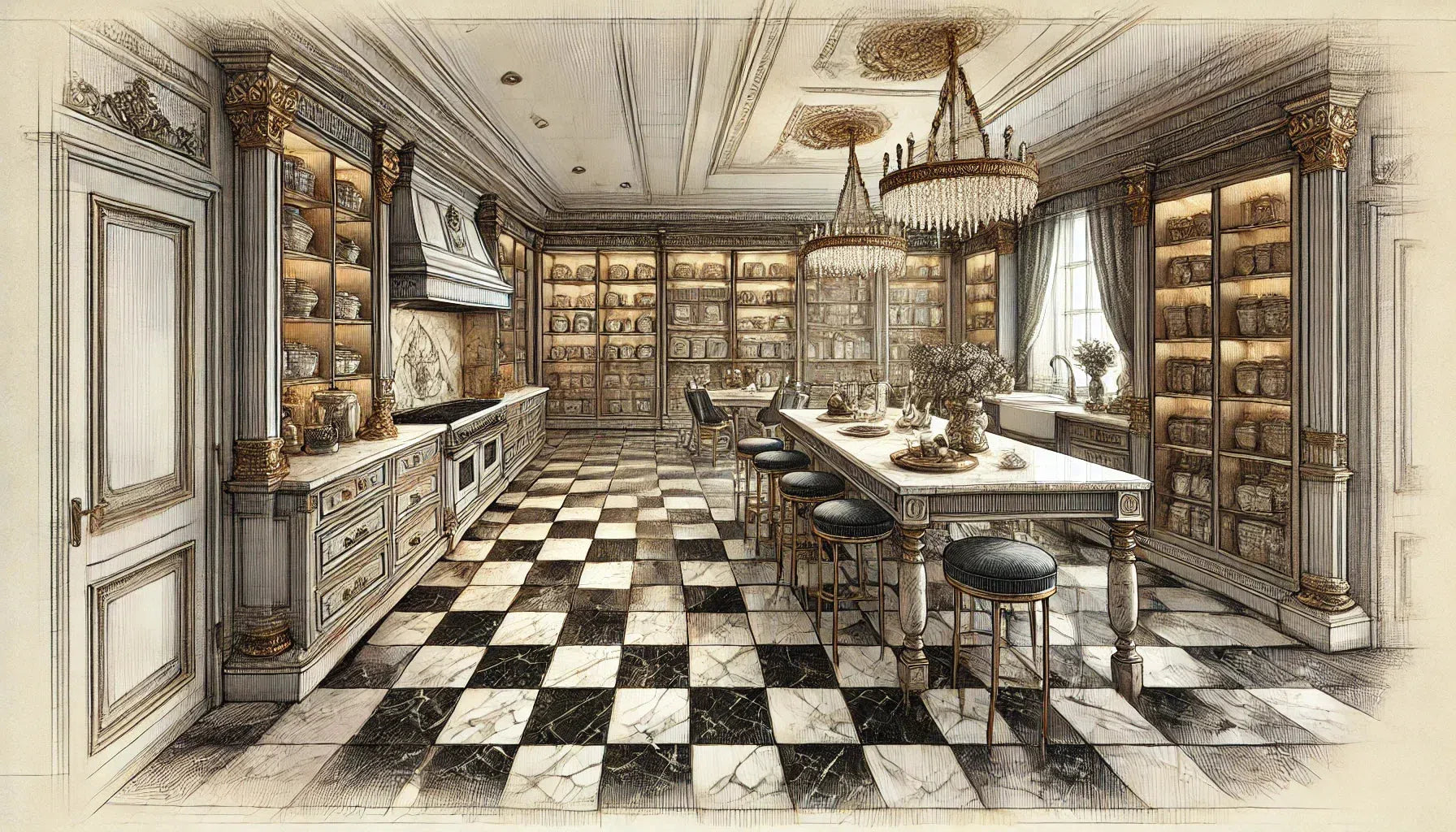 Checkerboard
Checkerboard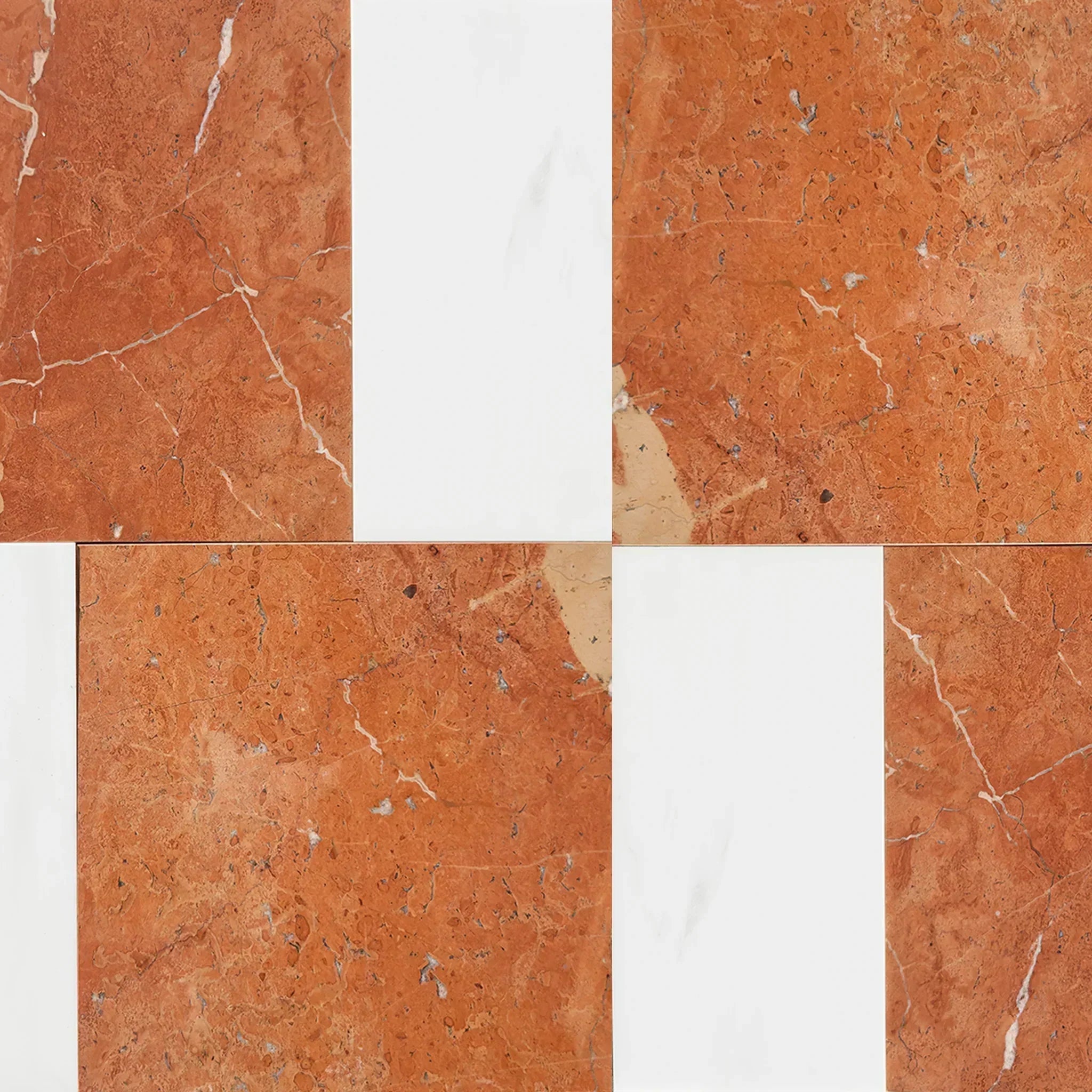 Patterned Tile Collection
Patterned Tile Collection 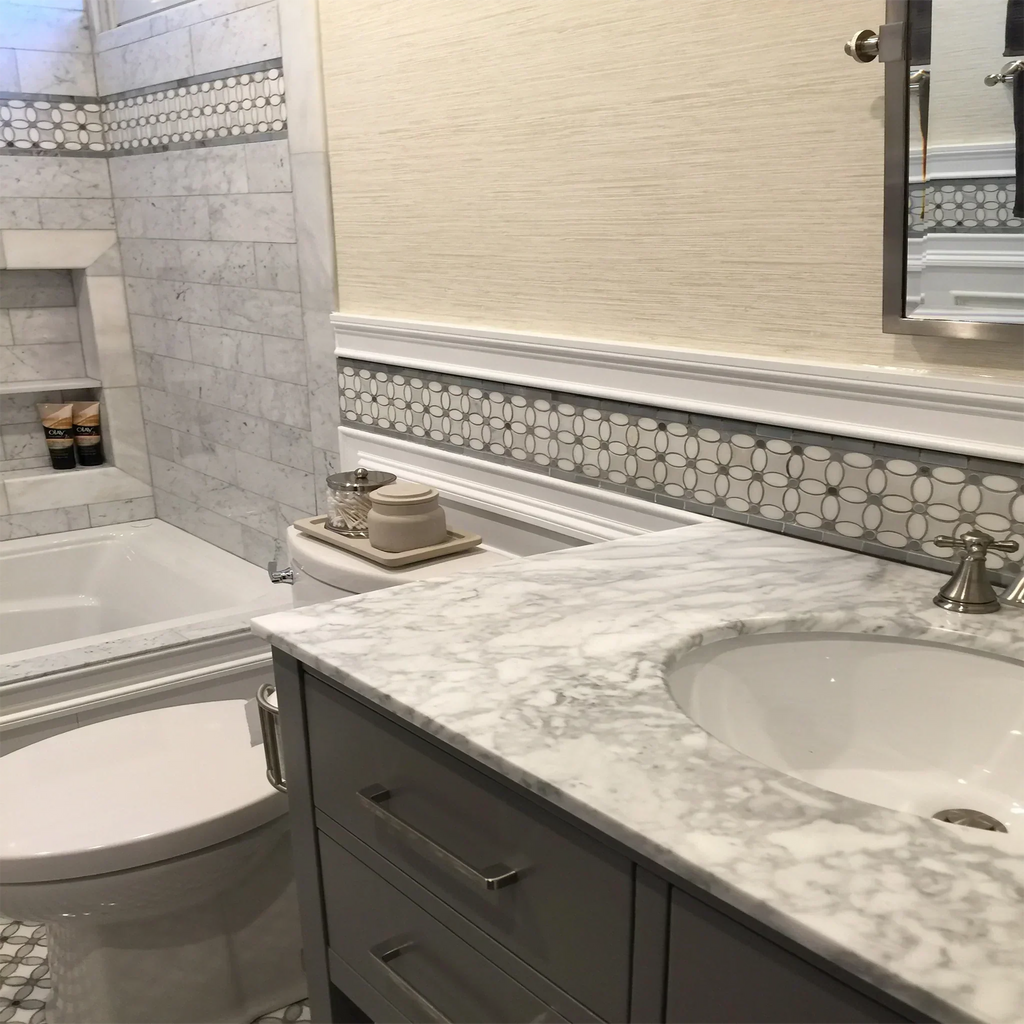 Shop By Finish
Shop By Finish
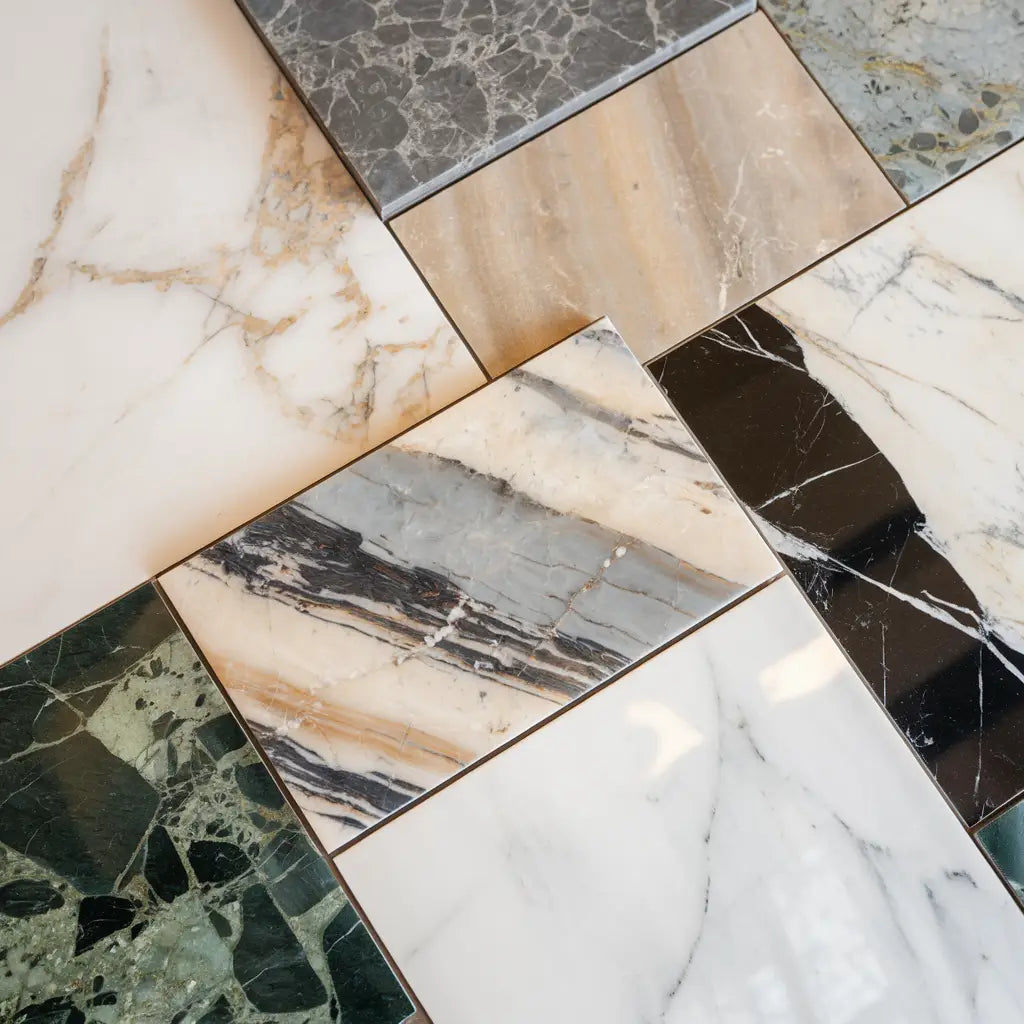 Polished
Polished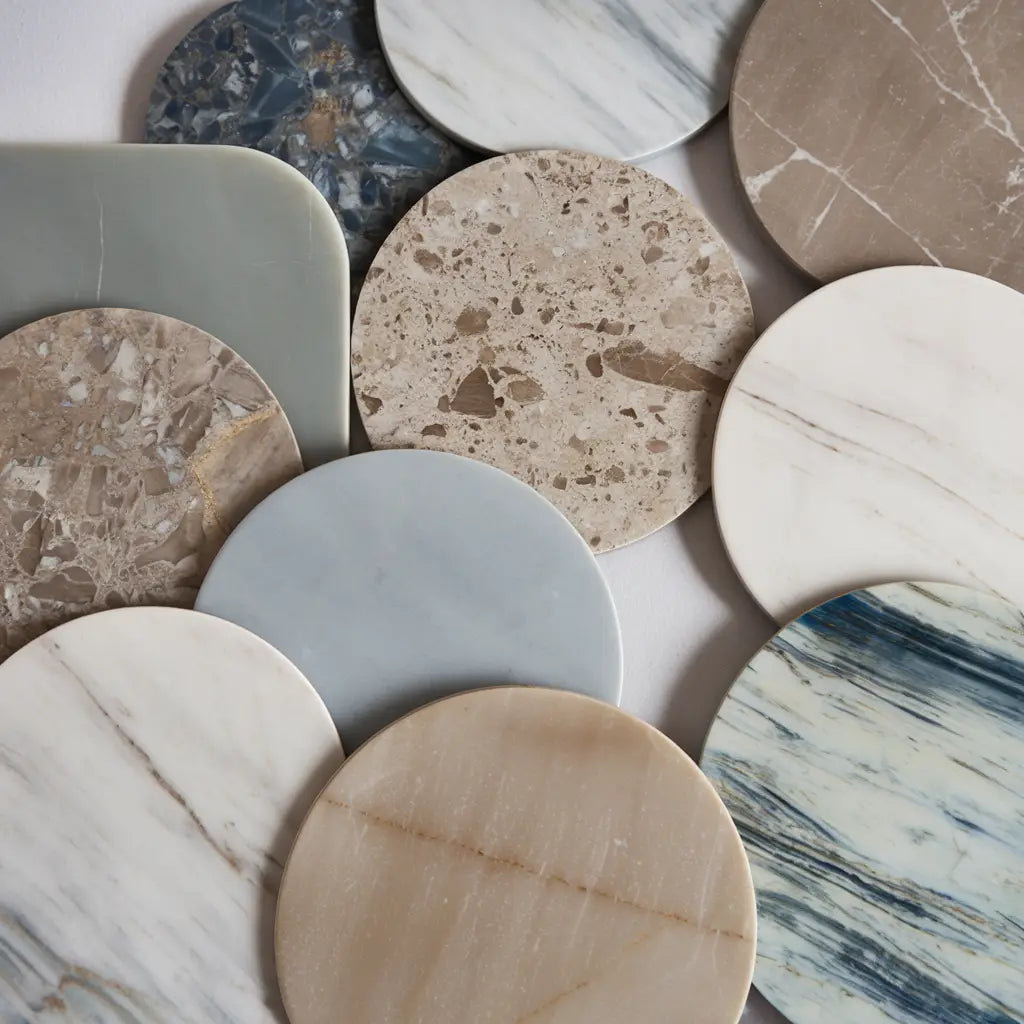 Honed
Honed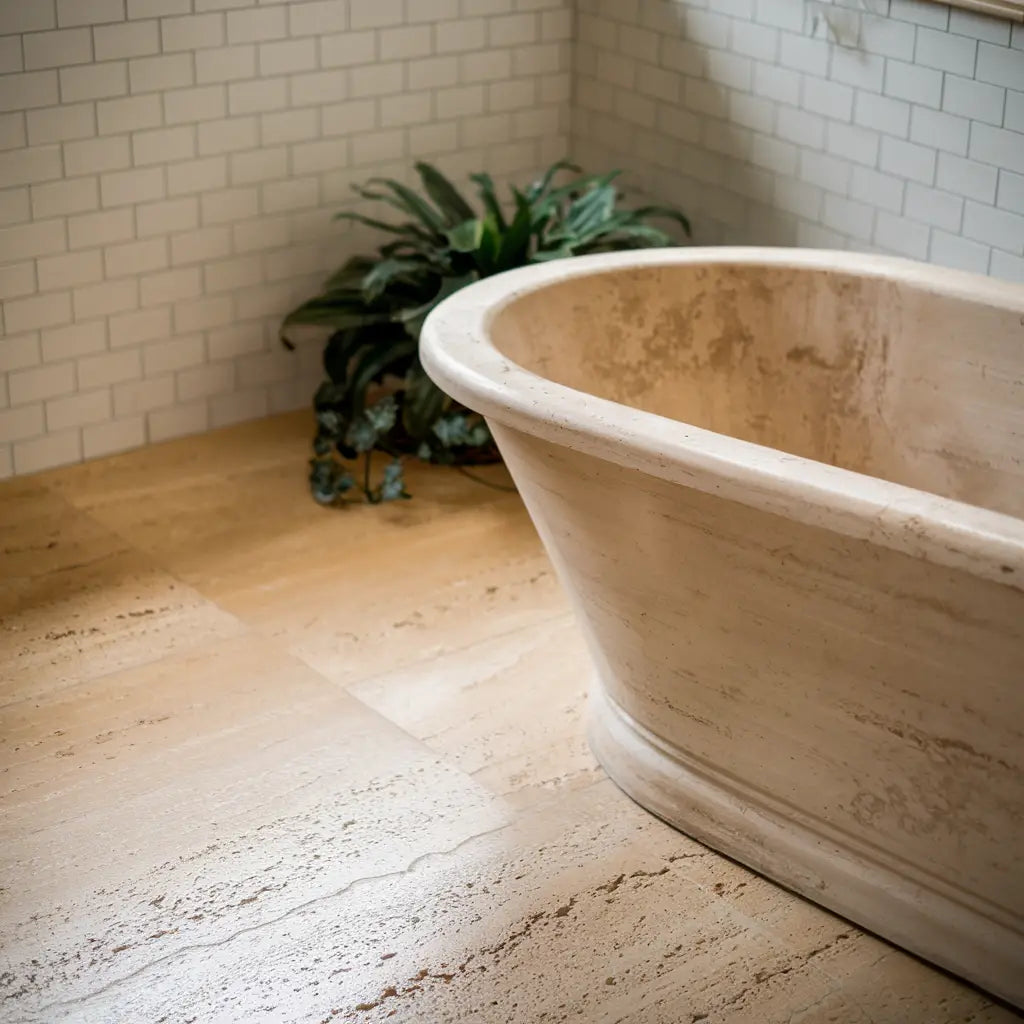 Brushed
Brushed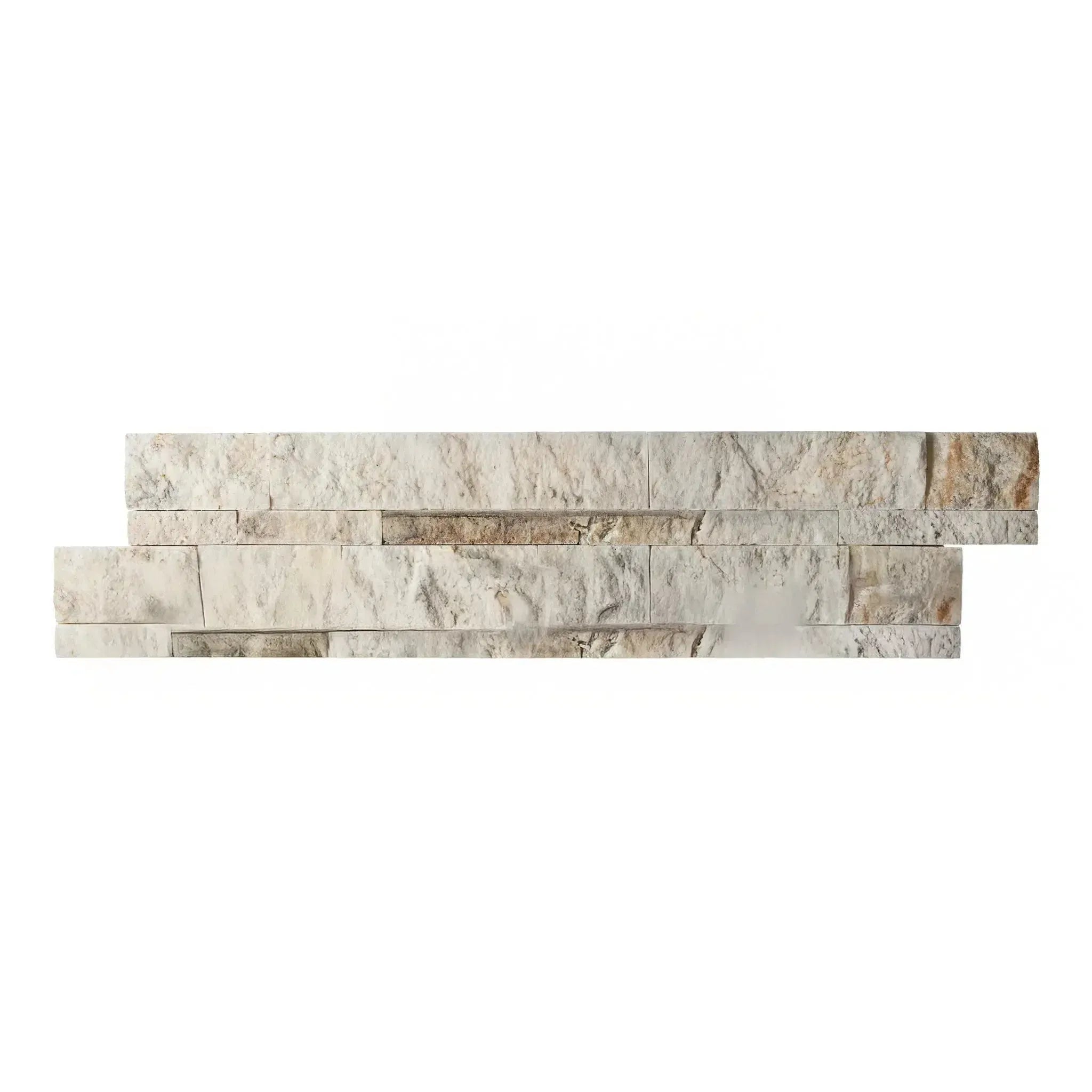 Split Face
Split Face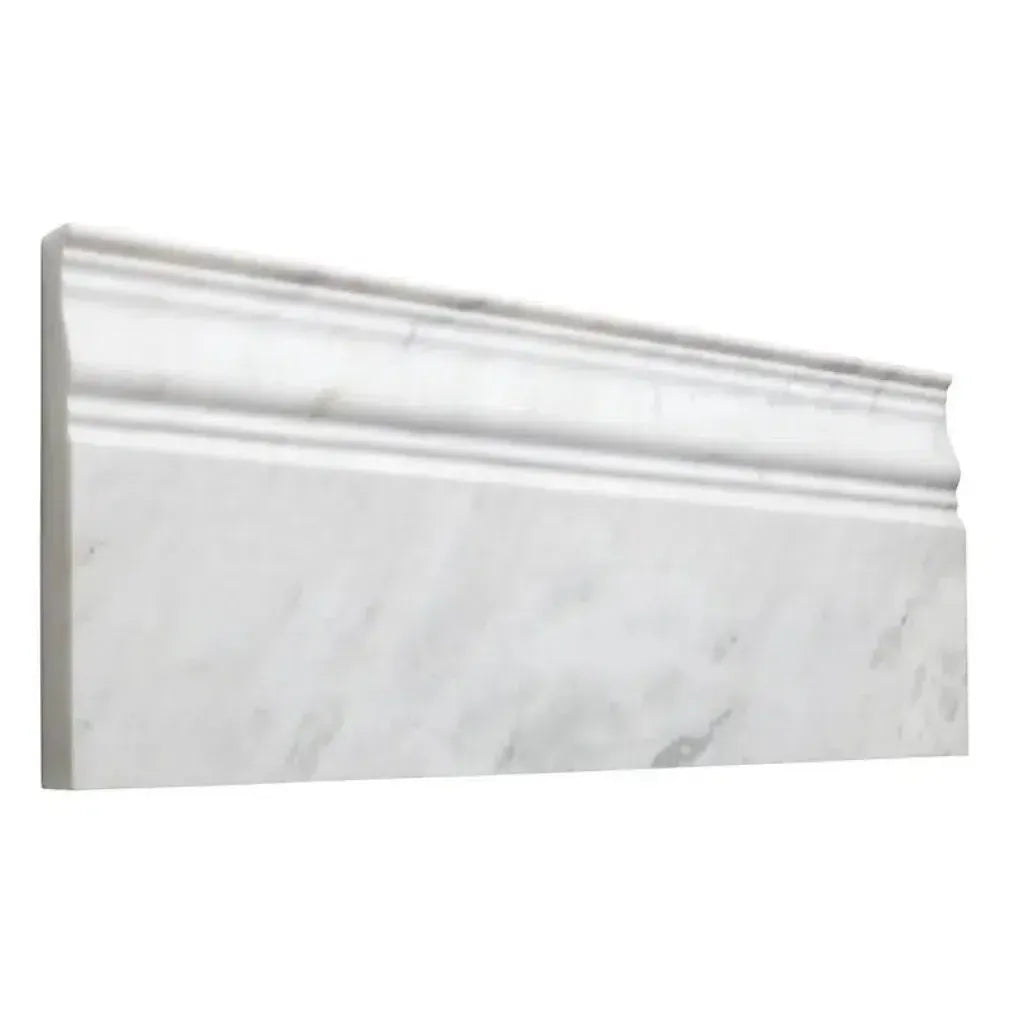 Textured
Textured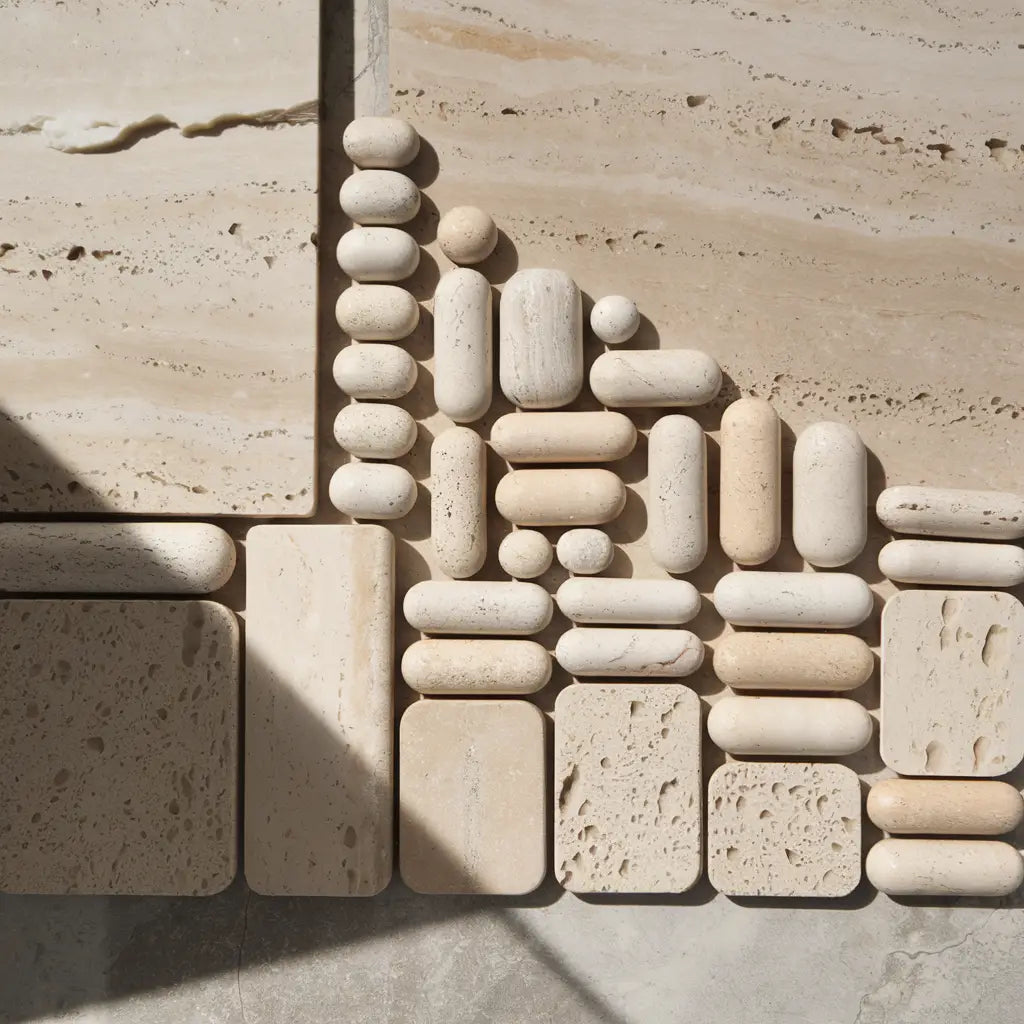 Tumbled
Tumbled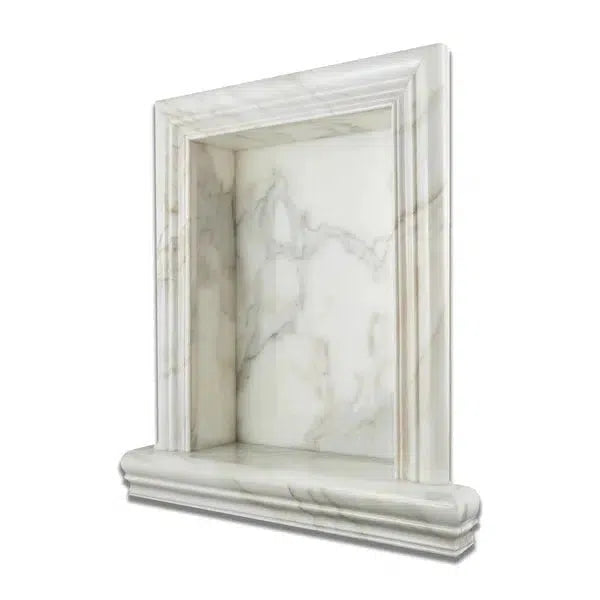 Accessories
Accessories
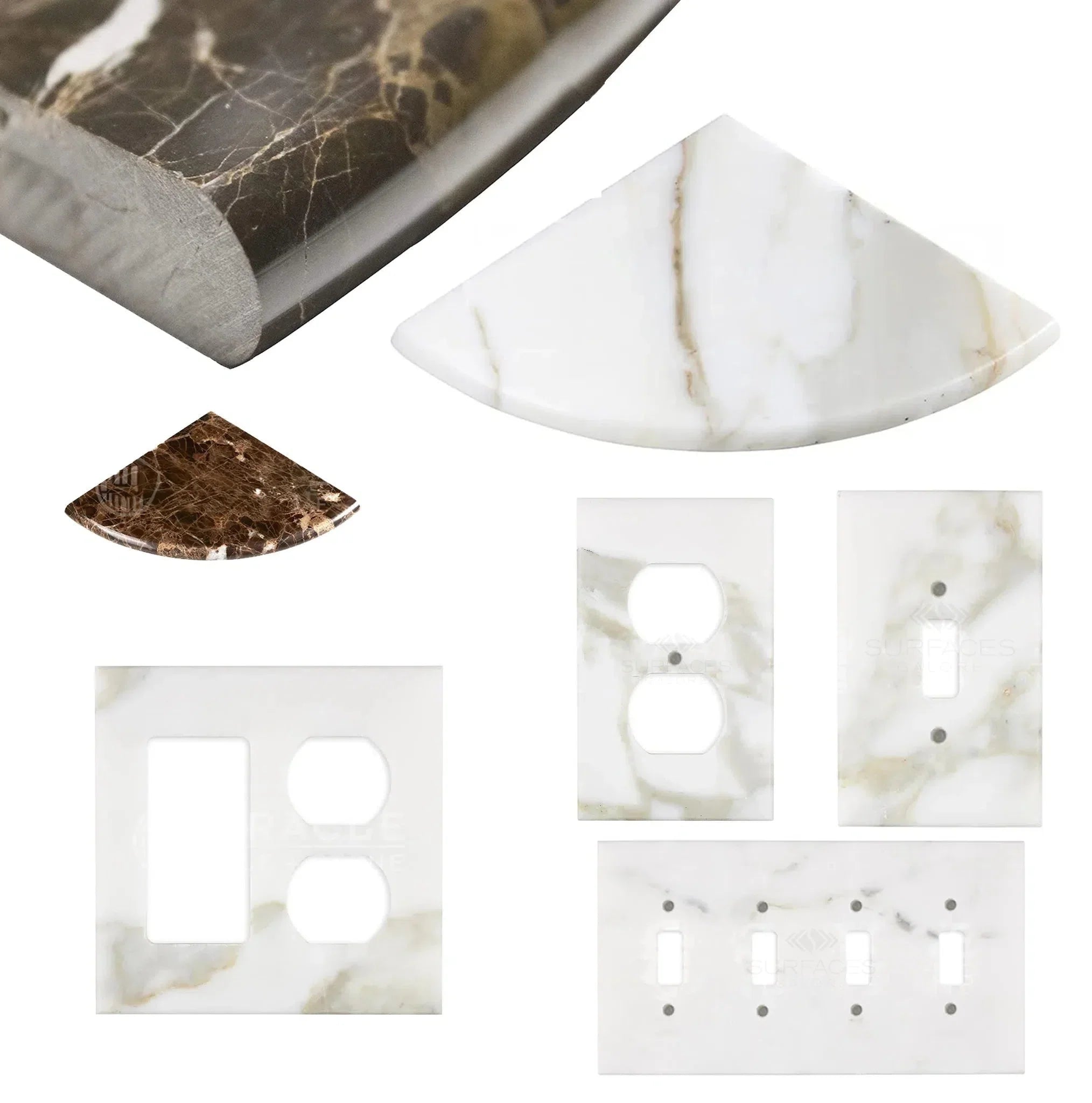 Wall Plate / Switch Plate
Wall Plate / Switch Plate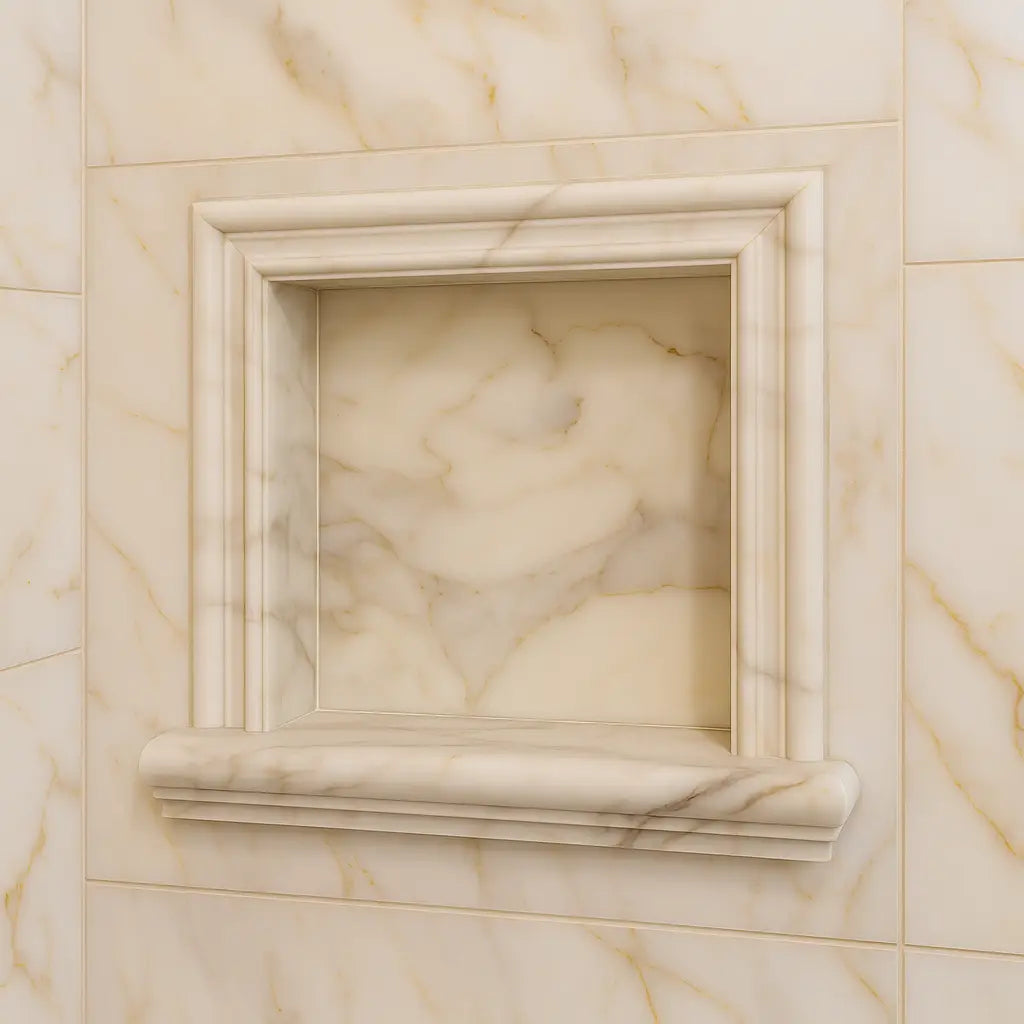 Shampoo Niche
Shampoo Niche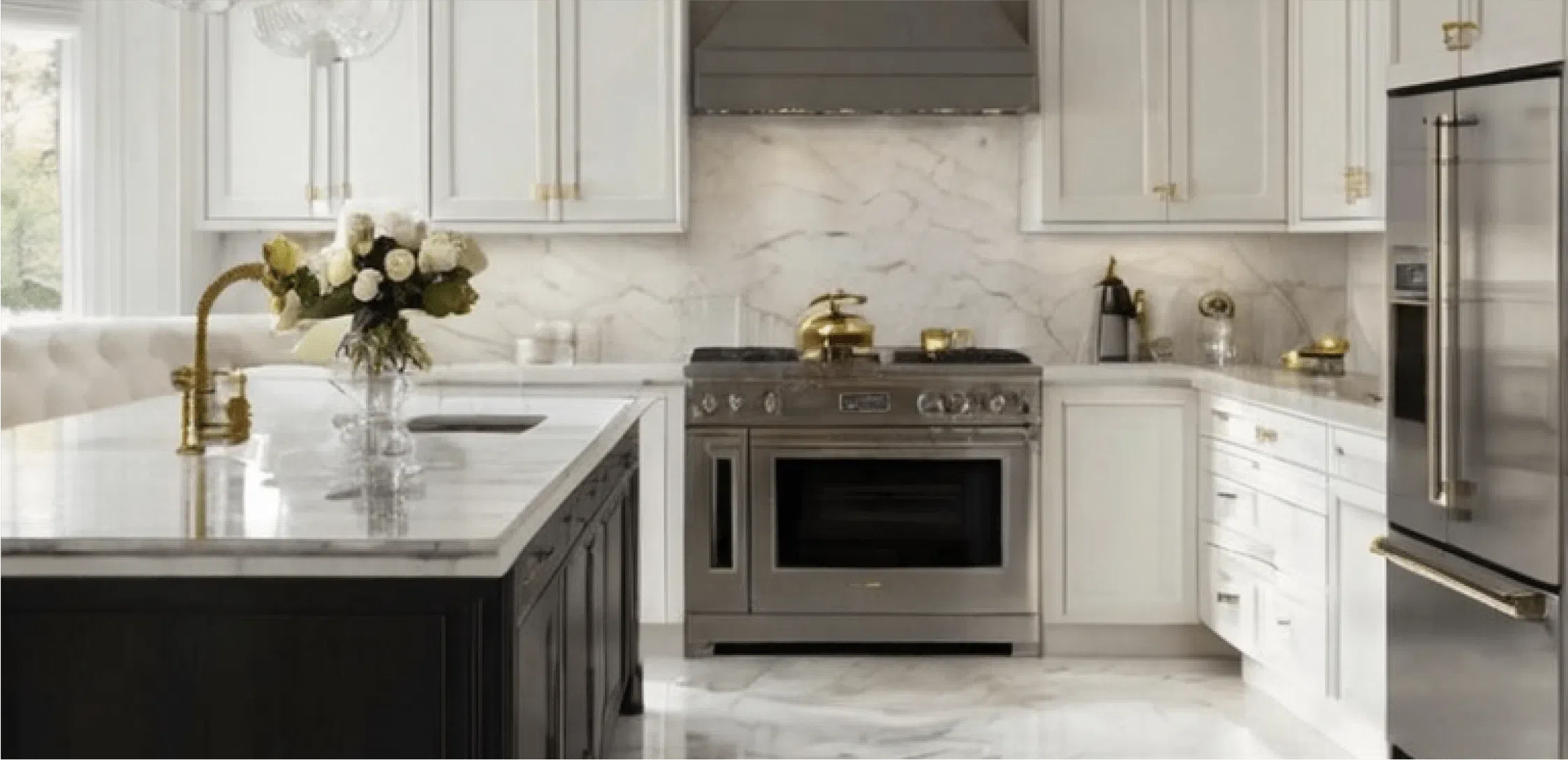 Corner Shelf
Corner Shelf Clearance
Clearance





Leave a comment